Speech for Joining a Company as a New Manager


When you join a company as a new manager, the core requirement of your introductory speech is to show the qualities that will encourage and enable your staff to be successful. Your speech needs to convey your aims and illustrate how you will be an approachable, inspirational leader.
Your first speech as a new manager is terribly important because it will shape your employees' opinion of you and so have a great impact on your achievements in your new role. You do not want to sound like the boss from hell, nor do you want to come across as a pushover.
Use the following tips and template to help you strike the right balance.

Preparation for Your New Manager's Speech
Template for your new manager's speech, 1. introduce yourself.
- Gather everyone together
- Introduce yourself in a suitable manner
- Say you are excited to be working with your new team
- Give a brief personal/professional history
Example: I wanted to gather you all together to introduce myself and tell you a little bit about my plans for (company/department name). As some of you may already know, my name is (name) and I have joined (company name) as part of the new sales-focused initiative. I have been told that you are an enthusiastic, results-driven team and I am looking forward to utilising your talents for the benefit of us all. I come from a high-value sales project background and will be introducing some new projects to help us reach our potential.
2. Make Your Aims Clear
- Highlight your aims for the team
- Make it clear that you are approachable and fair
- Explain how you will get the best from your team
3. Build Loyalty and Shared Expectations
In order to empower and encourage your new team to work as hard as possible, they need to want to work with you. You need to come across as a manager that will fight their corner and support them as individuals. You do not need to be ‘one of them’ as, after all, you have to manage them, but you do need to build loyalty and shared expectations. By finishing your speech in this way, your new team will leave the meeting on a high and feeling positive about their new manager.
- Show that you will support your team
- Conclude with a positive message
Example: I am sure that we can work well together and I know that you are all capable of a great deal. I am here to help you reach your potential so I’m relying on each of you to prove me right!
New Campaign?

404 Not found

New Manager Introduction Speech
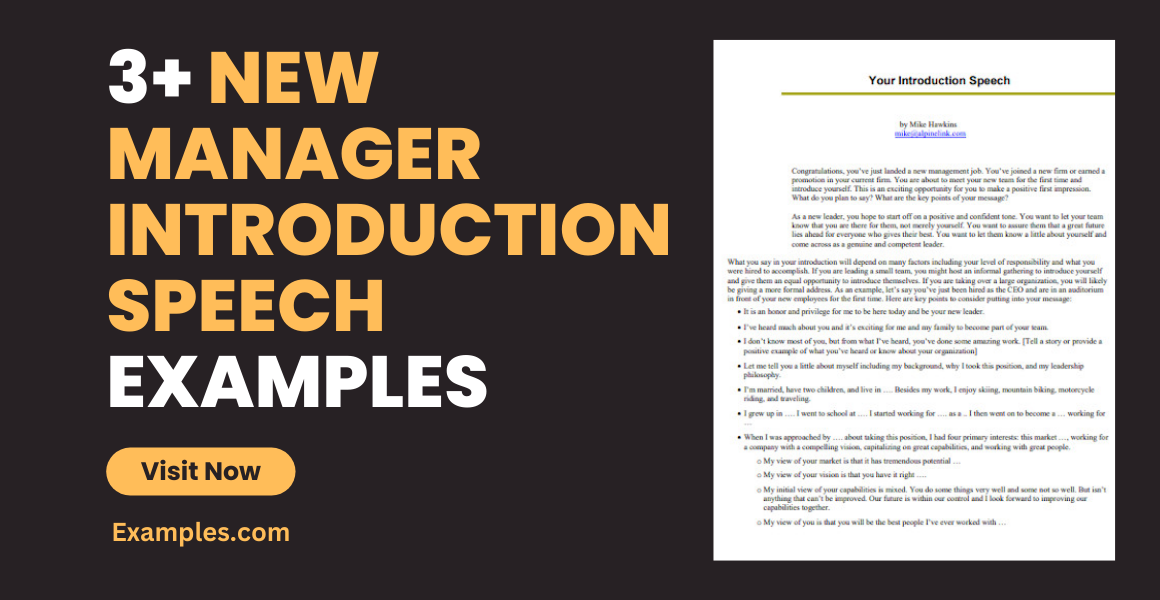
Saying goodbye to an old colleague and manager can be depressing, but getting to know a new manager in a company is an exciting and important event. As this involves the company as a whole who will be knowing someone who is going to lead them. For a new manager to introduce themselves through a speech is the best way to express how they feel about the new role and how they want to be seen through the eyes of their new colleagues. Writing an introduction speech is simply as easy as 1 2 3 especially if you have an idea as to what you want to let people know about you.
3+ New Manager Introduction Speech Examples
1. sample new manager introduction speech.
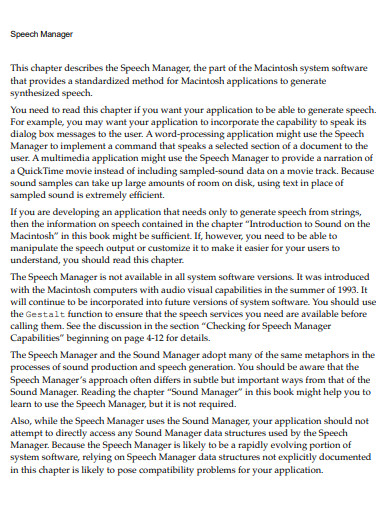
Size: 357 KB
2. Basic New Manager Introduction Speech
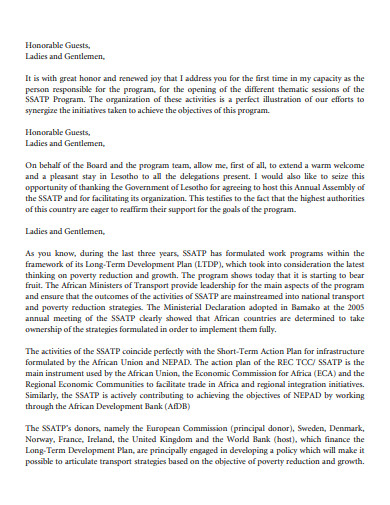
Size: 31 KB
3. New Manager Introduction Speech Example
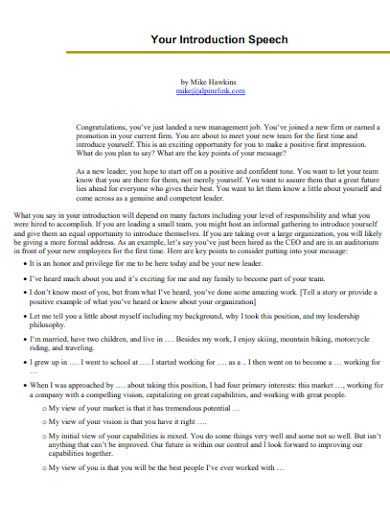
Size: 47 KB
4. New Manager Introduction Speech in PDF
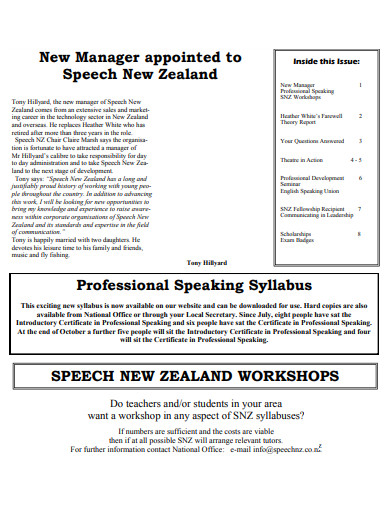
Size: 663 KB
Defining Manager
A person who is in charge of a company. An individual who conducts business. A professional who works at a company. A person who directs a team to do something.
Defining Introduction
The beginning of anything. The genesis of a speech, a story or any literary piece. This also refers to the start or presenting something or someone new. To shove a new idea or a lesson.
Defining Speech
This is defined as a way of using words to express. A public discourse wherein people engage in sharing opinions and ideas of a topic. A spoken language that an individual or a group of people use to communicate with one another.
Defining Introduction Speech
An introduction speech is used to get to know a person or a group of people. This is used to tell individuals a few key points about you. To welcome someone new.
Tips for Presenting Introduction Speech
- Maintain Eye Contact: Do not let your eyes wander around the whole room. Nor avoid making eye contact with someone from the audience. The reason for maintaining eye contact is to show your audience you are happy to be there, and you welcome them as well. Avoiding eye contact will send a different signal towards your audience.
- Stand straight: Slouching while making your speech also sends the wrong signals towards your future colleagues. To show that you are happy to be here, stand up straight. This way, your audience can also look up to you as a person to be trusted. A leader .
- Smile: A smile can easily turn the whole atmosphere around.
- Make them feel welcomed: Make them feel welcome and thank them for coming to your introduction speech.
- Use appropriate language and gestures: When presenting your speech, you may use hand gestures but avoid the most inappropriate ones as well as avoiding rude language.
What tone should a farewell speech be?
A farewell speech for a manager or a boss can be both joyful and sad. It is a mix of understanding that this person has to leave and also to be happy for the person on their next chapter in life.
As a manager, do I need to add my job history to my introduction speech?
Not necessarily. All you have to do is to introduce yourself, say some things about you, express how happy you are to be working with your new colleagues, and stating about a future of employment with them. Make your colleagues feel comfortable as well as be open to them when you make your speech.
In an introduction speech, do I need to mention my managerial credentials?
You may mention some but not all as it may sound too long and your audience may lose interest. Also, when you read out loud the credentials, do not sound too humble nor too arrogant. Professional tone must be used at all times.
How do I write a good ending to my introduction speech?
Simply write why you think you are a good fit for this position, thank everyone for meeting you today, and say you look forward to working with them.
A managerial introduction speech consists of your introduction on the first paragraph, your credentials, aspirations, high hopes on the second paragraph and the third paragraph you write your thank you. Professional tone and manner should always be observed when writing and presenting your introduction. Stand straight, maintain eye contact, and avoid unnecessary information and actions.
New Manager Introduction Speech Generator
Text prompt
- Instructive
- Professional
Create a new manager introduction speech for the sales team
Help me write a new manager introduction speech for the IT department
404 Not found
- Career Options
- Mental Wellness
- School Students
College Students
Working Professionals
- Counsellors
- Special Features
- The Mentoria Blog
How To Introduce Yourself As The New Manager
Komal Sharma

Jump to Section
Integrating a new position within a company, as a manager, is not always easy. Indeed, taking up a position can be tricky, because you will not only have to introduce yourself to your team but also do your best to make a good impression. It is then strategic to determine in advance how to introduce yourself to your new team. In this article, we’ll give you some tips that will come in handy when meeting your team for the first time, then we’ll tell you why the first impression is important and what you can do to make it a positive one.
What Type Of Boss Do You Aim To Become

If you have been promoted at work and it is the first time that you are a boss, in addition to having defined what is expected of you in this position, one of the most important questions is to think about what type of boss you would like to be. There are many types of leaders and each of them has certain characteristics like The best leaders are able to inspire, encourage, and guide a team of workers and a business toward success. While some leaders might only care about their personal success, whether some others are enthusiastic and motivated to see their team members and business succeed or some arrogant boss who claims credit for your hard work or some meticulous perfectionist that demands that you redo everything you just finished twice. Focus on exercising your leadership in a clear, firm, professional, and fair manner.
Mastering The Art Of Team Introductions: Tips For New Managers
Meeting the team is one of the tasks that can make you the most nervous. To avoid this, we recommend that you rehearse a friendly and approachable presentation, introducing yourself as a manager, colleague, and person with whom you can work as a team. In your presentation as a leader, do not forget to show respect, humility, and active listening.
Is this your first time as a manager? Your new role as a leader must have several lines of action marked, but one of them, if not the most important, is that each member of your team sees you as an ally.
Managers must show their teams a professional image which includes the way of dressing, expressing and communicating and there must be congruence between physical appearance, what is said and how one acts. If it looks hard at first, all you need to know is how to do it. You will find the following advice useful.
Choice Of Speech For The First Day Of Work As A Manager
The first step to calmly approaching your first day as a boss is to introduce yourself. The first step in introducing yourself as a new boss is to make a good impression. This means behaving professionally and showing enthusiasm for your work. Establishing a relationship of respect and trust with employees is key to success in the position.
You must have your first speech as a team leader prepared, mention the objectives, and how you plan to work, and address topics that motivate the workers.
Don’t forget to give your turn to speak and let them ask you questions to get to know you better. Being a manager or team leader is not easy and therefore, the more you prepare, the better.
Be punctual, plan and organise all your ideas. This way you can make a list of tasks, see what has to be done in the long term and short term, and set priorities together with your team, as well as objectives and goals.
Give Prominence To Team Members

On the first day as a manager or boss, you will have a meeting to present your new professional role, your nerves will be on edge, but try to take advantage of the opportunity and be natural, and approachable.
Focus on getting to know team members, and show interest. You must be aware that now you are not only responsible for yourself, but for perhaps between 6 and 12 people who make up a work team and for the results you produce.
Lay The Foundations In Communication
If you doubt how to be a good group leader, remember to prioritise communication , and feedback and show as a manager that you are happy with your workers. This way you will work on motivation and your team will know the perspective you have of each of them and what you expect.
Working on manager-employee communication can be enhanced through a variety of strategies, including weekly meetings, frequent one-on-one meetings , information sharing, getting to know your manager, using communication tools, and soliciting and providing feedback. This is another easy tip to help you survive your first day as a manager and the ones that follow. Also consider a number of techniques to improve patience, communicate clearly, define goals, and fulfil what was promised and spoken at meetings.
Delegate Work Efficiently
It is true that sometimes it is difficult to be aware of all the work at hand, and that this can take its toll on your team. To avoid this, make lists, use a task organiser to capture all the work and projects that are started, and learn to divide the workload among team members equally.

A good presentation from a manager should go hand in hand with a roadmap, as well as knowing the functions and strengths of each employee, as well as identifying those goals that can be improved.
Having the ability to manage a team with these tips and planning becomes a much simpler and more bearable challenge.
Learn About The Company
Investigate the company further as soon as you accept the job offer. Knowing precisely what role you and the team you are leading need to play will be made possible by this. Nonetheless, refrain from searching for details about the team members. This could have an impact on future collaboration as you run the risk of entering the office with preconceived notions about some members.
Asking questions about your role and the goals, difficulties, and responsibilities of the company is a good place to start. Go to the company’s website to conduct an online search as well. By doing all of this, you can avoid coming across as ignorant to your team.
Dress Professionally
As you research the company, be sure to ask about its dress code. If you want to make a good impression , you must dress according to the prevailing style of dress in society. For example, it would be a shame if you dressed formally when the style adopted by the company is super casual. You risk appearing pretentious.
Gather The Team And Introduce Yourself
When you join a new company, your team members are the first people you should meet. So ask the team to come together so that you can introduce yourself properly by giving details about your qualifications, abilities, and work history. Employees will be able to see you as a trustworthy leader and learn more about you as a result.
It is important to make your presentation according to the company environment. Your approach should match the company culture and values. For a new manager in a team, the ideal is to introduce themselves by giving a certain amount of information about their experience and expectations.
For instance: “Hey everyone! I’m X, and I’m delighted to meet you. I’m your new manager. I used to work for Y for five years, during which time I was also manager. Despite having a great deal of experience in my field, I am unable to achieve excellent results on my own. For this reason, I need your complete cooperation as well as your professionalism. We can accomplish outstanding results if we understand the importance of working together as a team.”
Adopt The Right Attitude
The best way to create a strong, positive first impression is to greet your new team members with enthusiasm by Initiating a casual conversation, expressing excitement about working together, or by Offering assistance with onboarding tasks, showcasing a helpful and supportive attitude. Don’t be angry or unhappy. Instead, show your best smile and show your colleagues that you are happy to meet them. Even if team members are distant from you, be understanding and show that you want to connect.
Avoid Speaking Ill Of Your Predecessor
Your predecessor may have committed certain mistakes that are known to all. If this is the case, avoid commenting on them or reminding the team of them. Indeed, you were not hired for this purpose, but rather to help the company achieve its objectives. Additionally, if you speak badly about your predecessor, team members will resent it and may perceive it as completely gratuitous aggression. Under no circumstances will you be able to win their sympathy by discrediting your predecessor.
Don’t Criticise The Company
Don’t present yourself as the saviour who will solve all the company’s problems. Indeed, what was done before your arrival is in no way null and was done within the framework of well-defined objectives or strategies. So avoid criticising everything that was done before your arrival. You should also avoid criticising the company’s equipment. For example, don’t make comments like: “The furniture is really old here.
Ask Questions
After your oral presentation, you can keep the conversation going by asking your colleagues questions. This may allow you to create a certain relationship. Above all, be sure to ask work-related questions. You will learn a little more about your new workplace and the challenges that await you there.
Listen To Others

Don’t just burst in and start changing things without asking your colleagues for advice. You need to listen to others before speaking. Ask questions, if necessary, to get the opinions of others. By using this approach, you will be able to attract your employees. Indeed, they will appreciate the fact that you ask them for their opinion before making decisions.
Assume That You Are Starting A New Cycle
Certainly, your past participated in the construction of the person you are today, but that is not a reason to constantly bring it up. From your first meeting with your team, avoid talking too much about your old company or referring to it all the time. This could slow down your integration into the team. Also, avoid making comparisons between your old company and your new one. There may be things that went less well at your previous company. Either way, don’t complain and accept things as they are.
Throughout Your Presentation, Stay Authentic:
Be yourself. Don’t try to pass yourself off as someone you’re not. On the contrary, you risk ruining everything. After this first meeting, try to obtain the company’s organisation chart to remember the name and position of each of your employees.
The Power Of First Impressions: Why They Matter In Every Interaction
When you meet someone for the first time, they get their first impression of you just by looking at you: it’s the first impression. To form this impression, people generally consider your clothing, your posture, your voice, and the words you use.
For example, if you use chatty language, your interviewer will immediately think that you have no education And if you were applying for a job, it could very well work against you. In addition, people appreciate certain qualities such as honesty, kindness, empathy, and even respect.
If your appearance leaves something to be desired, your interviewer will give you little respect. And as popular belief goes, the first impression is often the last. If you make a bad impression from the start, you will have little chance of recovering; the members of your team will give you a label that may affect your future relationships and the respect that others will have for you. They might not even recognise your authority as a manager. The first impression is everything: it can define the course of your relationships with your colleagues.
Shaping First Impressions: Easy Ways To Make A Positive Impact
When someone first meets you, they pay attention to your appearance, your face, your posture, the tone of your voice, and the words you use. You can therefore influence a first impression by playing on these elements. If you want people to have a good impression of you from the start, follow these simple tips.

Take Care Of Your Appearance
To make a good impression, take care of your appearance. You not only need to take care of your body, but also your wardrobe. Take up sport and maintain your body. This will show that you care about your health. Take care of your clothing by remaining simple, but elegant.
Take Care Of Your Face
It is also important to take care of your face. Go to the hairdresser, always have clean and styled hair. If you are a woman, avoid wearing too much makeup. Never have a closed face; instead, be happy and enthusiastic.
Adopt The Right Posture, Speak Clearly, And Choose Your Words
By adopting a good posture, you will show that you are confident in yourself. Avoid shaking or gesticulating for no reason. Always stand up straight. When you speak, don’t speak too loudly or too quietly. Your voice should be clear, crisp, and audible. It must not wobble under any circumstances. Choose your words carefully: avoid vulgarity and speak using a fluent, even sustained register.
Unveiling Your New Managerial Journey With Mentoria
The first meeting with your new work team will undoubtedly strengthen or destroy your image in the eyes of your people.
Your success as a manager will largely depend on the quality of these first impressions in your first meeting with your people. Don’t miss the opportunity to prepare and develop it well.
Discover your strengths and areas for growth with Mentoria’s career guidance . Whether you’re looking to excel in your current role, explore a new one in your industry, or switch to a completely different field, our counsellors will create a personalised action plan for you. With 3 streams, 850+ courses, and 12,000+ careers, we help you find your perfect fit. Call us to speak with career mentors and kick-start your journey toward a happy and successful future.

Choose your ideal path from 12,000+ career options.
Related Articles


- SUGGESTED TOPICS
- The Magazine
- Newsletters
- Managing Yourself
- Managing Teams
- Work-life Balance
- The Big Idea
- Data & Visuals
- Reading Lists
- Case Selections
- HBR Learning
- Topic Feeds
- Account Settings
- Email Preferences
Introducing Yourself as the New Manager
- Anke Thiele

Your first impression counts — a lot.
When forming first impressions, people usually evaluate two factors: competence and trustworthiness. If the initial impressions your team members are forming about you are unfavorable, it can have long-term consequences. Your introduction is about setting the tone for successful working relationships and a positive team culture right from the beginning. If you take the time to prepare for it, it will up your chances of getting it right, and the benefits will last far into the future.
- Start with your intention. Based on what you already know about your new team, how do you want to come across? A general rule of thumb is to balance competence with warmth, two fundamental dimensions that account for the positive or negative impressions we form of people.
- Think about your leadership style. As a new manager, or someone just dipping your toes into people leadership, it can understandably be harder to know, let alone describe, your style to other people. Scan through any feedback you’ve received over the past year that has stayed with you, as well as personality or leadership assessments you’ve received or taken in the past. As you reflect on these, think about your strengths, values, and preferences.
- Create a one-pager. Based on your reflections, put together a “Who I Am and the Way I Work” one-pager, summarizing your key attributes. Start by giving your team a peek into your personal side. Then, focus on projecting your competence and balancing it with empathy. Next, shift into how you like to work. And finally, assure your team of your good intent to build trust and open the floor for questions.
One of my coaching clients (let’s call her Hanah) was joining a new company as a C-level product leader. She was a driven and focused, yet caring leader, and wanted to make sure she came across this way right from the start.
- Anke Thiele , MBA, MS Psych., MCC, is an executive coach and leadership consultant who works with senior leaders and their teams. She is the founder of The Human Link , a psychologist and certified meditation teacher, who has taught mindfulness at tech companies including Google for many years. She also works as a team coach and extended faculty at UC Berkeley’s Haas School of Business. Connect with her on LinkedIn .
Partner Center
404 Not found

Running Your First Meeting as a New Manager (With Examples)
By Status.net Editorial Team on December 18, 2023 — 10 minutes to read
As a new manager, preparing for your first meeting with your staff is crucial. Proper preparation helps set the tone and direction for your professional relationship with your team. Here are a few steps to help you prepare effectively:
1. Understand the Team’s Background
Before holding your first meeting, take some time to learn about your team members. Get to know their roles, responsibilities, and strengths. This information will help you identify areas in which you can offer support or guidance. You can gather this information by reviewing employee files, organizational charts, or by having one-on-one conversations with team members.
2. Set Clear Objectives
Determine the specific goals you want to achieve during the meeting. This may involve sharing your vision for the team, clarifying expectations, or discussing potential challenges and opportunities. Make a list of the objectives and prioritize them, so you can cover the most important topics first.
3. Prepare an Agenda
Organizing the content of your meeting by creating an agenda helps ensure that everything is covered in a timely manner. Your agenda should include:
- Introductions: As you are new to the team, start by introducing yourself and welcoming everyone to the meeting. Encourage team members to introduce themselves as well.
- Expectations: Clearly communicate your expectations and priorities. Discuss short-term and long-term goals for the team.
- Open Discussion: Allocate time for open discussion where team members can ask questions, voice concerns, or share ideas. This creates a culture of collaboration and open communication.
- Next Steps: Briefly outline the next steps and any follow-up items that need to be addressed.
4. Choose an Appropriate Venue and Time
Find a suitable location where you can hold the meeting without any distractions or interruptions. Pick a time that works best for most team members, and consider their schedules and availability.
5. Send Out Invitations
Once you have a plan in place, send out invitations with the date, time, and location of the meeting. Include the agenda in your invitation, so team members know what to expect and can come prepared with any relevant information or materials.
Setting the Agenda
Identifying key topics.
Before diving into the meeting, you should identify the key topics you want to discuss with your staff. This preparation will help you structure the conversation and ensure you cover everything important. Start by making a list of discussion points that need to be addressed. You can gather these from various sources such as emails, performance reports, or even concerns from your team members.
Once you have a list, prioritize the topics according to their importance and urgency. This way, you’ll know which issues to tackle first and which can be left for later. By organizing your list, you’ll also be better positioned to manage the meeting, facilitating smooth discussions that allow everyone’s input.
Allocating Time Slots
After identifying and prioritizing the key topics, you should allocate time slots for each discussion point. Be realistic with your estimations as you want your team to have enough time for a comprehensive conversation. Keep in mind that meetings can sometimes run longer than anticipated, so it’s helpful to have buffer time between topics or be prepared to extend or reschedule the meeting if necessary.
For example, if you have three priority topics, you can allocate 15 minutes for each. Perhaps you estimate that the first topic might spark a longer discussion, so you can give it 20 minutes and adjust the other topics accordingly.
Here’s a sample time allocation:
- Introduction and setting the stage (5 minutes)
- Priority topic 1 (20 minutes)
- Priority topic 2 (15 minutes)
- Priority topic 3 (15 minutes)
- Wrap-up and next steps (5 minutes)
By allocating time slots, you help keep the meeting on track, ensuring that you cover all the topics you’ve identified. Setting time limits encourages focused discussions and helps you make the most of your team’s valuable time.
First Meeting as a New Manager: Example Email to a New Team
Sample email:.
Subject: Welcome & Our First Team Meeting
Hello Team,
I hope this email finds you well. My name is [Your Name], and I’m excited to join [Company] as your new manager. I’m looking forward to meeting all of you and learning about your unique skills, experiences, and accomplishments.
To kick things off, I scheduled our first team meeting on [Date] at [Time] to discuss our goals, expectations, and how we can work together effectively. I strongly believe in open communication, so please come prepared to share your thoughts and ideas.
In this meeting, we’ll cover:
1. [Topic 1 description] 2. [Topic 2 description] 3. [Topic 3 description]
Please let me know if there’s anything else you’d like to add to the agenda. I’m excited to start this journey with all of you, and I’m confident that we can achieve great things together.
Best regards,
[Your Name]
Kicking Off the Meeting
Personal introduction.
Introduce yourself to your team in a friendly and genuine manner. Share a brief background about your professional experience and perhaps a personal tidbit or two to establish common ground. For example, you might mention your passion for cooking or how you love going on hiking adventures.
An example of what to say in a first meeting as a new manager:
“Hi everyone, I’m excited to join the team as your new manager. I’ve heard great things about each one of you and what you’ve accomplished, and I can’t wait to work alongside you to reach our goals. A little about me: I’ve spent the past few years working in [industry] and have a background in [area of expertise]. I’m a strong believer in open communication, collaboration, and fostering a supportive work environment. I’d love to hear a bit more about your roles, challenges, and successes to better understand how I can support you. Let’s have an open discussion about our expectations and explore how we can work together effectively.”
Outlining Objectives
If applicable, clearly outline the meeting’s objectives, ensuring that everyone is on the same page. You may want to create a simple bullet-point list or a quick presentation slide for visual reference. For example:
- Discuss and finalize the project timeline
- Assign tasks and review individual responsibilities
- Address any questions or concerns regarding the project
Facilitating Open Discussion
Encouraging participation.
As a new manager, it’s important to create an atmosphere where everyone feels comfortable sharing their thoughts and ideas. Here are some strategies to encourage participation in your first meeting with your staff:
- Begin by creating a safe space for people to express their opinions without fear of judgment or criticism. Encourage your team members to contribute their ideas and listen actively to what others are saying.
- Make sure to ask open-ended questions that invite a broader range of responses. This will ensure that more team members feel compelled to participate in the discussion.
- Keep an eye on the clock, and ensure that everyone gets a chance to speak during the meeting. You may need to gently guide the conversation to ensure that quieter team members have an opportunity to voice their opinions.
Managing Different Opinions
In any group discussion, there will be varying perspectives and opinions. The key to effectively managing these differences is to approach them with a sense of curiosity and respect for other viewpoints. Here are some ways to handle disagreements and promote a healthy exchange of ideas:
- Foster a culture of respectful disagreement by encouraging team members to see differences of opinion as learning opportunities rather than personal attacks. Remind everyone that healthy debate is crucial for creativity and innovation.
- Use active listening techniques to ensure that you understand each team member’s viewpoint before responding. This will demonstrate that you value their input and allow you to address any concerns they may have.
- Stay focused on common goals during the discussion, rather than dwelling on differences. By directing the conversation back to the team’s shared objectives, you’ll maintain a productive and collaborative atmosphere.
Closing the Meeting
Summarizing key points.
Before you end the meeting, take a moment to summarize the key points discussed and decisions made. This helps ensure that everyone is on the same page and has a clear understanding of the meeting objectives. You can do this by briefly reiterating the main topics and decisions, such as:
- We agreed to implement a new sales strategy by next month
- Marketing will collaborate with the design team to create new promotional materials
- Our next team-building activity will be a volunteer event at a local charity
Establishing Next Steps
After summarizing the key points, work together with your staff to establish the next steps and assign any necessary tasks or responsibilities. You might consider using a bullet-point list to outline the action items, like this:
- John: Create a timeline for the sales strategy implementation
- Susan: Schedule a meeting between marketing and design teams
- Alice: Contact the charity organization and coordinate team event details
Having clear next steps and assigned responsibilities helps ensure that the goals set during the meeting will be accomplished in a timely manner. Make sure to follow up with your team members after the meeting to provide support, address any concerns, or answer any questions they may have. This will contribute to a positive and productive work environment as you begin your journey as a new manager.
Following Up After the Meeting
Sending meeting minutes.
After your meeting as a new manager, you can send out meeting minutes to all staff members who attended. Meeting minutes provide a written summary of the topics discussed, decisions made, and action items assigned during the session. List down key points, tasks assigned to specific team members, deadlines, and relevant details discussed.
To make it more readable, you can use bullet points to enumerate the important aspects and italicize specific terms or phrases requiring emphasis. A brief and organized format ensures everyone stays on the same page moving forward.
Here’s an example of a simple minutes format:
- Project goals and objectives
- Roles and responsibilities
- Deadlines and milestones
- Jane: Prepare project roadmap by next Tuesday
- John: Coordinate with Marketing to align strategies
Individual Follow-Ups
After sending the meeting minutes, your next step should be conducting individual follow-ups with the staff members. This demonstrates your commitment to support and help them achieve their goals.
Set up one-on-one meetings or informal chats to discuss any concerns, clarify doubts, or provide more information on specific tasks assigned during the meeting. Open communication also allows you to gain valuable feedback from your team members, which can help you better understand their needs and perspectives.
For example, you may have a conversation with John and Jane about their respective tasks. In these discussions, be empathetic and listen actively, ensuring they feel comfortable sharing their thoughts and concerns. Also, be open to any suggestions or ideas they may have to improve the project’s progress. In doing so, you build a solid foundation of trust and collaboration with your team, setting a positive tone for your leadership role.
Frequently Asked Questions
What are some key points to cover during my introductory speech to my new staff.
During your introductory speech, make sure to address these key points:
- Express gratitude for the opportunity to manage the team
- Share your background and relevant experiences
- Communicate your management style and values
- Describe your vision and expectations for the team
- Let them know that you are open to feedback and encourage open communication
How can I effectively set the agenda for my first meeting with my new team?
To set an effective agenda, follow these steps:
- Start by defining your meeting objectives
- List down the key discussion topics related to your objectives
- Assign specific time slots to each topic and be mindful not to overload the agenda
- Include a brief description for each topic to provide context
- Provide space for team members to express their thoughts and concerns
- Share the agenda in advance, allowing sufficient time for the team to prepare
What’s a good way to introduce myself as a manager to a new team?
When introducing yourself to a new team, consider these tips:
- Be genuine and approachable
- Share your professional background and expertise
- Highlight your management philosophy and values
- Express enthusiasm about working with them
- Encourage two-way communication, letting them know you’re open to feedback and ideas
In our initial one-on-one meeting, how should I engage with a new employee?
During a one-on-one meeting with a new employee:
- Get to know their background, experiences, and current role
- Understand their expectations, challenges, and aspirations
- Offer support and guidance for their growth and development
- Discuss your management style and values, setting clear expectations
- Encourage open communication and feedback
- Schedule regular check-ins to maintain a healthy working relationship
- 10 Examples: How to Request One-on-One Meeting with a Manager
- How To Run Effective Meetings (with Examples)
- One-on-One Meeting: 62 Insightful Questions to Ask Your Manager
- How to Prepare for a One-on-One Meeting with Your Boss
- 12 Effective Examples: How to Schedule a Meeting by Email
- 3 Examples: How to Announce a Promotion (Manager's Guide)
Communication Ice Breaking Tips for the First Day as a New Manager
- Business Management
- Managing Employees
- ')" data-event="social share" data-info="Pinterest" aria-label="Share on Pinterest">
- ')" data-event="social share" data-info="Reddit" aria-label="Share on Reddit">
- ')" data-event="social share" data-info="Flipboard" aria-label="Share on Flipboard">
Characteristics of a Business Manager
How to deal with a demoralizing boss, introducing yourself at work at an entry level.
- Conflict & Cooperation in the Workplace
- The Eight Classic Types of Workplace Behavior
If you landed a job as a new manager and you want to start things off on the right foot, begin by reflecting upon your strengths and weaknesses. According to Northeastern University , 58 percent of new managers haven’t gone through formal training or education related to management skills. Even if you feel prepared, you’ll want to focus on relationship building. Your new staff will form an opinion of you immediately and your ability to connect with them will make a difference. Read on to learn some new manager tips for the first day on the job.
Say Hello with Sincerity
Treat each opportunity to meet someone new as a way to build an authentic relationship. As new people are introduced to you, do your best to learn their names. Hone in on something unique about each person that you encounter. If possible, reconnect with each staff person during the day. You will make a dynamic first impression if you are intentional about connecting with the staff right away. A sincere connection with each employee is an essential item on a new manager checklist for the first day on the job.
Consider Employee Fears and Concerns
As you are writing your first day as a manager speech to be delivered to staff, avoid the word change. A survey of 288 companies by the University of Texas indicated that more than 40 percent of employees are afraid of change. Even though your job may be focused on transformative change, avoid discussing this on the first day. Employees will be wondering if you are going to change their role or ask them to do their work differently. If you begin by talking about the changes that you hope to make, you will begin building a wall that will be tough to tear down.
Meet with Each Employee
A new manager checklist should include an individual meeting with each employee. This is your opportunity to spend time listening, rather than talking. You will immediately break the ice with your employees if you show them that you’re interested in their thoughts and ideas. Here are a few questions that you can ask:
- I would like to learn more about you – tell me about yourself.
- Tell me about the work that you do in the organization.
- What do you need from a manager?
- What are some things that you are proud of in your work?
- What is an example of great teamwork that has occurred in this organization?
- What resources do you need to be more successful than you already are?
- How can I support you in your work?
These are just sample questions. You don’t want your first interaction to seem like a job interview. In between questions, be ready to share some information about who you are, too.
Communicate an Open-Door Policy
One of the most important new manager tips when starting at a new job is to establish an open-door policy. Let your employees know that you value open communication and that you really want staff to know that you are eager to help and be supportive. Model this by leaving your door open when you aren’t in a meeting. Similarly, encourage your staff to leave their doors open and pop in to say hello to each employee on a daily basis.
First Day as a Manager Speech
As you are writing your first day as a manager speech, put yourself in the shoes of your new employees. They are wondering what kind of boss you will be. Show your interest in their personal success and tout the success of the company. Recognize them for all of the accomplishments of the organization. Don’t spend too much time talking about yourself, but rather, tell them how much you want to learn about them. Here is an example of a speech introduction:
Good Morning! I am so excited to be a part of this successful team. I come to you with eager anticipation of the great work that we will do together. I look forward to learning about each of you and gathering your best ideas for how we can take this organization to even greater heights. Please know that if you need anything, my primary focus is to be a support and resource to each and every one of you. Over the coming days, my goal is to meet with each of you and learn more about your role in this amazing organization.
Hold a Staff Meeting
One of the most important new manager tips when starting a new job is to have a staff meeting. This is an ideal setting to give your first day as a manager speech. Use your staff meeting to encourage everyone to participate and engage in conversation. Here is a sample agenda of a first staff meeting:
- Opening introductions of you and your staff
- Teambuilder or icebreaker
- Next steps for working together
Keep your meeting short and to the point. Don’t go too deep into the details of the work that you are planning to do. Use this meeting to begin the process of creating a positive climate and team environment.
Try Some Teambuilders
Use a short icebreaker to kick off your first meeting with the staff. There may be some resistance at first, but a short activity will demonstrate your commitment to building a team. Here are a few to consider:
Weather Check:
Ask each person to give their personal weather forecast. If someone says, “Sunny and warm,” you’ll know that they are feeling positive about the meeting. If someone says, “Cloudy with a chance for rain,” check in with them later to see how they are feeling.
Two Truths and a Lie:
Ask each person to write on a piece of paper two things that are true about themselves and one that is a lie. Mix up the pieces of paper and distribute one to each person. Have participants read each one aloud and guess who wrote down the information.
Adjective Game:
Ask each participant to introduce themself with a descriptive adjective that begins with the same letter of their name. Have them further give an example of why they chose that particular adjective. Be the first one to participate in this game.
Bring Treats to Share
There’s no better way to break the ice than to break bread together. Bring a treat to share with your employees at your first staff meeting. Pick something that is gluten- and nut-free to be inclusive of everyone.
Do’s and Don’ts
Harvard Business Review discusses the importance of building a team before you jump into success-driven action steps. Consider these new manager tips for the first day:
- Learn as much as you can about your co-workers and direct reports.
- Be aware that your actions and behavior speak louder than your words.
- Set personal and group goals.
- Show your support by demonstrating care for each employee.
- Look for ways that you can serve as a problem-solver.
- Begin working on tasks before developing relationships with others.
- Fail to explain expectations and your personal work style.
- Learn about the needs of each individual employee.
- Assume that the first person who talks to you is liked by all.
- Develop assumptions about people without getting to know them personally.
- Harvard Business Review: Becoming the Boss
- Ascend: What New Team Leaders Should Do First
- Northeastern University: Are You a New Manager?
Dr. Kelly Meier earned her doctorate from Minnesota State Mankato in Educational Leadership. She is the author and co-author of 12 books focusing on customer service, diversity and team building. She serves as a consultant for business, industry and educational organizations. Dr. Meier has written business articles and books for Talico, Inc, Dynateam Consulting, Inc. and Kinect Education Group.
Related Articles
Games to play at work with co-workers when i am bored, fun weekly staff memo ideas, tips for men working in a female-dominated workplace, behavioral goals in the workplace, fun employee-to-employee relationship-building ideas, how to write an email to a staff from a new supervisor, fun ideas for getting to know coworkers, how to address topics at a meeting, how to greet on the first day of work, most popular.
- 1 Games to Play at Work With Co-Workers When I Am Bored
- 2 Fun Weekly Staff Memo Ideas
- 3 Tips for Men Working in a Female-Dominated Workplace
- 4 Behavioral Goals in the Workplace
15 Powerful Speech Opening Lines (And How to Create Your Own)
Hrideep barot.
- Public Speaking , Speech Writing

Powerful speech opening lines set the tone and mood of your speech. It’s what grips the audience to want to know more about the rest of your talk.
The first few seconds are critical. It’s when you have maximum attention of the audience. And you must capitalize on that!
Instead of starting off with something plain and obvious such as a ‘Thank you’ or ‘Good Morning’, there’s so much more you can do for a powerful speech opening (here’s a great article we wrote a while ago on how you should NOT start your speech ).
To help you with this, I’ve compiled some of my favourite openings from various speakers. These speakers have gone on to deliver TED talks , win international Toastmaster competitions or are just noteworthy people who have mastered the art of communication.
After each speaker’s opening line, I have added how you can include their style of opening into your own speech. Understanding how these great speakers do it will certainly give you an idea to create your own speech opening line which will grip the audience from the outset!
Alright! Let’s dive into the 15 powerful speech openings…
Note: Want to take your communications skills to the next level? Book a complimentary consultation with one of our expert communication coaches. We’ll look under the hood of your hurdles and pick two to three growth opportunities so you can speak with impact!
1. Ric Elias
Opening: “Imagine a big explosion as you climb through 3,000 ft. Imagine a plane full of smoke. Imagine an engine going clack, clack, clack. It sounds scary. Well I had a unique seat that day. I was sitting in 1D.”
How to use the power of imagination to open your speech?
Putting your audience in a state of imagination can work extremely well to captivate them for the remainder of your talk.
It really helps to bring your audience in a certain mood that preps them for what’s about to come next. Speakers have used this with high effectiveness by transporting their audience into an imaginary land to help prove their point.
When Ric Elias opened his speech, the detail he used (3000 ft, sound of the engine going clack-clack-clack) made me feel that I too was in the plane. He was trying to make the audience experience what he was feeling – and, at least in my opinion, he did.
When using the imagination opening for speeches, the key is – detail. While we want the audience to wander into imagination, we want them to wander off to the image that we want to create for them. So, detail out your scenario if you’re going to use this technique.
Make your audience feel like they too are in the same circumstance as you were when you were in that particular situation.
2. Barack Obama
Opening: “You can’t say it, but you know it’s true.”
3. Seth MacFarlane
Opening: “There’s nowhere I would rather be on a day like this than around all this electoral equipment.” (It was raining)
How to use humour to open your speech?
When you use humour in a manner that suits your personality, it can set you up for a great speech. Why? Because getting a laugh in the first 30 seconds or so is a great way to quickly get the audience to like you.
And when they like you, they are much more likely to listen to and believe in your ideas.
Obama effortlessly uses his opening line to entice laughter among the audience. He brilliantly used the setting (the context of Trump becoming President) and said a line that completely matched his style of speaking.
Saying a joke without really saying a joke and getting people to laugh requires you to be completely comfortable in your own skin. And that’s not easy for many people (me being one of them).
If the joke doesn’t land as expected, it could lead to a rocky start.
Keep in mind the following when attempting to deliver a funny introduction:
- Know your audience: Make sure your audience gets the context of the joke (if it’s an inside joke among the members you’re speaking to, that’s even better!). You can read this article we wrote where we give you tips on how you can actually get to know your audience better to ensure maximum impact with your speech openings
- The joke should suit your natural personality. Don’t make it look forced or it won’t elicit the desired response
- Test the opening out on a few people who match your real audience. Analyze their response and tweak the joke accordingly if necessary
- Starting your speech with humour means your setting the tone of your speech. It would make sense to have a few more jokes sprinkled around the rest of the speech as well as the audience might be expecting the same from you
4. Mohammed Qahtani
Opening: Puts a cigarette on his lips, lights a lighter, stops just before lighting the cigarette. Looks at audience, “What?”
5. Darren Tay
Opening: Puts a white pair of briefs over his pants.
How to use props to begin your speech?
The reason props work so well in a talk is because in most cases the audience is not expecting anything more than just talking. So when a speaker pulls out an object that is unusual, everyone’s attention goes right to it.
It makes you wonder why that prop is being used in this particular speech.
The key word here is unusual . To grip the audience’s attention at the beginning of the speech, the prop being used should be something that the audience would never expect. Otherwise, it just becomes something that is common. And common = boring!
What Mohammed Qahtani and Darren Tay did superbly well in their talks was that they used props that nobody expected them to.
By pulling out a cigarette and lighter or a white pair of underwear, the audience can’t help but be gripped by what the speaker is about to do next. And that makes for a powerful speech opening.
6. Simon Sinek
Opening: “How do you explain when things don’t go as we assume? Or better, how do you explain when others are able to achieve things that seem to defy all of the assumptions?”
7. Julian Treasure
Opening: “The human voice. It’s the instrument we all play. It’s the most powerful sound in the world. Probably the only one that can start a war or say “I love you.” And yet many people have the experience that when they speak people don’t listen to them. Why is that? How can we speak powerfully to make change in the world?”
How to use questions to open a speech?
I use this method often. Starting off with a question is the simplest way to start your speech in a manner that immediately engages the audience.
But we should keep our questions compelling as opposed to something that is fairly obvious.
I’ve heard many speakers start their speeches with questions like “How many of us want to be successful?”
No one is going to say ‘no’ to that and frankly, I just feel silly raising my hand at such questions.
Simon Sinek and Jullian Treasure used questions in a manner that really made the audience think and make them curious to find out what the answer to that question is.
What Jullian Treasure did even better was the use of a few statements which built up to his question. This made the question even more compelling and set the theme for what the rest of his talk would be about.
So think of what question you can ask in your speech that will:
- Set the theme for the remainder of your speech
- Not be something that is fairly obvious
- Be compelling enough so that the audience will actually want to know what the answer to that question will be
8. Aaron Beverley
Opening: Long pause (after an absurdly long introduction of a 57-word speech title). “Be honest. You enjoyed that, didn’t you?”
How to use silence for speech openings?
The reason this speech opening stands out is because of the fact that the title itself is 57 words long. The audience was already hilariously intrigued by what was going to come next.
But what’s so gripping here is the way Aaron holds the crowd’s suspense by…doing nothing. For about 10 to 12 seconds he did nothing but stand and look at the audience. Everyone quietened down. He then broke this silence by a humorous remark that brought the audience laughing down again.
When going on to open your speech, besides focusing on building a killer opening sentence, how about just being silent?
It’s important to keep in mind that the point of having a strong opening is so that the audience’s attention is all on you and are intrigued enough to want to listen to the rest of your speech.
Silence is a great way to do that. When you get on the stage, just pause for a few seconds (about 3 to 5 seconds) and just look at the crowd. Let the audience and yourself settle in to the fact that the spotlight is now on you.
I can’t put my finger on it, but there is something about starting the speech off with a pure pause that just makes the beginning so much more powerful. It adds credibility to you as a speaker as well, making you look more comfortable and confident on stage.
If you want to know more about the power of pausing in public speaking , check out this post we wrote. It will give you a deeper insight into the importance of pausing and how you can harness it for your own speeches. You can also check out this video to know more about Pausing for Public Speaking:
9. Dan Pink
Opening: “I need to make a confession at the outset here. Little over 20 years ago, I did something that I regret. Something that I’m not particularly proud of. Something that in many ways I wish no one would ever know but that here I feel kind of obliged to reveal.”
10. Kelly McGonigal
Opening: “I have a confession to make. But first I want you to make a little confession to me.”
How to use a build-up to open your speech?
When there are so many amazing ways to start a speech and grip an audience from the outset, why would you ever choose to begin your speech with a ‘Good morning?’.
That’s what I love about build-ups. They set the mood for something awesome that’s about to come in that the audience will feel like they just have to know about.
Instead of starting a speech as it is, see if you can add some build-up to your beginning itself. For instance, in Kelly McGonigal’s speech, she could have started off with the question of stress itself (which she eventually moves on to in her speech). It’s not a bad way to start the speech.
But by adding the statement of “I have a confession to make” and then not revealing the confession for a little bit, the audience is gripped to know what she’s about to do next and find out what indeed is her confession.
11. Tim Urban
Opening: “So in college, I was a government major. Which means that I had to write a lot of papers. Now when a normal student writes a paper, they might spread the work out a little like this.”
12. Scott Dinsmore
Opening: “8 years ago, I got the worst career advice of my life.”
How to use storytelling as a speech opening?
“The most powerful person in the world is the storyteller.” Steve Jobs
Storytelling is the foundation of good speeches. Starting your speech with a story is a great way to grip the audience’s attention. It makes them yearn to want to know how the rest of the story is going to pan out.
Tim Urban starts off his speech with a story dating back to his college days. His use of slides is masterful and something we all can learn from. But while his story sounds simple, it does the job of intriguing the audience to want to know more.
As soon as I heard the opening lines, I thought to myself “If normal students write their paper in a certain manner, how does Tim write his papers?”
Combine such a simple yet intriguing opening with comedic slides, and you’ve got yourself a pretty gripping speech.
Scott Dismore’s statement has a similar impact. However, just a side note, Scott Dismore actually started his speech with “Wow, what an honour.”
I would advise to not start your talk with something such as that. It’s way too common and does not do the job an opening must, which is to grip your audience and set the tone for what’s coming.
13. Larry Smith
Opening: “I want to discuss with you this afternoon why you’re going to fail to have a great career.”
14. Jane McGonigal
Opening: “You will live 7.5 minutes longer than you would have otherwise, just because you watched this talk.”
How to use provocative statements to start your speech?
Making a provocative statement creates a keen desire among the audience to want to know more about what you have to say. It immediately brings everyone into attention.
Larry Smith did just that by making his opening statement surprising, lightly humorous, and above all – fearful. These elements lead to an opening statement which creates so much curiosity among the audience that they need to know how your speech pans out.
This one time, I remember seeing a speaker start a speech with, “Last week, my best friend committed suicide.” The entire crowd was gripped. Everyone could feel the tension in the room.
They were just waiting for the speaker to continue to know where this speech will go.
That’s what a hard-hitting statement does, it intrigues your audience so much that they can’t wait to hear more! Just a tip, if you do start off with a provocative, hard-hitting statement, make sure you pause for a moment after saying it.
Silence after an impactful statement will allow your message to really sink in with the audience.
Related article: 5 Ways to Grab Your Audience’s Attention When You’re Losing it!

15. Ramona J Smith
Opening: In a boxing stance, “Life would sometimes feel like a fight. The punches, jabs and hooks will come in the form of challenges, obstacles and failures. Yet if you stay in the ring and learn from those past fights, at the end of each round, you’ll be still standing.”
How to use your full body to grip the audience at the beginning of your speech?
In a talk, the audience is expecting you to do just that – talk. But when you enter the stage and start putting your full body into use in a way that the audience does not expect, it grabs their attention.
Body language is critical when it comes to public speaking. Hand gestures, stage movement, facial expressions are all things that need to be paid attention to while you’re speaking on stage. But that’s not I’m talking about here.
Here, I’m referring to a unique use of the body that grips the audience, like how Ramona did. By using her body to get into a boxing stance, imitating punches, jabs and hooks with her arms while talking – that’s what got the audience’s attention.
The reason I say this is so powerful is because if you take Ramona’s speech and remove the body usage from her opening, the entire magic of the opening falls flat.
While the content is definitely strong, without those movements, she would not have captured the audience’s attention as beautifully as she did with the use of her body.
So if you have a speech opening that seems slightly dull, see if you can add some body movement to it.
If your speech starts with a story of someone running, actually act out the running. If your speech starts with a story of someone reading, actually act out the reading.
It will make your speech opening that much more impactful.
Related article: 5 Body Language Tips to Command the Stage
Level up your public speaking in 15 minutes!
Get the exclusive Masterclass video delivered to your inbox to see immediate speaking results.
You have successfully joined our subscriber list.
Final Words
So there it is! 15 speech openings from some of my favourite speeches. Hopefully, these will act as a guide for you to create your own opening which is super impactful and sets you off on the path to becoming a powerful public speaker!
But remember, while a speech opening is super important, it’s just part of an overall structure.
If you’re serious about not just creating a great speech opening but to improve your public speaking at an overall level, I would highly recommend you to check out this course: Acumen Presents: Chris Anderson on Public Speaking on Udemy. Not only does it have specific lectures on starting and ending a speech, but it also offers an in-depth guide into all the nuances of public speaking.
Being the founder of TED Talks, Chris Anderson provides numerous examples of the best TED speakers to give us a very practical way of overcoming stage fear and delivering a speech that people will remember. His course has helped me personally and I would definitely recommend it to anyone looking to learn public speaking.
No one is ever “done” learning public speaking. It’s a continuous process and you can always get better. Keep learning, keep conquering and keep being awesome!
Lastly, if you want to know how you should NOT open your speech, we’ve got a video for you:
Enroll in our transformative 1:1 Coaching Program
Schedule a call with our expert communication coach to know if this program would be the right fit for you

Lost Voice? Here’s How to Recover Sore Throat and Speak Again

7 Keys to Emcee Like a Pro: Unlock Your Hosting Potential

8 Ways to Rise Above the Noise to Communicate Better

- [email protected]
- +91 98203 57888
Get our latest tips and tricks in your inbox always
Copyright © 2023 Frantically Speaking All rights reserved
Kindly drop your contact details so that we can arrange call back
Select Country Afghanistan Albania Algeria AmericanSamoa Andorra Angola Anguilla Antigua and Barbuda Argentina Armenia Aruba Australia Austria Azerbaijan Bahamas Bahrain Bangladesh Barbados Belarus Belgium Belize Benin Bermuda Bhutan Bosnia and Herzegovina Botswana Brazil British Indian Ocean Territory Bulgaria Burkina Faso Burundi Cambodia Cameroon Canada Cape Verde Cayman Islands Central African Republic Chad Chile China Christmas Island Colombia Comoros Congo Cook Islands Costa Rica Croatia Cuba Cyprus Czech Republic Denmark Djibouti Dominica Dominican Republic Ecuador Egypt El Salvador Equatorial Guinea Eritrea Estonia Ethiopia Faroe Islands Fiji Finland France French Guiana French Polynesia Gabon Gambia Georgia Germany Ghana Gibraltar Greece Greenland Grenada Guadeloupe Guam Guatemala Guinea Guinea-Bissau Guyana Haiti Honduras Hungary Iceland India Indonesia Iraq Ireland Israel Italy Jamaica Japan Jordan Kazakhstan Kenya Kiribati Kuwait Kyrgyzstan Latvia Lebanon Lesotho Liberia Liechtenstein Lithuania Luxembourg Madagascar Malawi Malaysia Maldives Mali Malta Marshall Islands Martinique Mauritania Mauritius Mayotte Mexico Monaco Mongolia Montenegro Montserrat Morocco Myanmar Namibia Nauru Nepal Netherlands Netherlands Antilles New Caledonia New Zealand Nicaragua Niger Nigeria Niue Norfolk Island Northern Mariana Islands Norway Oman Pakistan Palau Panama Papua New Guinea Paraguay Peru Philippines Poland Portugal Puerto Rico Qatar Romania Rwanda Samoa San Marino Saudi Arabia Senegal Serbia Seychelles Sierra Leone Singapore Slovakia Slovenia Solomon Islands South Africa South Georgia and the South Sandwich Islands Spain Sri Lanka Sudan Suriname Swaziland Sweden Switzerland Tajikistan Thailand Togo Tokelau Tonga Trinidad and Tobago Tunisia Turkey Turkmenistan Turks and Caicos Islands Tuvalu Uganda Ukraine United Arab Emirates United Kingdom United States Uruguay Uzbekistan Vanuatu Wallis and Futuna Yemen Zambia Zimbabwe land Islands Antarctica Bolivia, Plurinational State of Brunei Darussalam Cocos (Keeling) Islands Congo, The Democratic Republic of the Cote d'Ivoire Falkland Islands (Malvinas) Guernsey Holy See (Vatican City State) Hong Kong Iran, Islamic Republic of Isle of Man Jersey Korea, Democratic People's Republic of Korea, Republic of Lao People's Democratic Republic Libyan Arab Jamahiriya Macao Macedonia, The Former Yugoslav Republic of Micronesia, Federated States of Moldova, Republic of Mozambique Palestinian Territory, Occupied Pitcairn Réunion Russia Saint Barthélemy Saint Helena, Ascension and Tristan Da Cunha Saint Kitts and Nevis Saint Lucia Saint Martin Saint Pierre and Miquelon Saint Vincent and the Grenadines Sao Tome and Principe Somalia Svalbard and Jan Mayen Syrian Arab Republic Taiwan, Province of China Tanzania, United Republic of Timor-Leste Venezuela, Bolivarian Republic of Viet Nam Virgin Islands, British Virgin Islands, U.S.

Opening Remarks to U.S. House Committee on Education and the Workforce
Good morning. Chairwoman Foxx, Ranking Member Scott, and members of the Committee, my name is Gene Block and I am the Chancellor at the University of California, Los Angeles. Thank you for inviting me here today.
Let me start by affirming that all forms of discrimination, including antisemitism and Islamophobia, are antithetical to UCLA’s values and corrosive to our culture. We also take seriously our obligation to provide a safe and secure environment for our community. I wish I could say our campus has been immune to the disturbing rise of antisemitism that has occurred across our country since the horrific attack on Israel of October 7th. Sadly, it’s not the case. What I can say, and what I look forward to addressing today, is how we have been confronting— and will continue to confront—this challenge.
Last summer, I announced my intent to retire this July after leading UCLA for 17 years. These are my final months as Chancellor of this distinguished institution. While I am saddened by the recent turmoil on our campus, I’m also proud of our legacy as a university deeply committed to the peaceful expression of differing viewpoints. It is my sincere belief that we cannot have a functioning democracy if we are unable to speak freely about the most consequential events of the day.
As a public university, UCLA is subject to a dual legal mandate: we have a legal obligation under the First Amendment to protect free speech on campus, as well as a legal obligation under federal law to protect students from discrimination and harassment.
This balance is not always easy to achieve. And it has been especially difficult since October 7th. I am fully aware that many of our Jewish students have had to confront rhetoric and images on campus that any reasonable person would find repugnant. Trust me, I understand their pain. I’ve lived it myself.
…As a Jewish kid growing up in the Catskills region of New York, in a family with relatives who were Holocaust victims and survivors.
…As the former provost of the University of Virginia, watching neo-Nazis riot outside the synagogue where my children were called to the Torah.
…As the chancellor of UCLA where an art show depicted me with exaggerated facial features that was reminiscent of caricatures of Jews during the Nazi era.
As we all know, being an American means sometimes being asked to tolerate offensive and even hateful speech protected by our Constitution. But there are limits. At UCLA, we draw the line when speech crosses into intimidation, threats, and harassment of others.
UCLA has a long and proud history of peaceful protest and demonstration. Before October 7th, we had successfully employed de-escalation strategies recommended by the University of California to address campus protests. But on April 25th, as conflict spread on universities across the country, a protest sprang up in the center of our campus, testing the limits of our traditional approach.
We followed University of California systemwide policy guidance that directs all ten UC campuses not to use law enforcement to remove protesters unless it is absolutely necessary to protect the physical safety of the community. Accordingly, the encampment was allowed to remain. As the encampment grew to more than 500 protesters, some of whom were not even affiliated with UCLA, it disrupted normal access to some classes, which impeded our educational mission. On April 28th, I decided to remove the encampment after violence broke out between opposing rallies and I asked for a security plan to safely do so. Two days later, we gave the protesters written notice that the encampment was an unlawful assembly and that we would remove it if the protesters did not disperse. But before the necessary police resources could be assembled to remove the encampment, which had become a focal point of conflict, assailants attacked the encampment that evening. Tragically, it took several hours before law enforcement could quell the violence. With the support of the University of California’s President Michael Drake, we provided protesters a final opportunity to leave that next day. But, when more than 200 protesters refused police orders to leave, law enforcement removed the encampment that night. With the benefit of hindsight, we should have been prepared to immediately remove the encampment if and when the safety of our community was put at risk.
We have taken decisive action in the wake of these events to maintain safety across campus. I created a new Office of Campus Safety that reports directly to me. Under this new unit, UCLA is conducting a thorough examination of our security processes. Additionally, an independent police consultant has initiated a review of the confrontation, including our planning and security protocols. Finally, we will hold accountable those who engaged in violence and violated our policies.
No student should be threatened or excluded based on their beliefs or their identity. While we always strive to meet this obligation, we must also maintain our commitment to academic freedom and free speech. This balance is central to UCLA’s educational mission. It is not always easy to strike a perfect balance, but it must always be our goal.
Thank you again and I am looking forward to answering your questions.
- Sports Betting
- Sports Entertainment
Recommended
Breaking news.

Phil Mushnick
Nfl has much more to condemn than harrison butker’s speech.
- View Author Archive
- Email the Author
- Follow on Twitter
- Get author RSS feed
Contact The Author
Thanks for contacting us. We've received your submission.
Thanks for contacting us. We've received your submission.
I’m not wise enough to have a firm position on abortion . Heck, I just learned how to use our toaster.
But I know enough to know it’s a tough call, as each side makes strong, reasonable points — until the issue is hijacked by extremists who know TV crews will be dispatched in case civilized debate and dissent dissolve into hate-filled and perhaps violent confrontation.
I’d like to think that everyone can legally act on their convictions, but the “legal” element becomes the factionalizing and fractionalizing fanatic factor.

Recently, Chiefs kicker Harrison Butker, a practicing Catholic, delivered the commencement speech at Benedictine College , a Catholic school in Kansas. As several readers noted, he almost literally preached to the choir.
He delivered a civilized, advocacy/testimony of his Catholic life as a husband and father. He spoke without cuss words, the cheap, modern way to emphasize sincerity. He is clearly against abortion.
He said not one subversive word and, unless expressing his spiritual devotion is a call to wage holy civil war, made no radicalized claims. He did not call for a religious insurrection. He spoke as he logically was invited and expected to speak.
Did I agree with him? Not entirely. I lean toward pro-choice … but I’m also pro-tolerance. And I share Butker’s emphasis on family — radical as that may seem to Roger Goodell’s NFL.
Put it this way: Benedictine College didn’t pull a bait-and-switch. He was invited as a Catholic to speak to a mostly Catholic audience attending graduation from a Catholic school. And he said — to the surprise of only the detached — that he opposes abortion while praising his wife as both a mother and homemaker.
This wasn’t a proselytization; it was his eyewitness testimony.
Been there and back. I’m a Jew who graduated from an unapologetically Presbyterian college. I attended monthly religious convocations as per the college’s mandatory curriculum — some were downright interesting — and still carried a fake ID in order to enter the Colonial Bar & Grille, though I never did see a grill.
I went in with my eyes open and left as a Jew with a degree from a Presbyterian college. No muss, no fuss — and a strong liberal arts education as my sustaining reward. No foul, no harm.
Yet Goodell’s NFL made it clear that what Butker said did not meet the high socio-political standards demanded of the NFL and its players. It even tacitly declared that Butker was eager to degrade the good name and deeds of a league that operates way up there, high on the hill.
The NFL’s “chief diversity and inclusion officer” said Butker’s “views are not those of the NFL as an organization. The NFL is steadfast in our commitment to inclusion.”
For crying out loud, what did Butker say to warrant such a response, as opposed to, say, “That’s none of our business — the faith of players is their call.”
And, because the self-evident is so evident, for the NFL to “distance itself” from Butker’s family-first speech, condemned as “bigoted” and “misogynistic,” makes for immediate, raw comedy.

While the NFL will not quietly indulge last week’s offseason devotion of Butker, it has, for years, indulged the criminal conduct of countless players, with many more to come.
Domestic violence — beating the hell out of women — is near-epidemic among NFL players. Same with players who lose track of how many children they’ve fathered from multiple women.
Does “commitment to inclusion” mean ignoring what can’t be defended or excused while Butker is now an NFL-certified pariah?
The NFL can’t suffer Butker but didn’t “distance itself” from Deshaun Watson, the Browns QB who settled with 23 women who sued him for sexual misconduct? Watson then signed for $230 million. The NFL continues to sell his jersey.
The NFL can’t abide by Butker yet gladly suffered Ray Lewis, a frequently fined, unapologetic head-hunter who blood-danced on the field before games and paid off the families of two men who were killed in an incident in which he escaped with an obstruction of justice plea?
That’s the NFL under Goodell, America’s highest-paid, flip-flopping phony who was seen embracing Lewis on the field before the Ravens-Giants Super Bowl. Lewis was later chosen to sell NFL merchandise in TV ads.
The NFL has not publicly distanced itself from the fringe lunatic declarations of anti-Semitic, anti-police, and anti-American players as a matter of entitled free speech, yet is eager to imply that Butker is a bigot because he stated his Catholic beliefs?
It was Goodell, relentlessly selective transparent panderer, who pledged $100 million of NFL money to a Contract With Black America project fronted by rapper Ice Cube, who has posted anti-Semitic pictures online. And Goodell’s NFL blindly donated money and public support to the sounds-good Black Lives Matter neo-Marxist organization that exploited its purported cause to line its leaders’ pockets and allow them to live mansion-large on George Floyd blood money.
While Butker’s pro-family speech last week was rebuked by adherents to Goodell’s “End Racism” end zone public relations con, the Super Bowl halftime show has become the domain of vulgar, sexually explicit, crotch-grabbing, misogynistic, N-wording, gun-worshiping rappers with criminal records.

Clearly, the NFL’s diversity and inclusion department is good with that. One wonders if P. Diddy is now disqualified or overqualified.
In 2016, after five Dallas police officers were shot dead by snipers, Goodell’s NFL ruled that the Cowboys could not as much as paste a decal on their helmets to salute those murdered in the line of duty.
Saints RB Alvin Kamara and pals gave a black man a savage beating — he had the temerity to try to board the same elevator that held Kamara — but Kamara returned after a short suspension. Is that evidence of the NFL’s “ steadfast commitment to inclusion”?
Yet, Butker earned the NFL’s formal public rebuke for emphasizing his Catholicism before an audience of Catholics.
And then there are those classy, dignified outraged media knee-jerkers who have called for Butker to be fired or, at the very least, be muzzled.
On their recent podcast, Michelle Beadle and ESPN radio’s infantile Peter Rosenberg proved that Butker is an enemy of modern, civilized civilization by calling on him to “go f–k yourself.”
Alonso’s almost all too common

As the Mets are among many fundamentals-deficient teams, it was unsurprising, Sunday, that Pete Alonso was forced to slide heavily into second to complete a double off the wall.
Of course, had he not jogged towards first to watch his home run that wasn’t, he’d have reached standing and, who knows, perhaps made third on a bad, hurried throw.
SNY’s Keith Hernandez: “Pete thought he had it,” as if that, no matter how many times it’s seen and spoken, were a legit excuse.
“HT HR” — “he thought it was a home run,” are now so common they should be included in boxscores.
World gone nuts, continued: Ray Lewis was chosen for the honor of calling “Riders up!” before Saturday’s Preakness. No better candidate, I suppose.
Reader Mike Soper suggests that Lewis wore a dark blazer “because his blood-soaked white one is still in the cleaners.”
Share this article:

Advertisement
- Skip to main content
- Keyboard shortcuts for audio player
Benedictine College nuns denounce Harrison Butker's speech at their school
John Helton

Kansas City Chiefs kicker Harrison Butker speaks to the media during NFL football Super Bowl 58 opening night on Feb. 5, 2024, in Las Vegas. Butker railed against Pride month along with President Biden's leadership during the COVID-19 pandemic and his stance on abortion during a commencement address at Benedictine College last weekend. Charlie Riedel/AP hide caption
Kansas City Chiefs kicker Harrison Butker speaks to the media during NFL football Super Bowl 58 opening night on Feb. 5, 2024, in Las Vegas. Butker railed against Pride month along with President Biden's leadership during the COVID-19 pandemic and his stance on abortion during a commencement address at Benedictine College last weekend.
An order of nuns affiliated with Benedictine College rejected Kansas City Chiefs kicker Harrison's Butker's comments in a commencement speech there last weekend that stirred up a culture war skirmish.
"The sisters of Mount St. Scholastica do not believe that Harrison Butker's comments in his 2024 Benedictine College commencement address represent the Catholic, Benedictine, liberal arts college that our founders envisioned and in which we have been so invested," the nuns wrote in a statement posted on Facebook .
In his 20-minute address , Butker denounced abortion rights, Pride Month, COVID-19 lockdowns and "the tyranny of diversity, equity and inclusion" at the Catholic liberal arts college in Atchison, Kan.
He also told women in the audience to embrace the "vocation" of homemaker.
"I want to speak directly to you briefly because I think it is you, the women, who have had the most diabolical lies told to you. How many of you are sitting here now about to cross the stage, and are thinking about all the promotions and titles you're going to get in your career?" he asked. "Some of you may go on to lead successful careers in the world. But I would venture to guess that the majority of you are most excited about your marriage and the children you will bring into this world."

For many Missouri Catholics, abortion rights means choosing between faith, politics
That was one of the themes that the sisters of Mount St. Scholastica took issue with.
"Instead of promoting unity in our church, our nation, and the world, his comments seem to have fostered division," they wrote. "One of our concerns was the assertion that being a homemaker is the highest calling for a woman. We sisters have dedicated our lives to God and God's people, including the many women whom we have taught and influenced during the past 160 years. These women have made a tremendous difference in the world in their roles as wives and mothers and through their God-given gifts in leadership, scholarship, and their careers."
The Benedictine sisters of Mount St. Scholastica founded a school for girls in Atchinson in the 1860s. It merged with St. Benedict's College in 1971 to form Benedictine College.
Neither Butker nor the Chiefs have commented on the controversy. An online petition calling for the Chiefs to release the kicker had nearly 215,000 signatures as of Sunday morning.

6 in 10 U.S. Catholics are in favor of abortion rights, Pew Research report finds
The NFL, for its part, has distanced itself from Butker's remarks.
"Harrison Butker gave a speech in his personal capacity," Jonathan Beane, the NFL's senior VP and chief diversity and inclusion officer told NPR on Thursday. "His views are not those of the NFL as an organization."
Meanwhile, Butker's No. 7 jersey is one of the league's top-sellers , rivaling those of better-known teammates Patrick Mahomes and Travis Kelce.
Butker has been open about his faith. The 28-year-old father of two told the Eternal Word Television Network in 2019 that he grew up Catholic but practiced less in high school and college before rediscovering his belief later in life.
His comments have gotten some support from football fan social media accounts and Christian and conservative media personalities .
A video of his speech posted on Benedictine College's YouTube channel has 1.5 million views.
Rachel Treisman contributed to this story.
- Harrison Butker
- benedictine college

Microsoft Build 2024
Official microsoft blog, book of news, khan academy, windows omb, full keynote: satya nadella at microsoft build 2024.
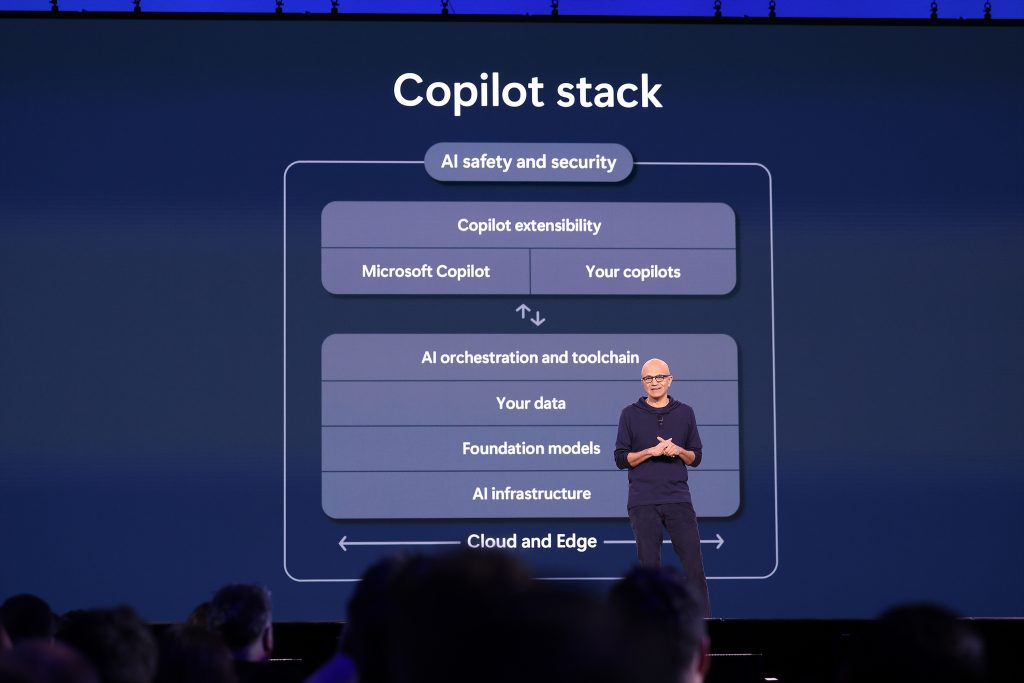
Microsoft Build keynote highlights
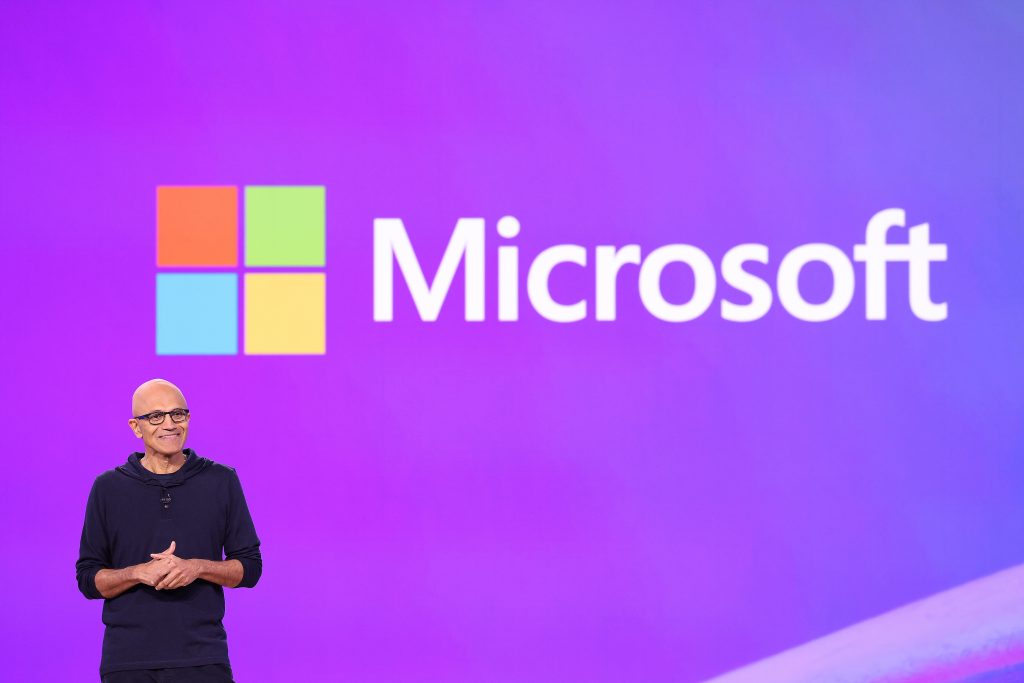
Keynote Sizzle: Satya Nadella at Microsoft Build 2024

Open Video: Satya Nadella at Microsoft Build 2024
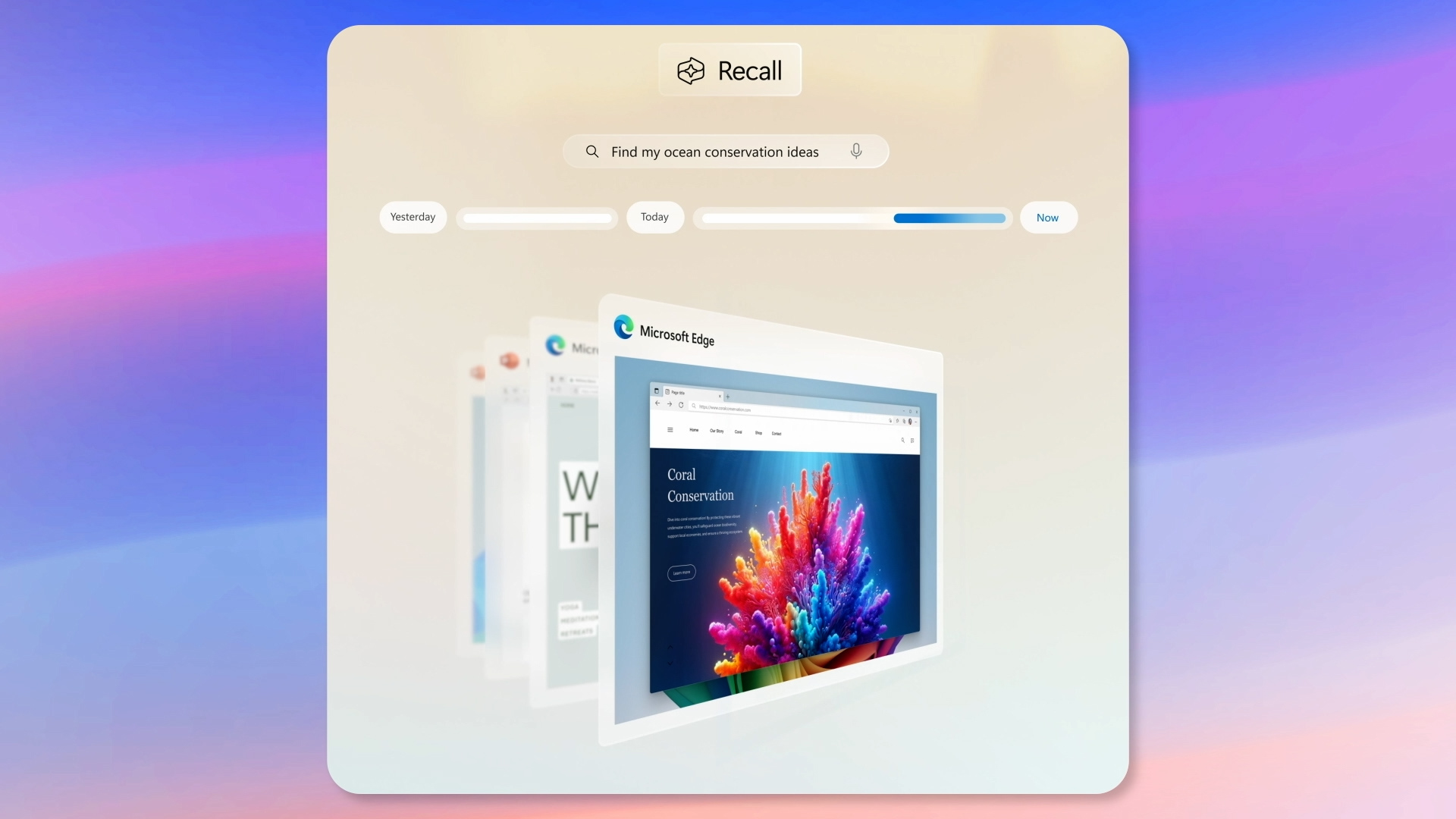
Windows Copilot Runtime: Satya Nadella at Microsoft Build 2024
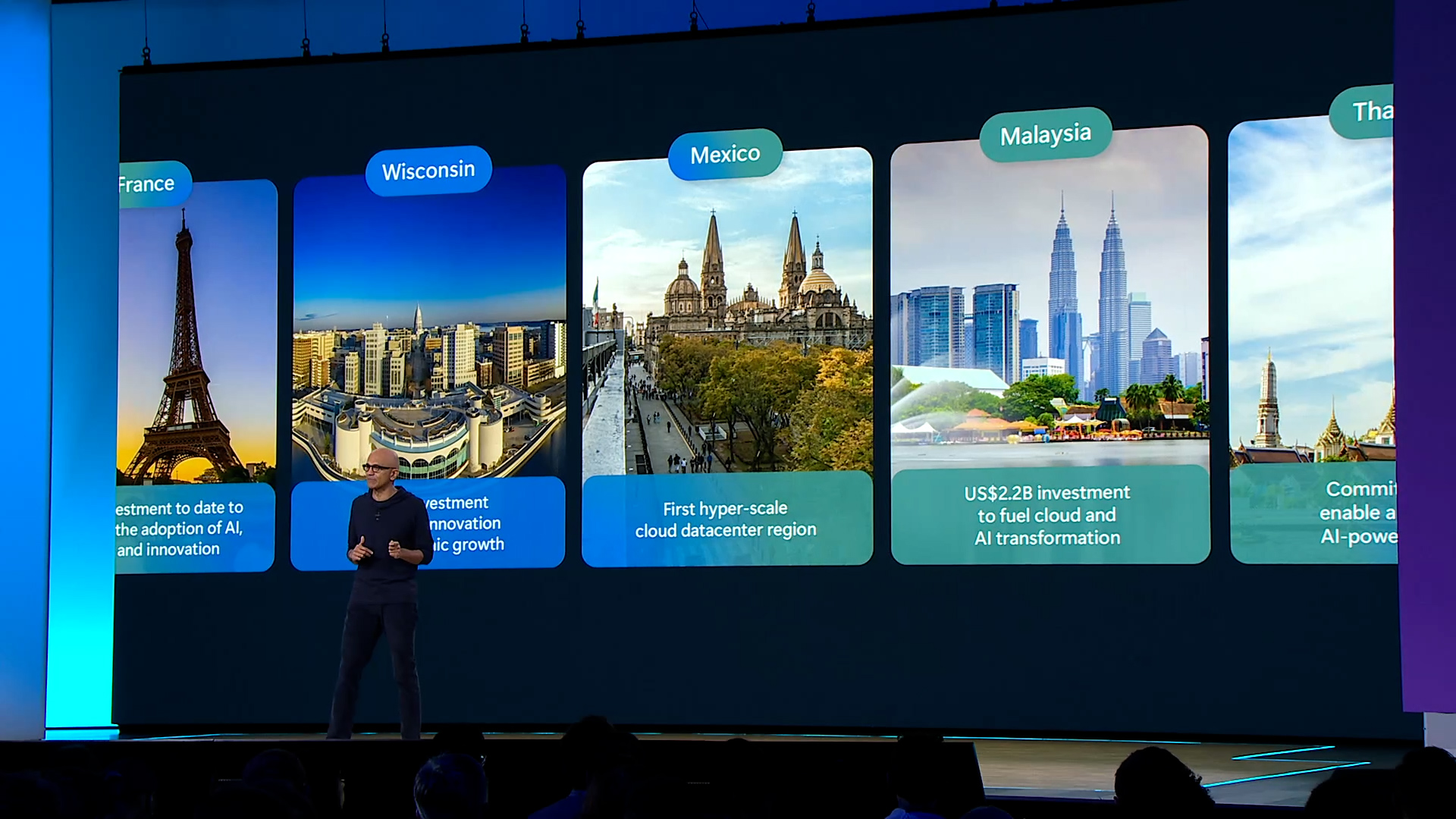
Infrastructure | Satya Nadella at Microsoft Build 2024
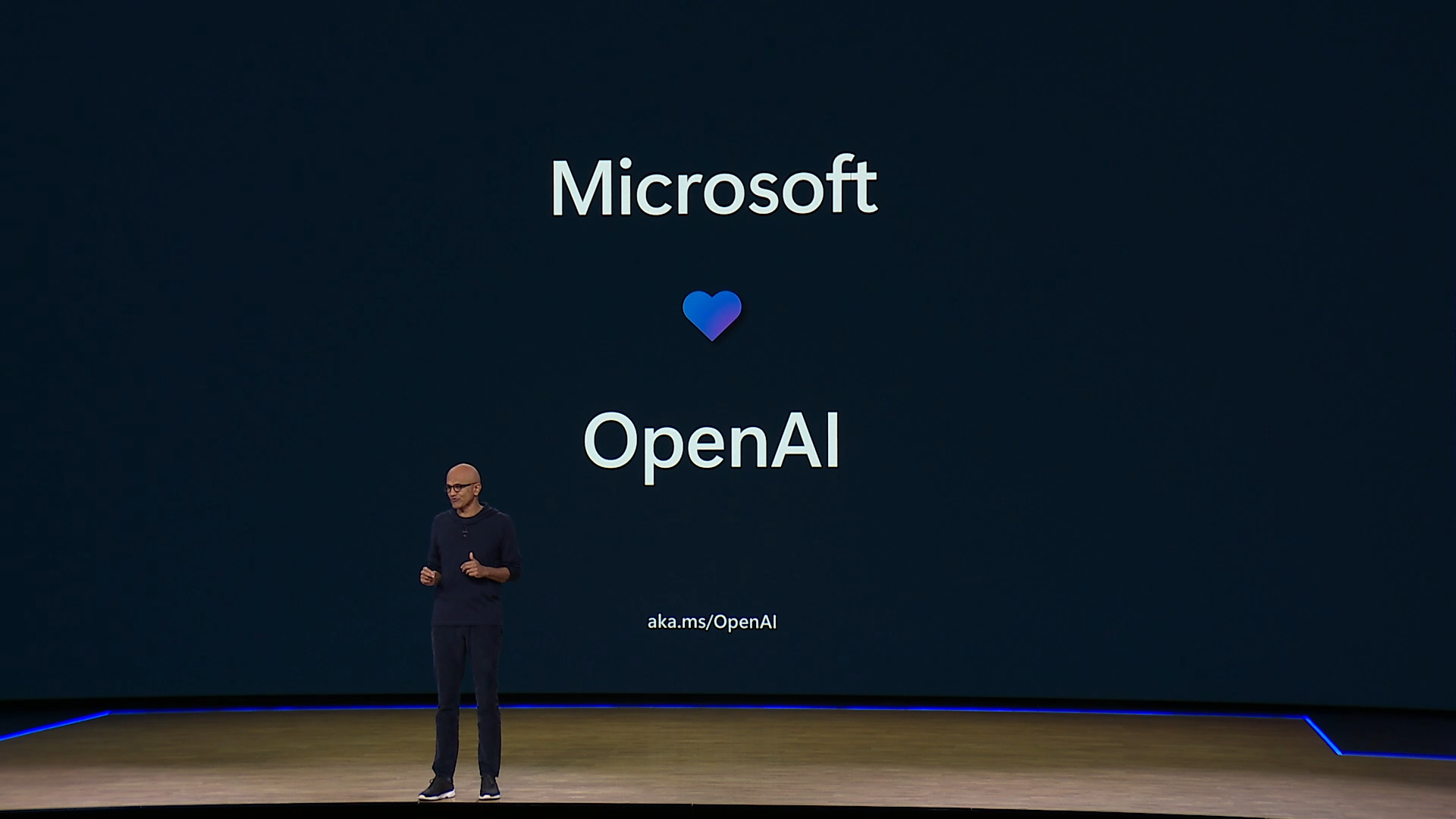
Foundation Models | Satya Nadella at Microsoft Build 2024

Conversational Website: Satya Nadella at Microsoft Build 2024

Khan Academy: Satya Nadella at Microsoft Build 2024
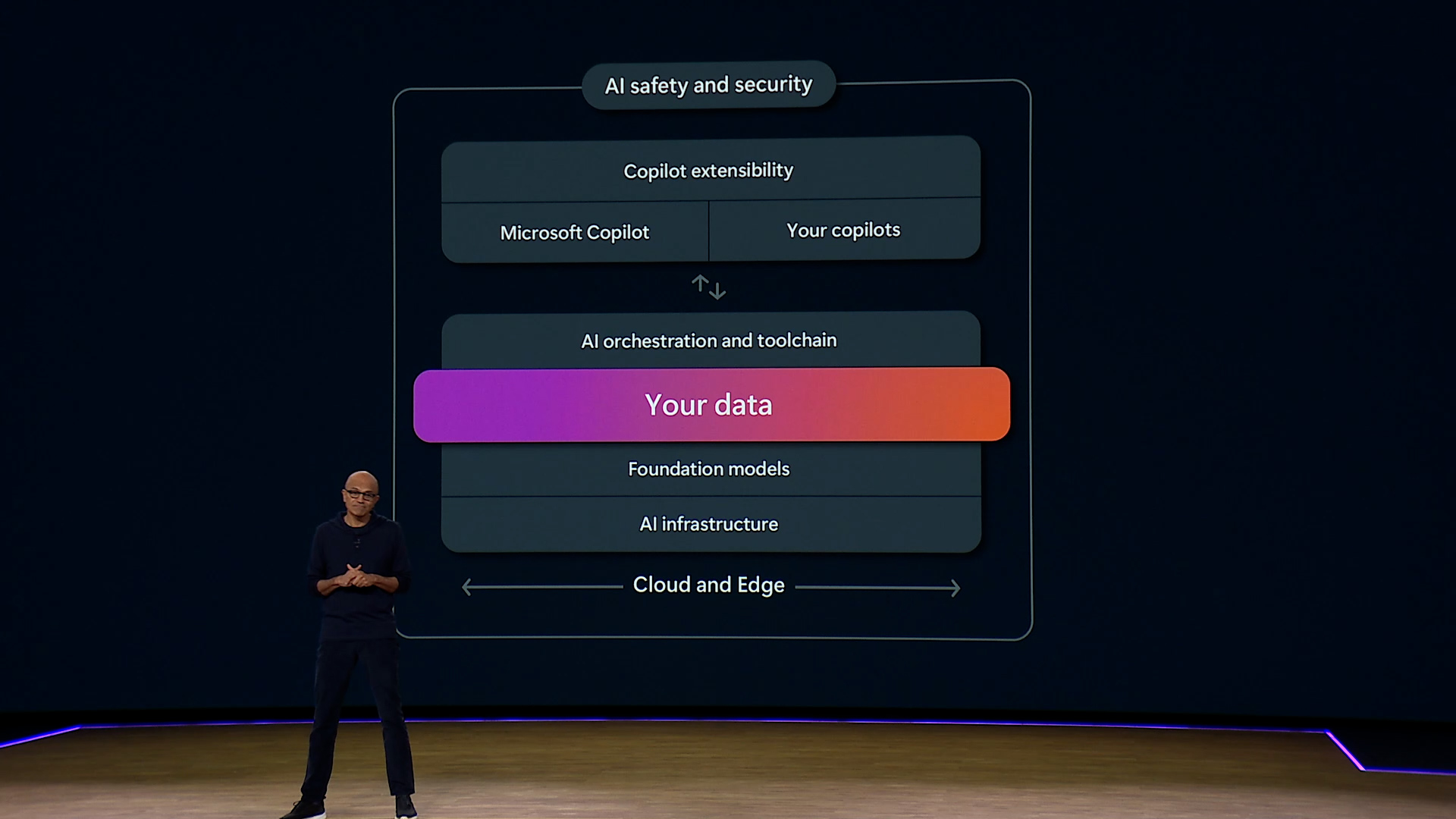
Data | Satya Nadella at Microsoft Build 2024

Real Time Intelligence in Microsoft Fabric: Satya Nadella at Microsoft Build 2024
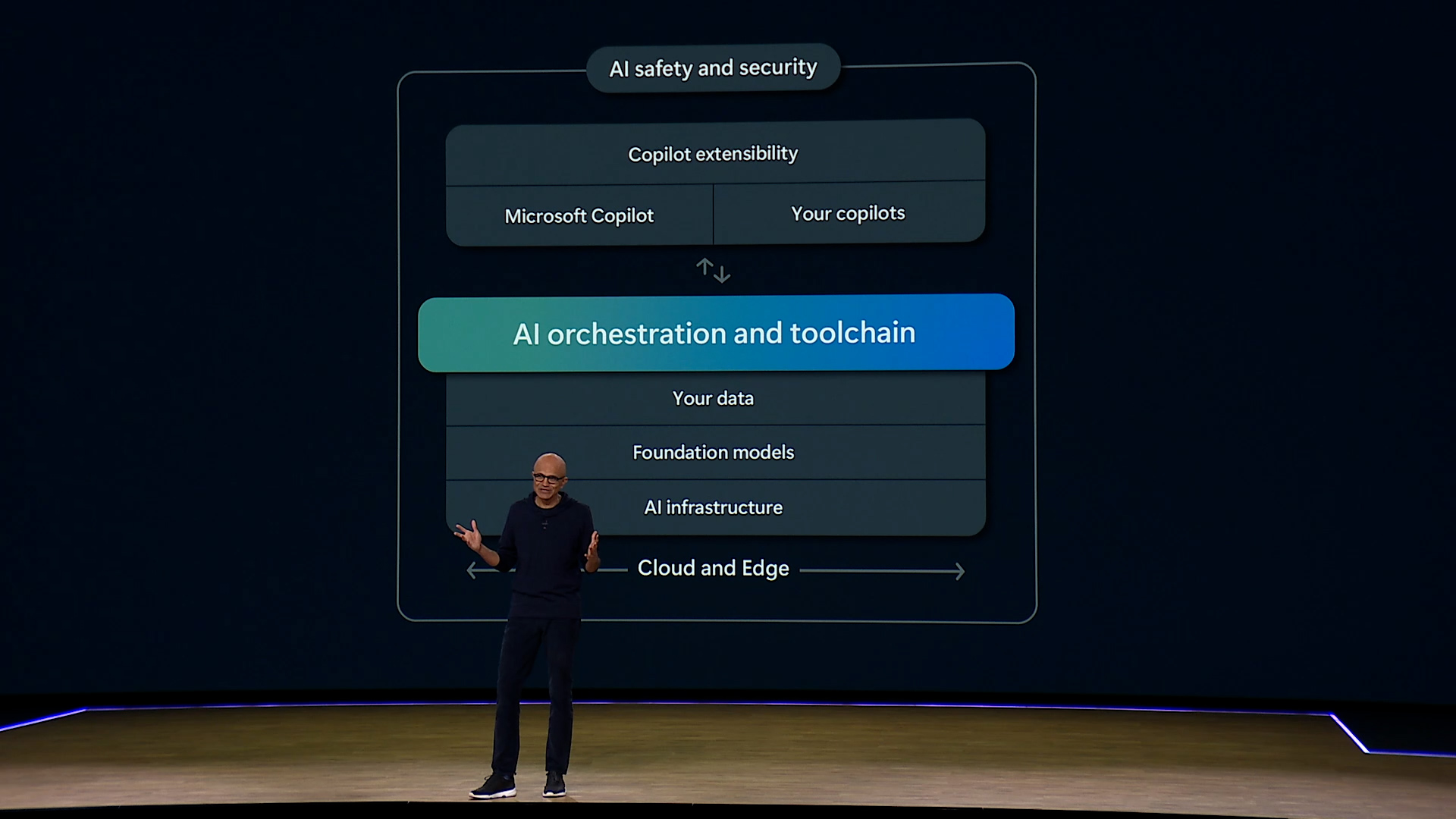
Toolchain | Satya Nadella at Microsoft Build 2024

GitHub Demo: Neha Batra at Microsoft Build 2024
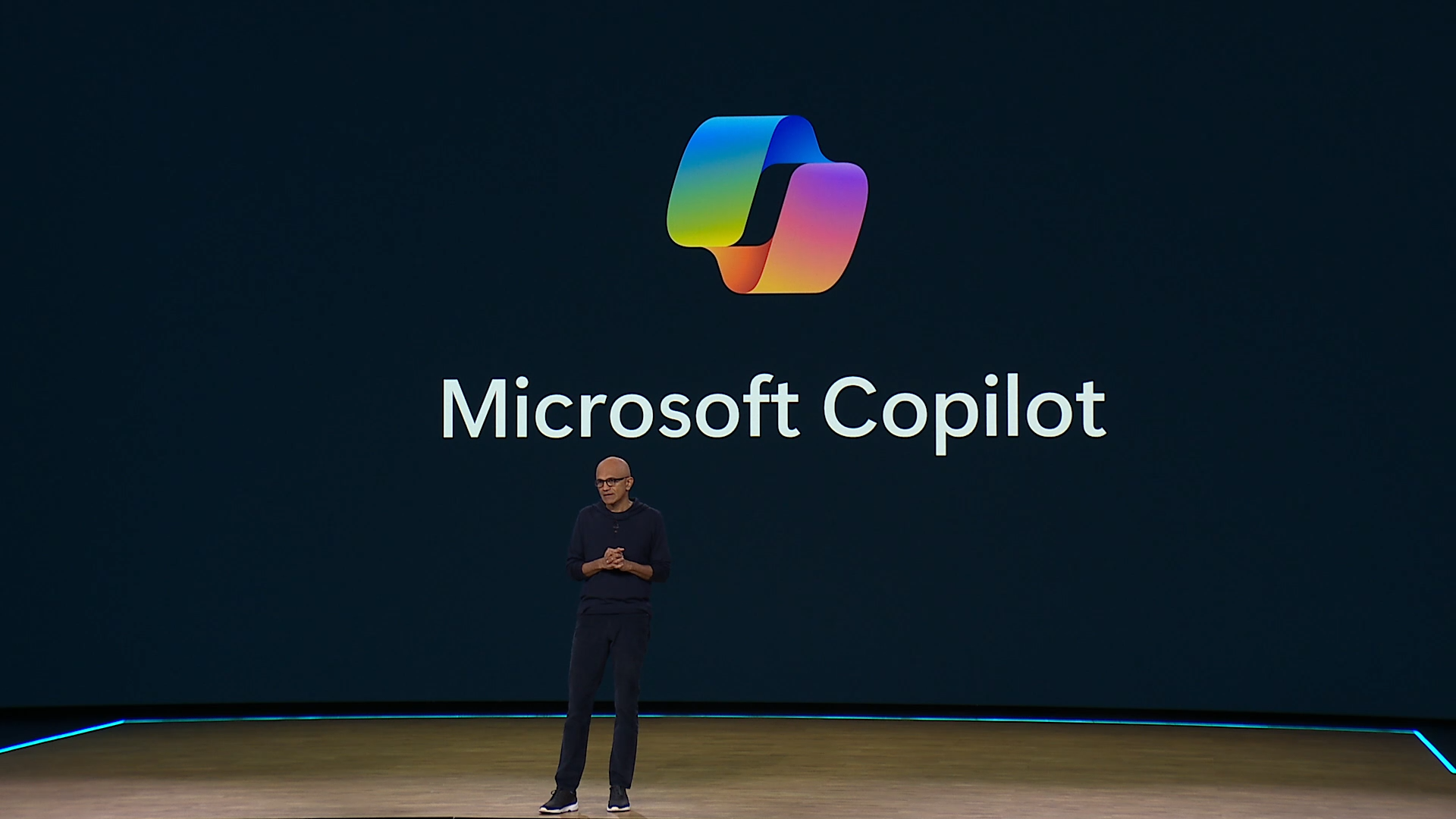
Copilot | Satya Nadella at Microsoft Build 2024
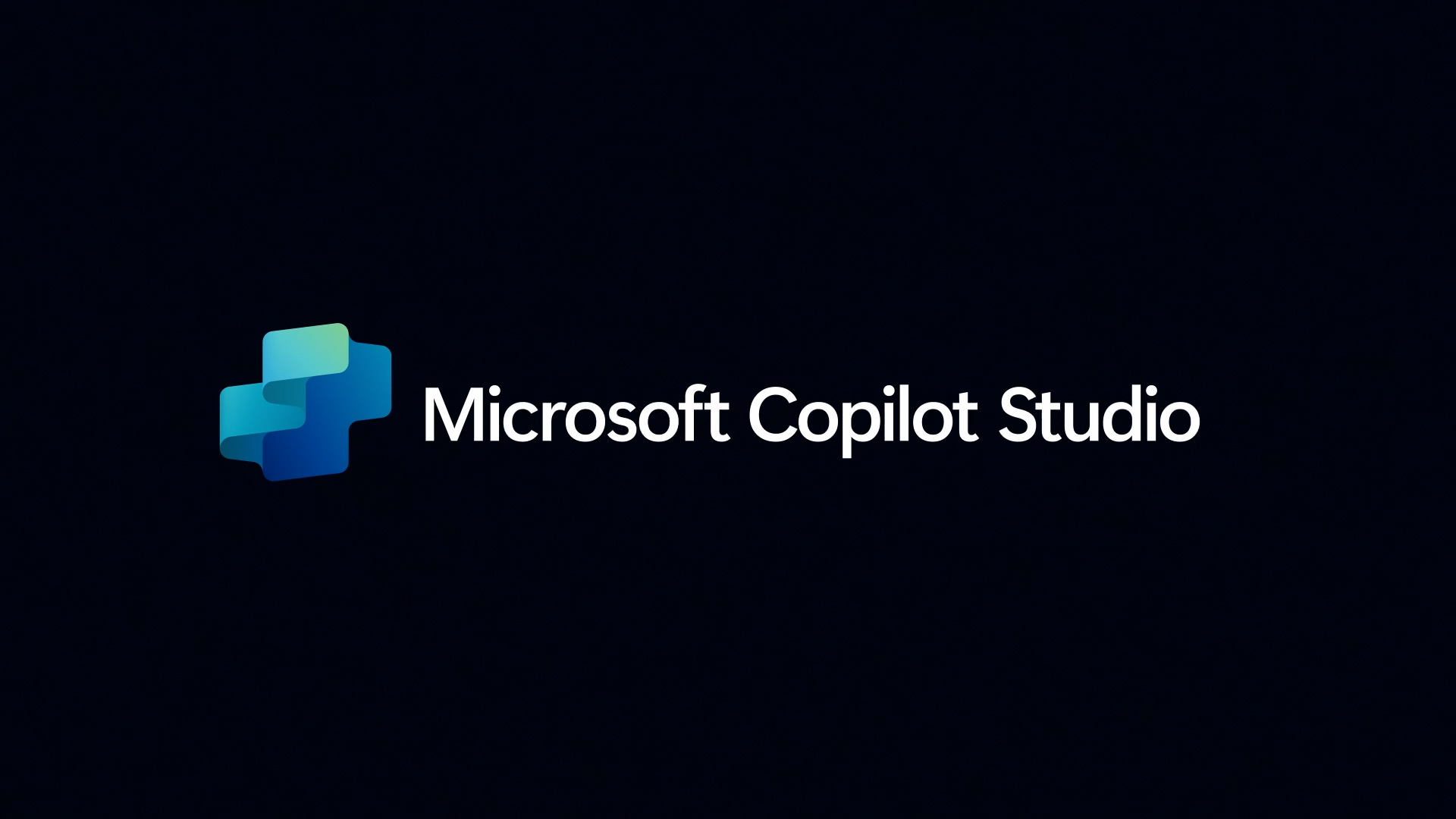
Copilot Studio: Satya Nadella at Microsoft Build 2024

Closing Video: Satya Nadella at Microsoft Build 2024
Microsoft build image gallery.
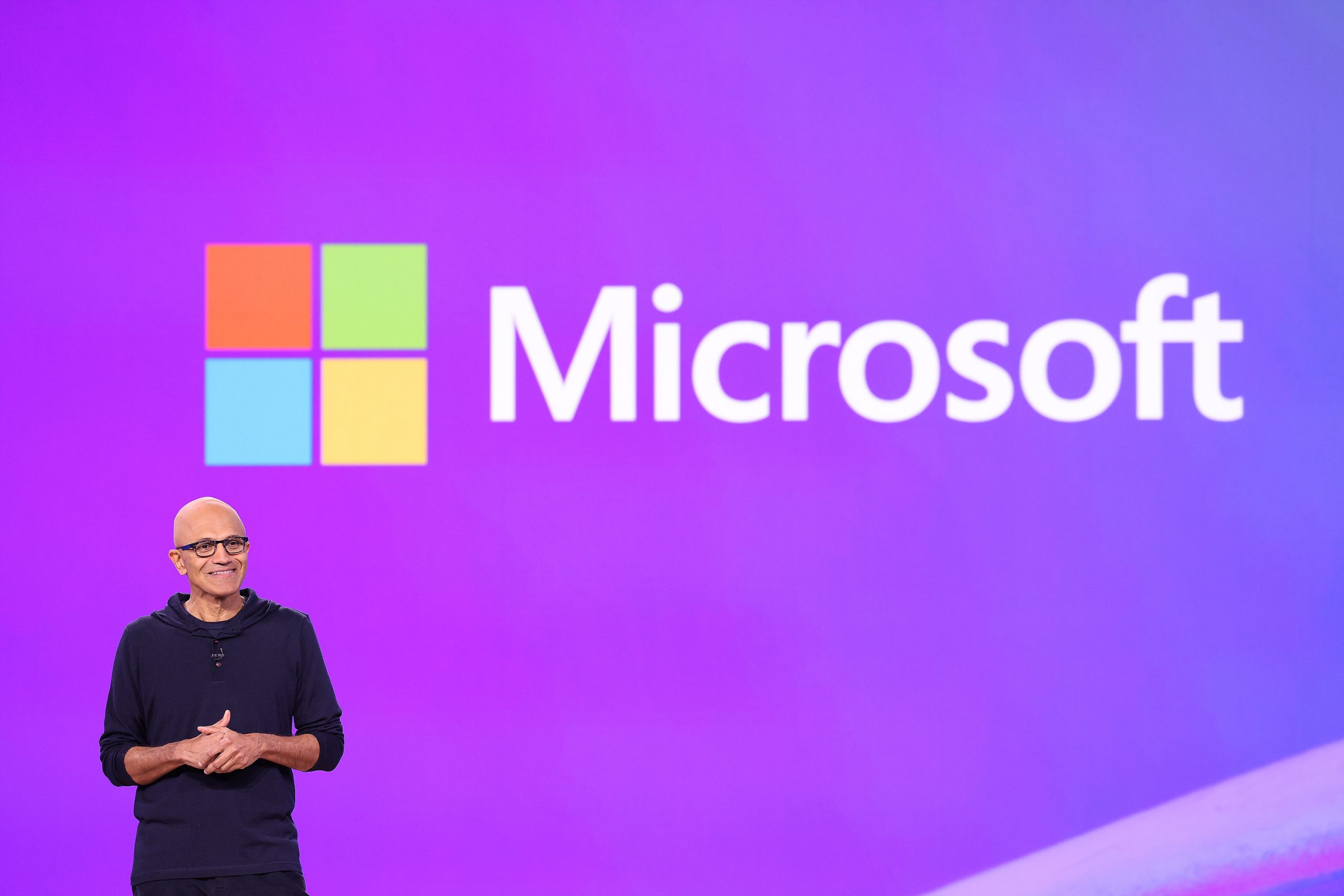
Microsoft Chairman and CEO Satya Nadella on stage May 21 at Microsoft Build 2024 in Redmond, Washington. (Photo by Dan DeLong for Microsoft)
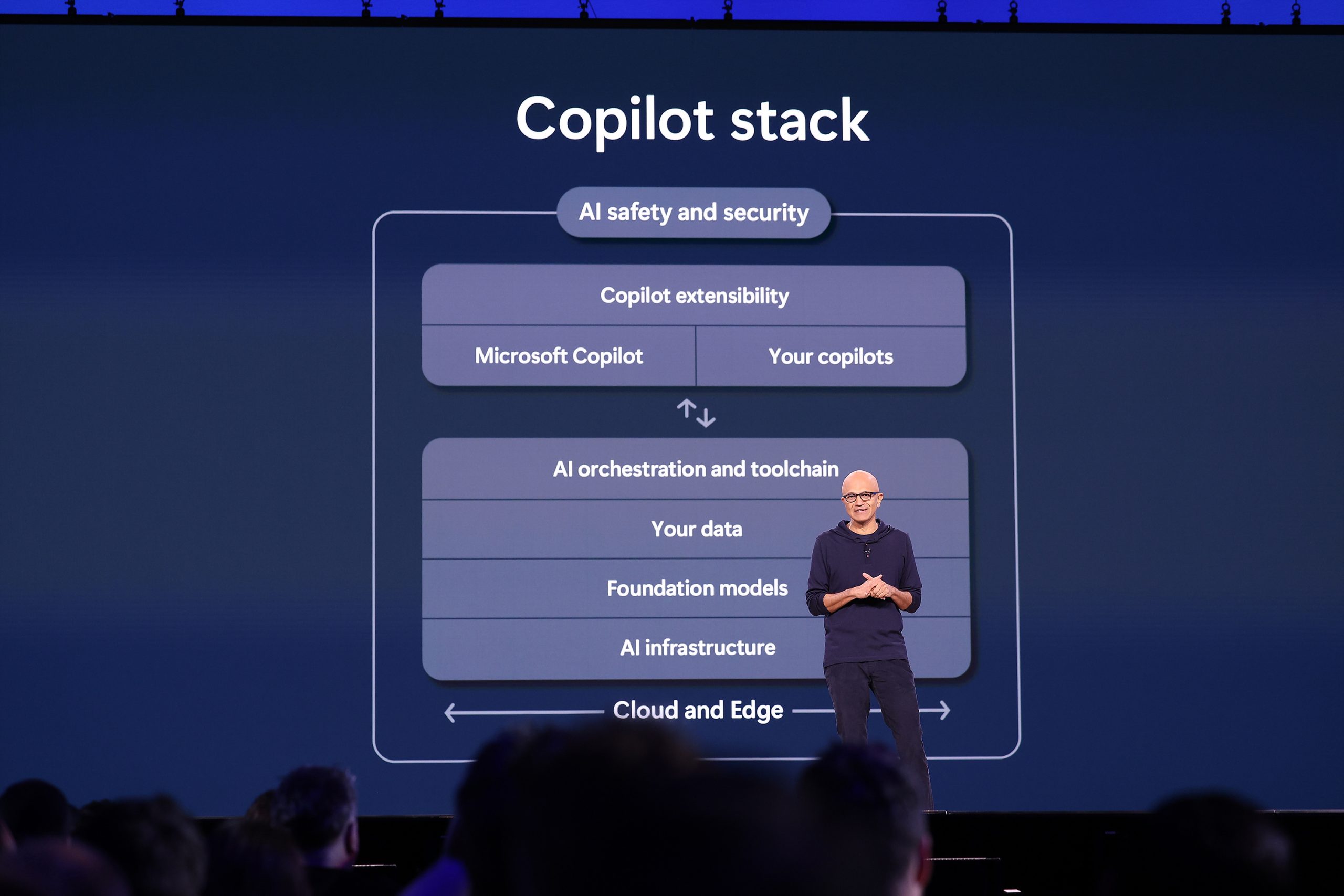
Rajesh Jha, executive vice president, Experiences + Devices, Microsoft, on stage May 21 at Microsoft Build 2024 in Redmond, Washington. (Photo by Dan DeLong for Microsoft)
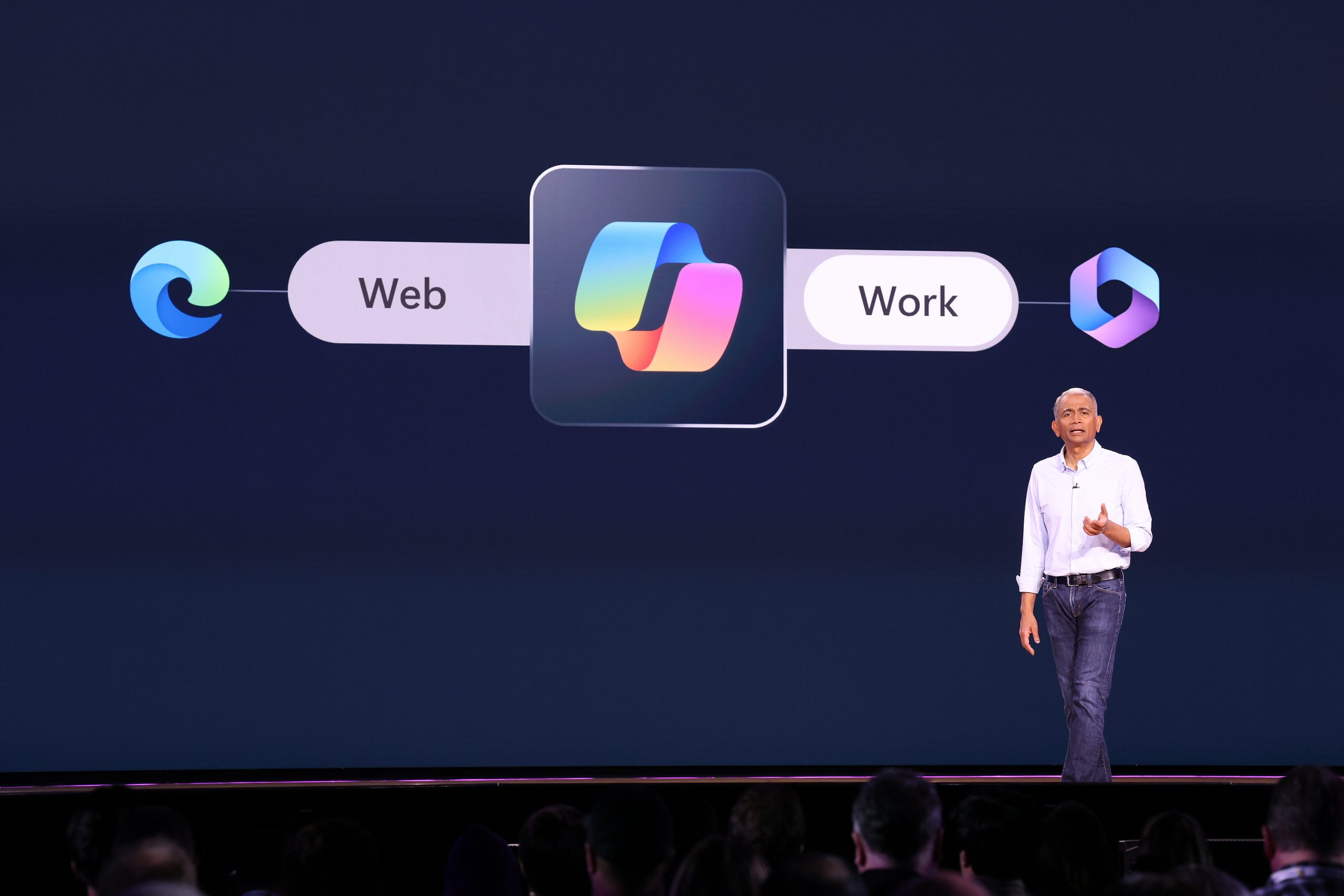
Jeff Teper, president, Collaborative Apps & Platform, Microsoft, on stage May 21 at Microsoft Build 2024 in Redmond, Washington. (Photo by Dan DeLong for Microsoft)
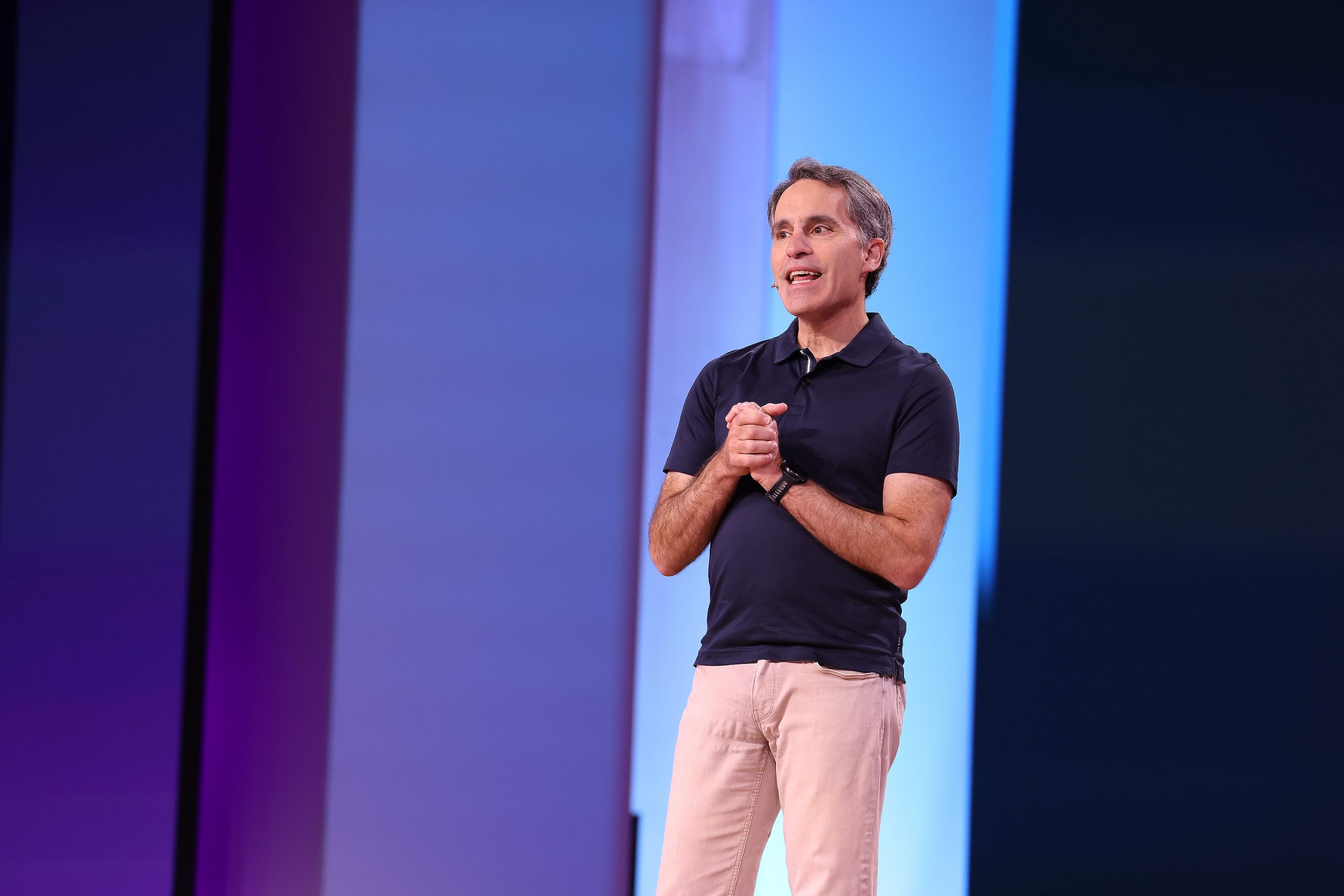
Pavan Davuluri, corporate vice president, Windows + Devices, Microsoft, on stage May 21 at Microsoft Build 2024 in Redmond, Washington. (Photo by Dan DeLong for Microsoft)

Kevin Scott, chief technology officer and EVP of AI, Microsoft, on stage with Sal Khan, founder and CEO, Khan Academy, May 21 at Microsoft Build 2024 in Redmond, Washington. (Photo by Dan DeLong for Microsoft)

Kevin Scott, chief technology officer and EVP of AI, Microsoft, on stage May 21 at Microsoft Build 2024 in Redmond, Washington. (Photo by Dan DeLong for Microsoft)
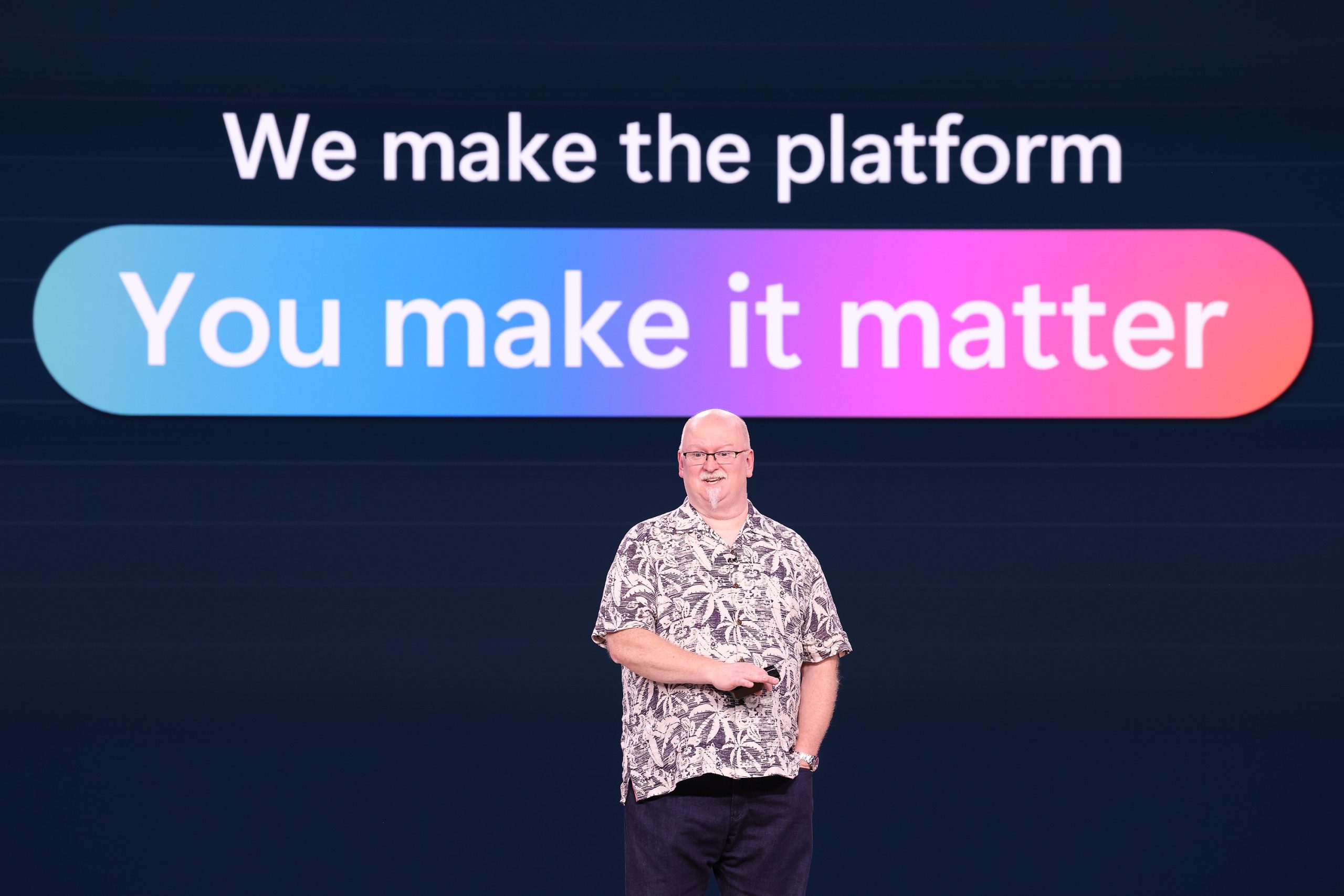
Scott Guthrie, executive vice president, Cloud+AI, Microsoft, on stage May 22 at Microsoft Build 2024 in Redmond, Washington. (Photo by Dan DeLong for Microsoft)
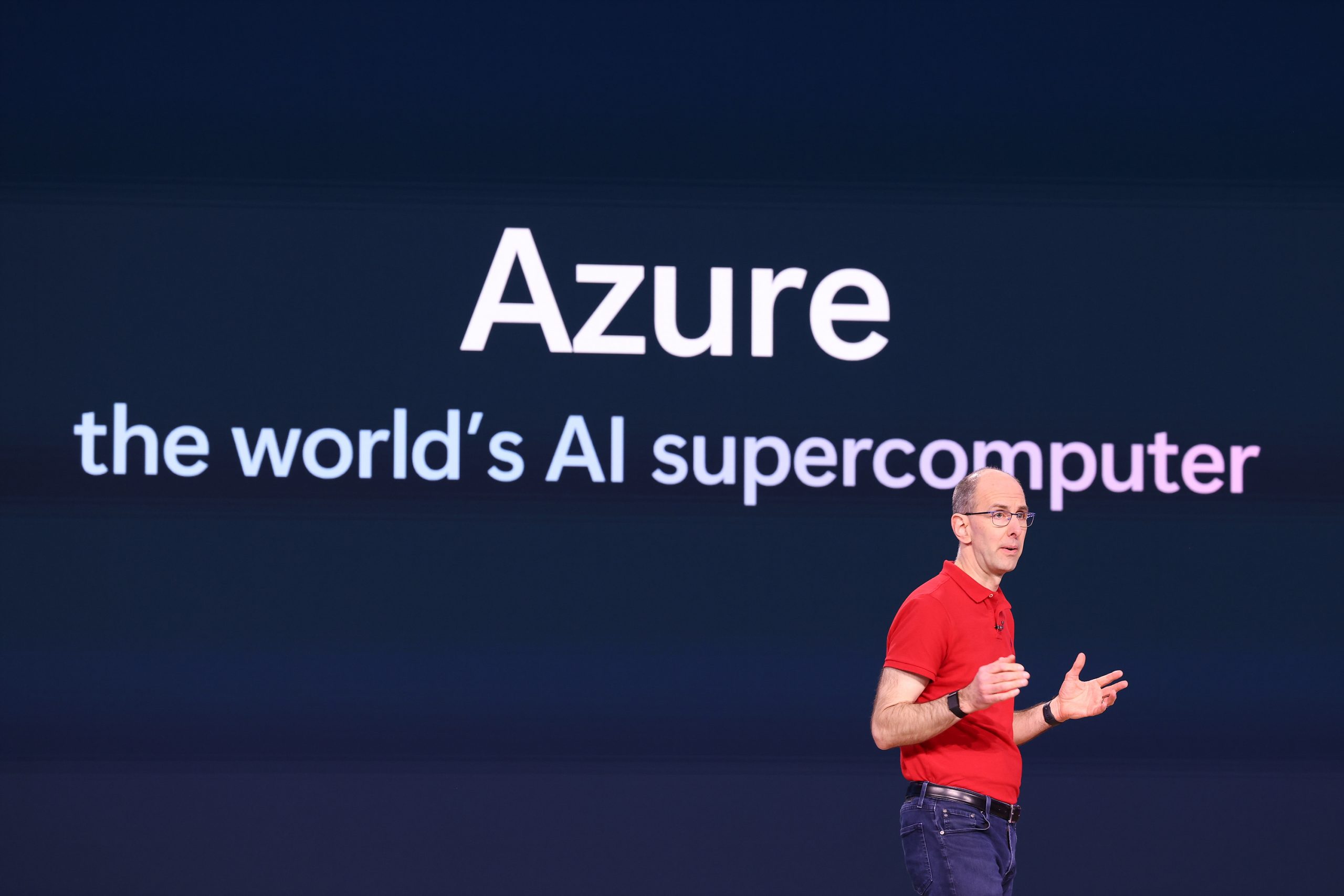
Charles Lamanna, corporate vice president, Business Applications & Platforms, Microsoft, on stage May 22 at Microsoft Build 2024 in Redmond, Washington. (Photo by Dan DeLong for Microsoft)
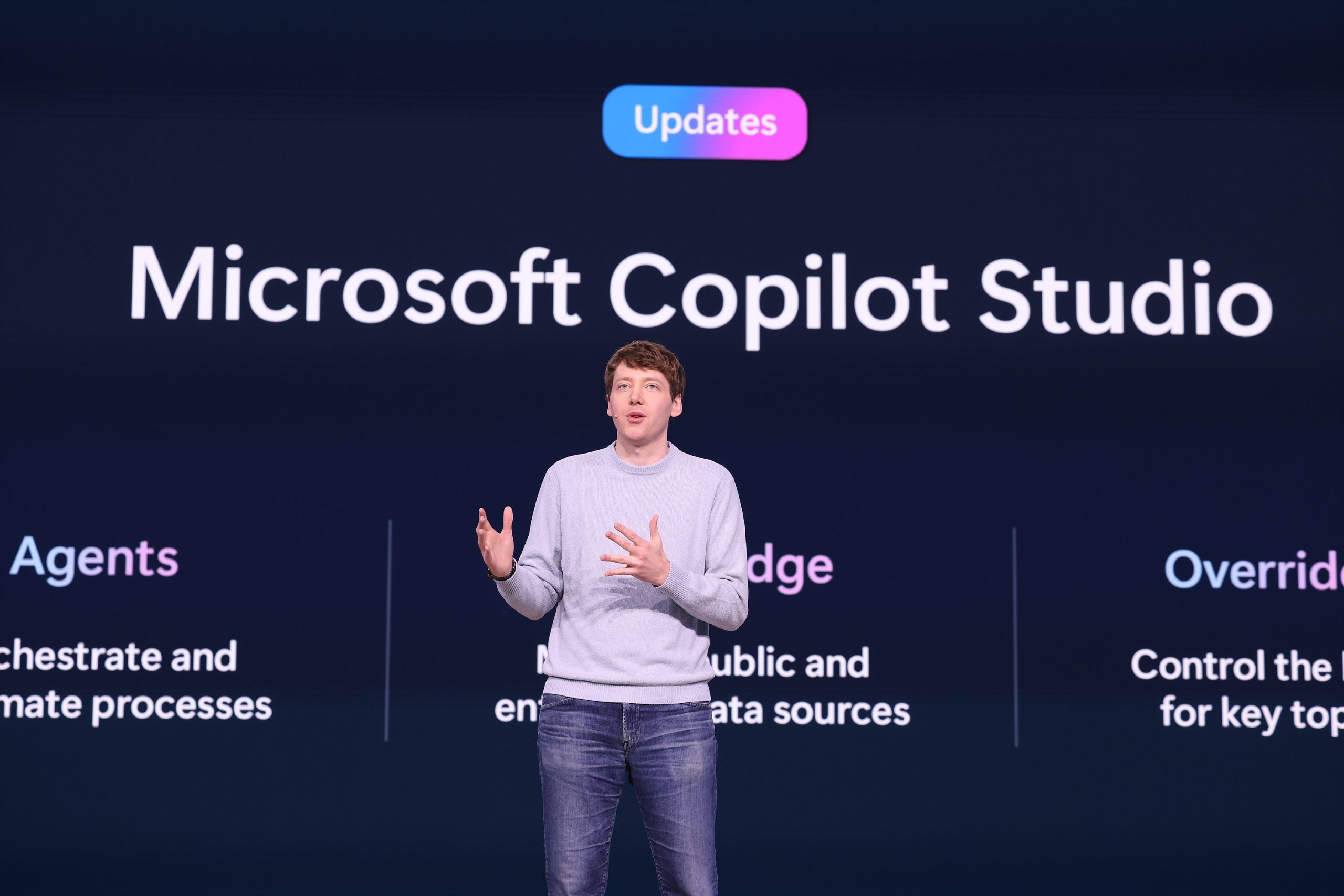
Seth Juarez, program manager, Microsoft, on stage May 22 at Microsoft Build 2024 in Redmond, Washington. (Photo by Dan DeLong for Microsoft)
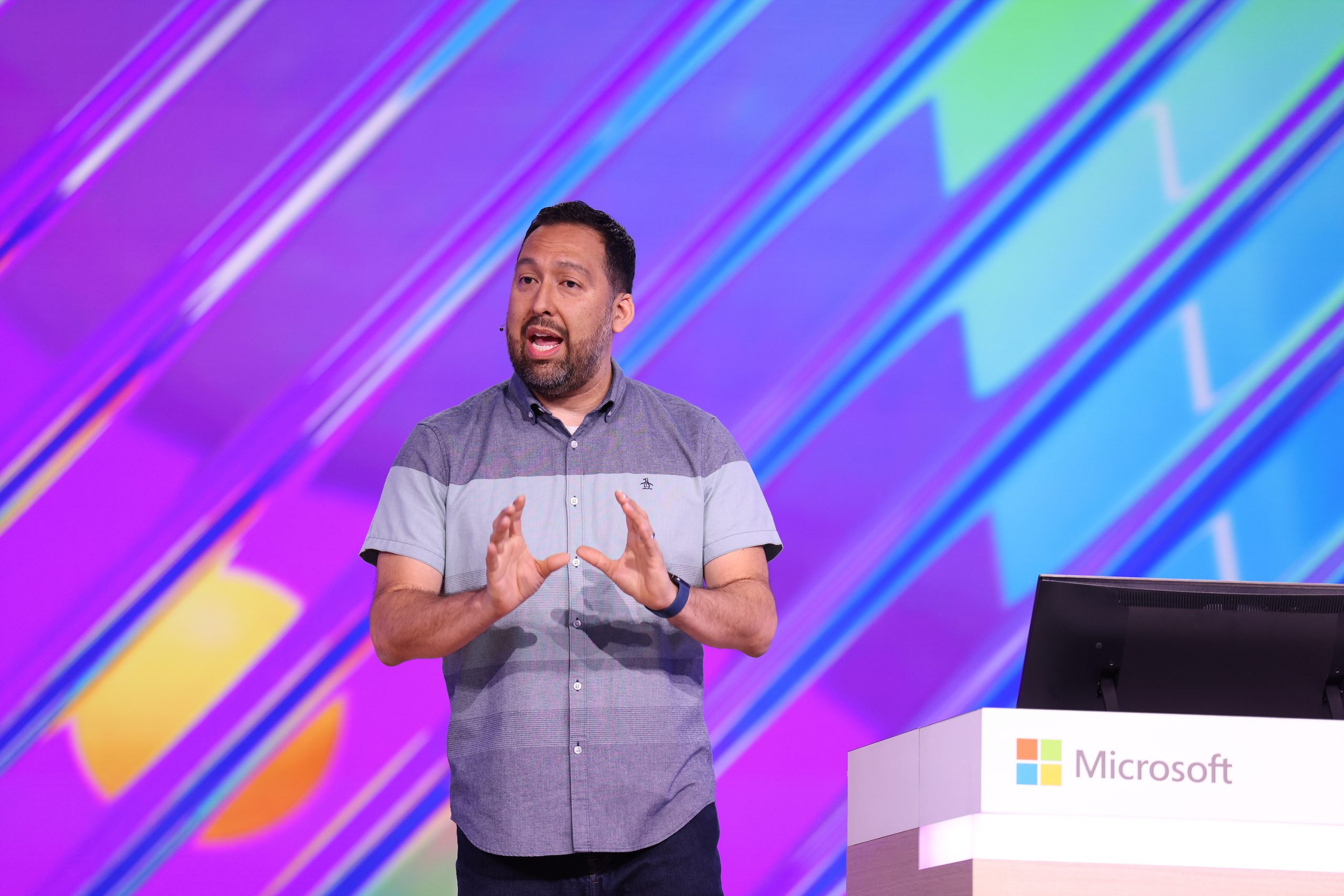
Eric Boyd, corporate vice president, Engineering, on stage May 22 at Microsoft Build 2024 in Redmond, Washington. (Photo by Dan DeLong for Microsoft)

Sarah Bird, CPO, Responsible AI, on stage May 22 at Microsoft Build 2024 in Redmond, Washington. (Photo by Dan DeLong for Microsoft)

Arun Ulagaratchagan, corporate vice president, Azure Data, Microsoft, on stage May 22 at Microsoft Build 2024 in Redmond, Washington. (Photo by Dan DeLong for Microsoft)

Microsoft’s Julia Liuson, president, DevDiv, and John Lambert, corporate vice president, distinguished engineer, Microsoft Security Research, on stage May 22 at Microsoft Build 2024 in Redmond, Washington. (Photo by Dan DeLong for Microsoft)
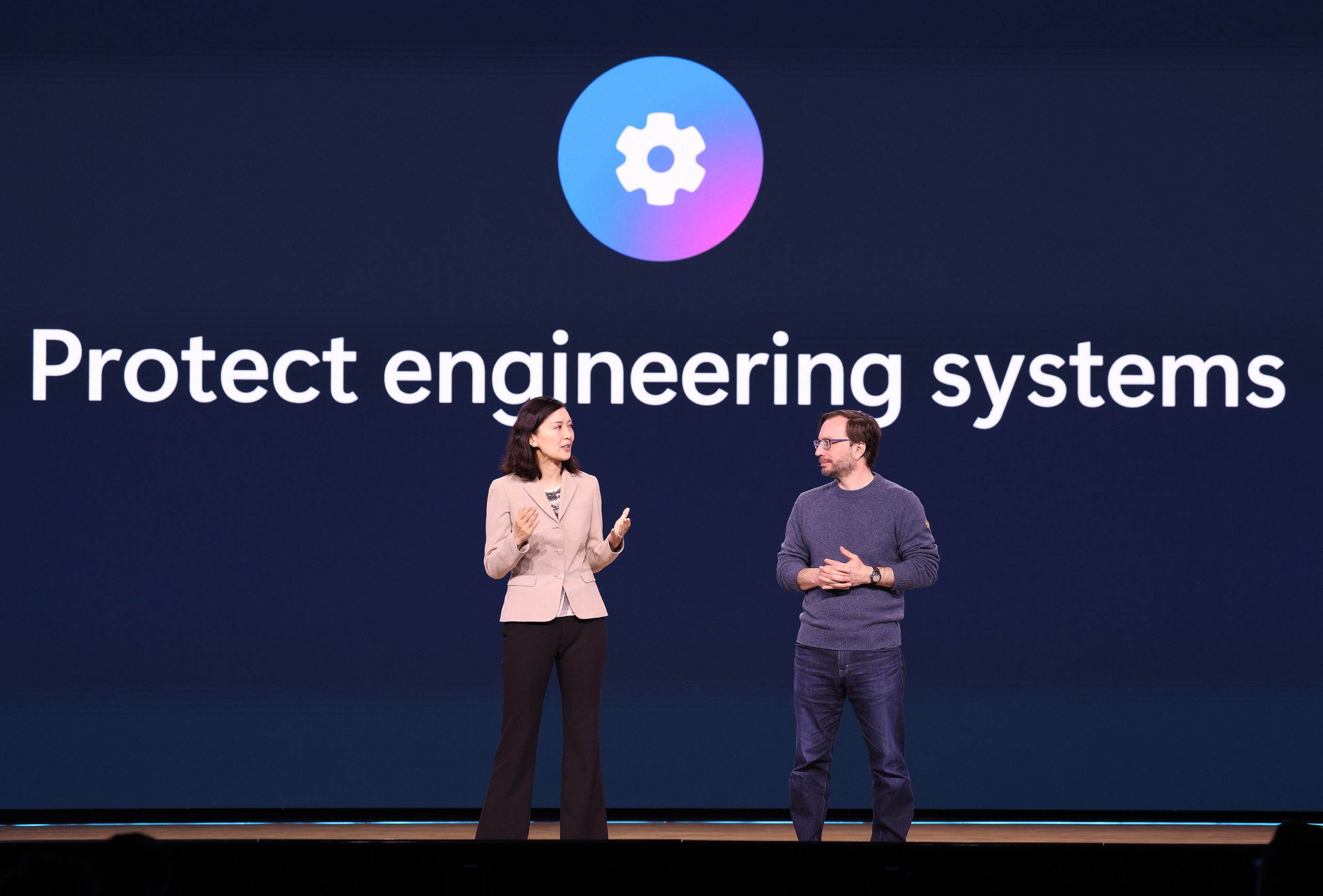
New Microsoft Fabric workload structure
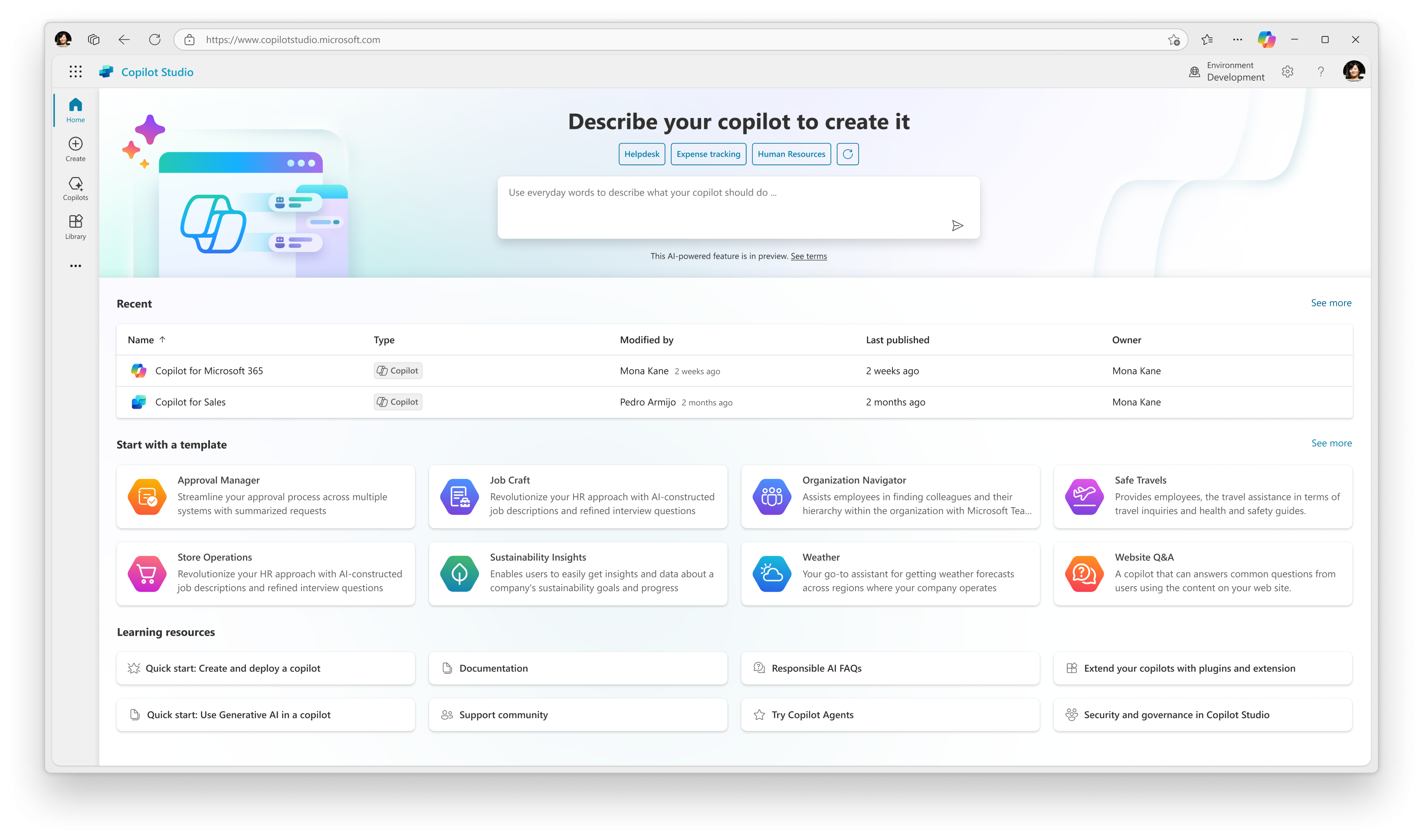
The new Copilot Studio homepage

Docker Extension for GitHub Copilot
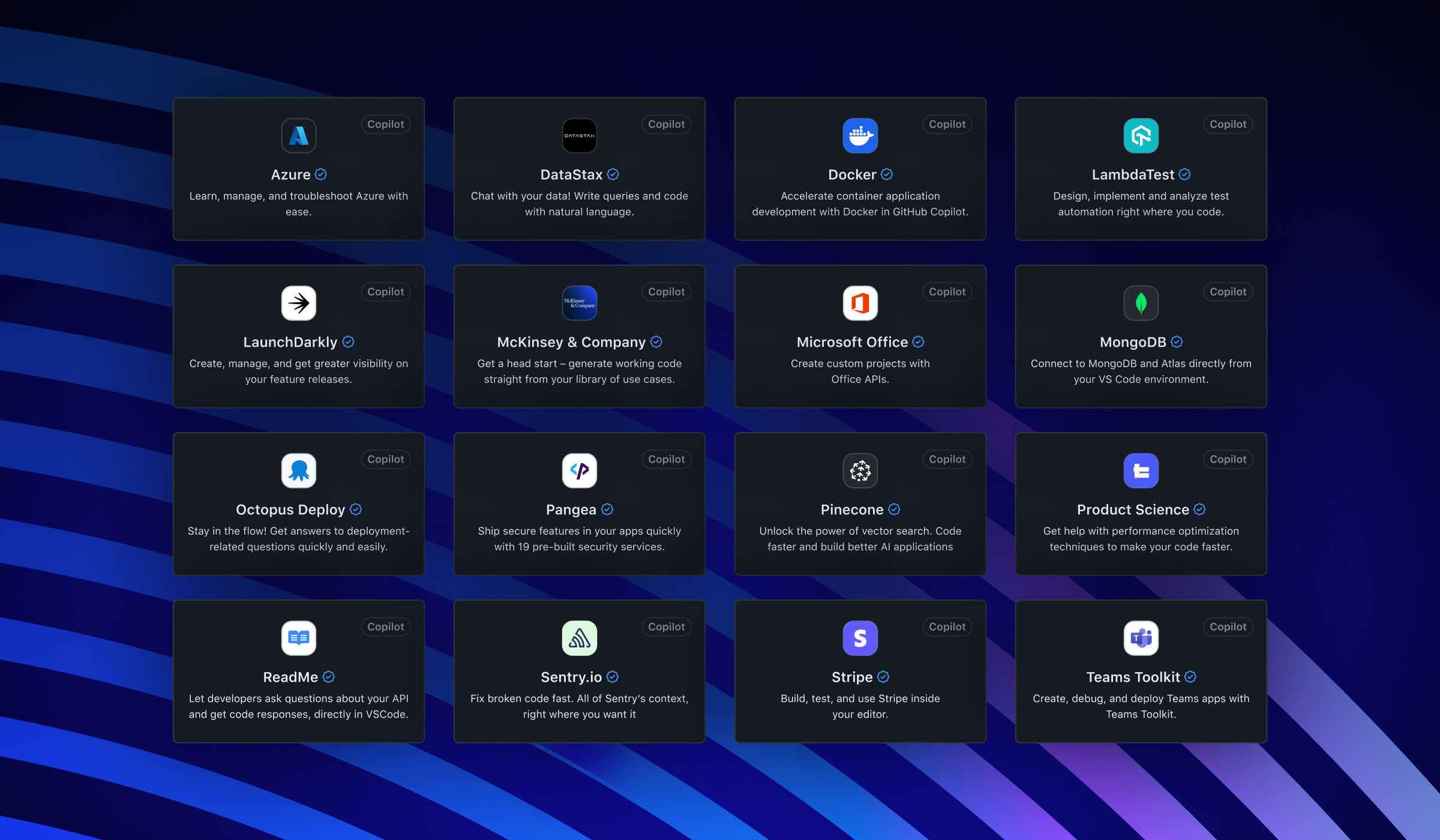
First set of GitHub Copilot Extensions
A peek at the experience of building copilots with agent capabilities using copilot studio.

The startup FROM YOUR EYES has won the 2024 Imagine Cup, taking home the grand prize of $100,000 and a mentorship session with Microsoft Chairman and CEO Satya Nadella

Students compare notes while learning about abstract chemistry using everyday items, a lesson suggested by Khanmigo for Teachers. (Photo by Scott Eklund for Microsoft )

In less than a minute, teachers can access creative lesson plans from Khanmigo for Teachers that save time and delight students. (Photo by Scott Eklund for Microsoft)
Students use marshmallows and water bottles to understand a chemistry concept, a suggestion from khanmigo for teachers. (photo by scott eklund for microsoft ).
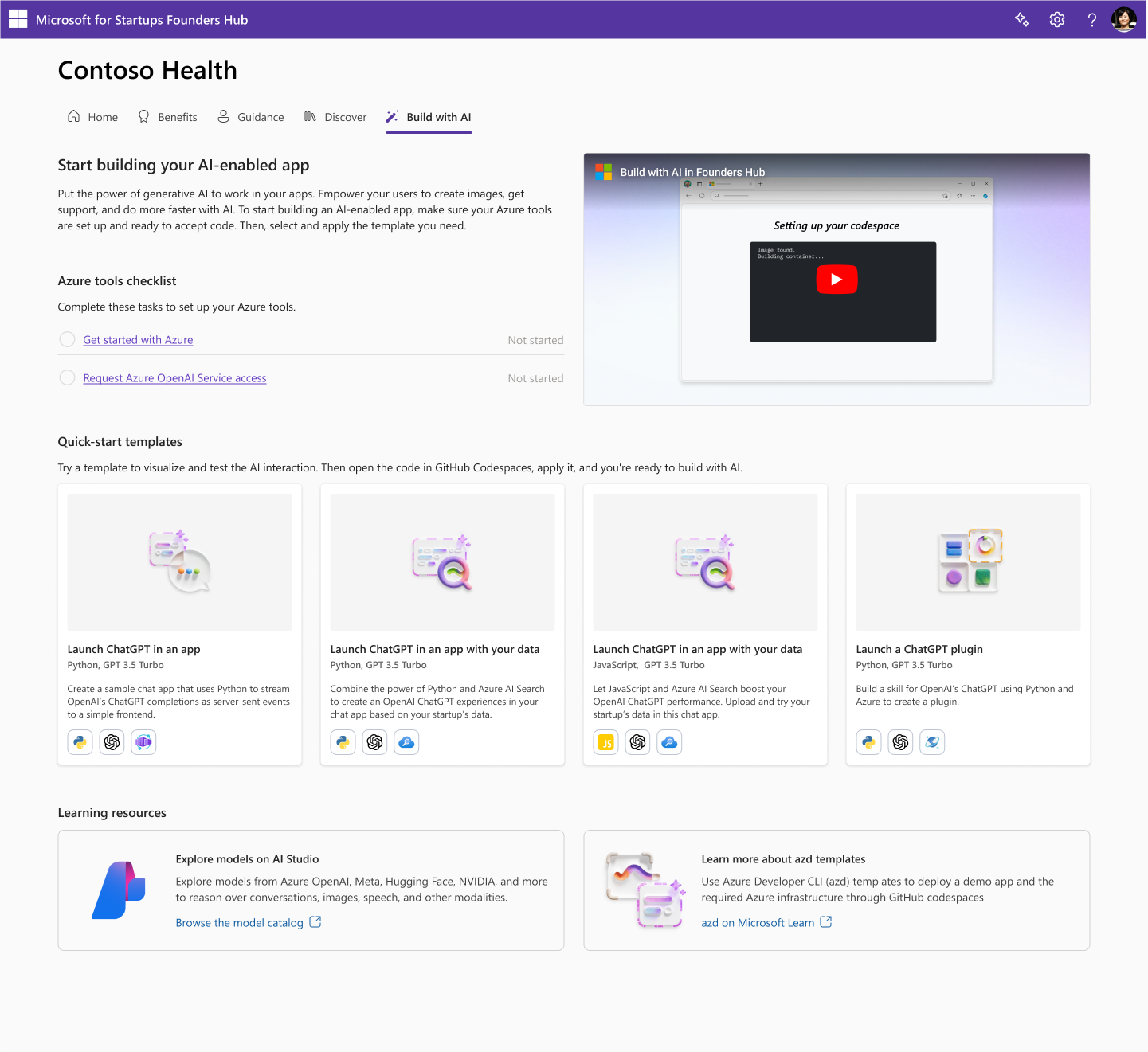
Microsoft for Startups Founders Hub new build with AI feature
Paste a permalink, which expands to provide a rich preview from azure devops, microsoft build video gallery.

Introducing Team Copilot
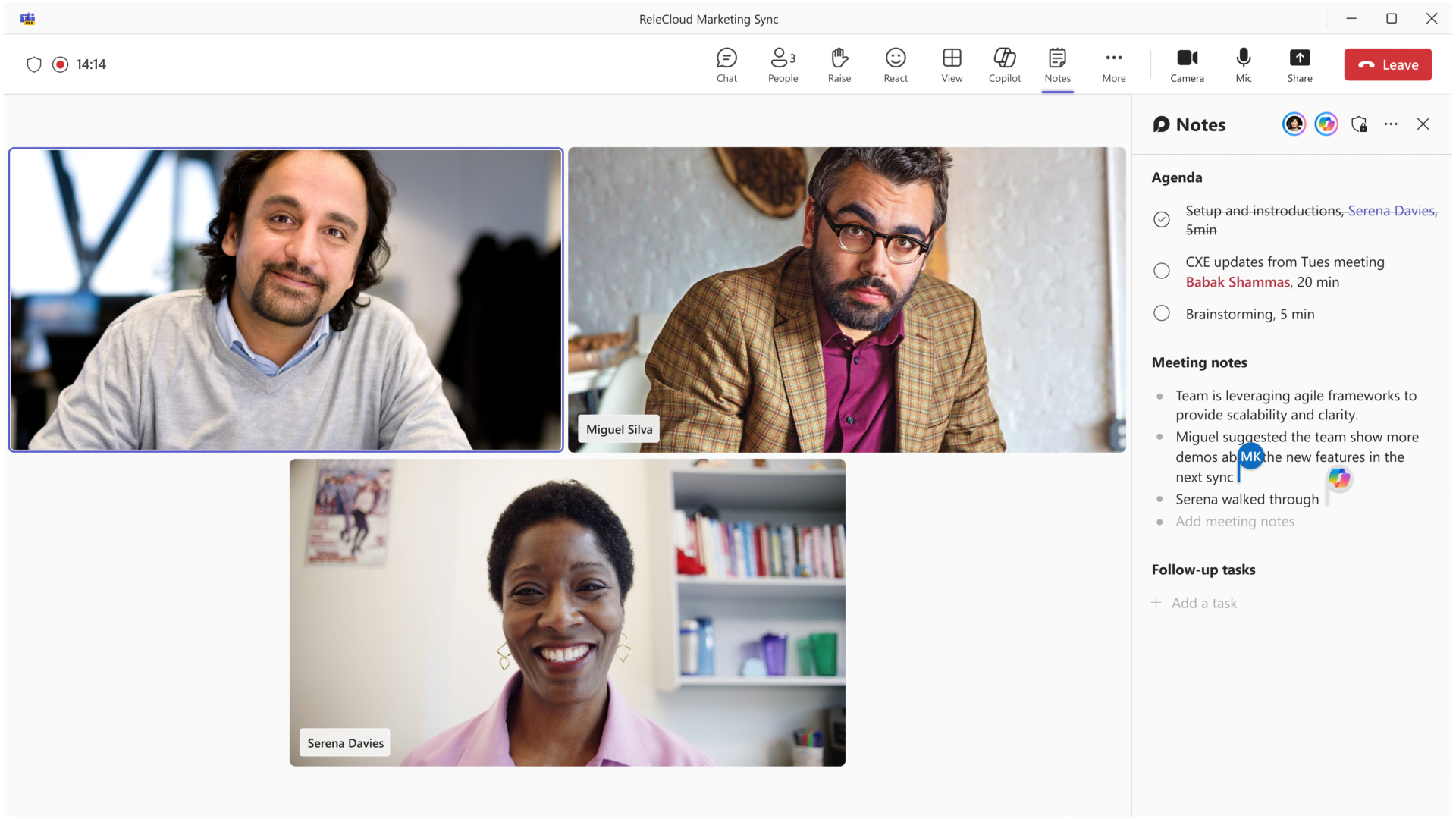
Meeting facilitator in Teams meetings
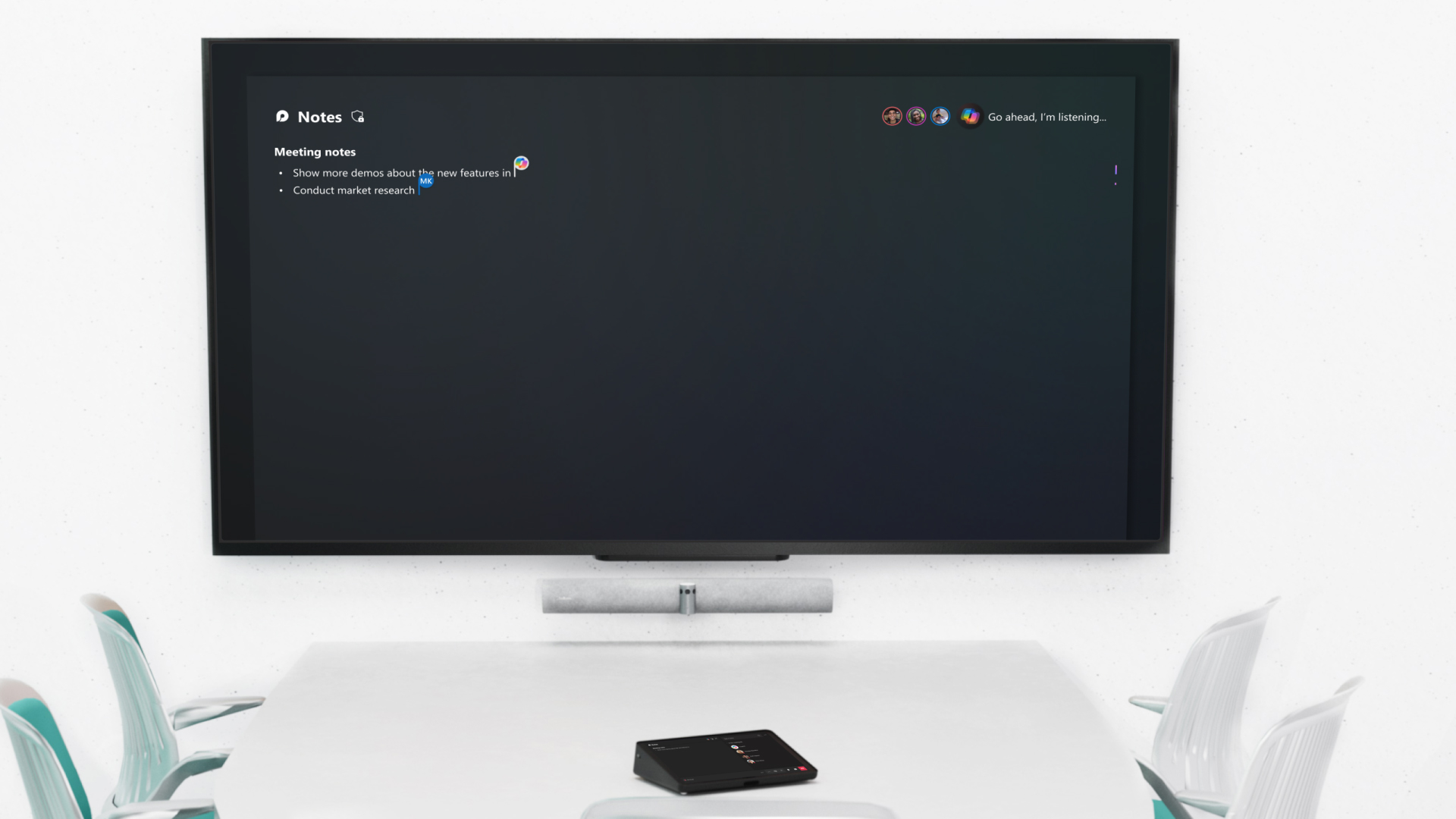
Meeting facilitator in Teams Rooms
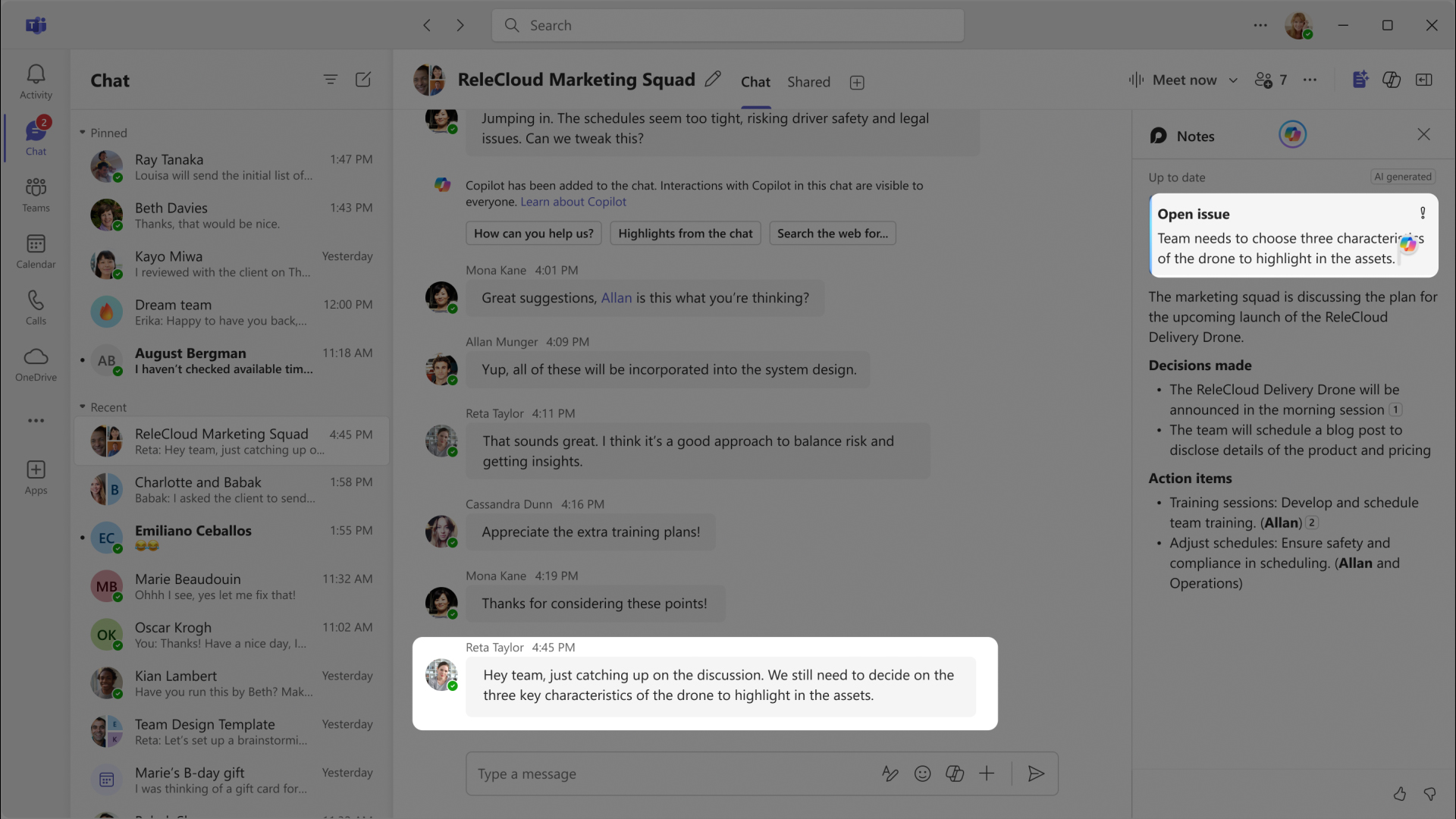
Group collaborator in Teams chats
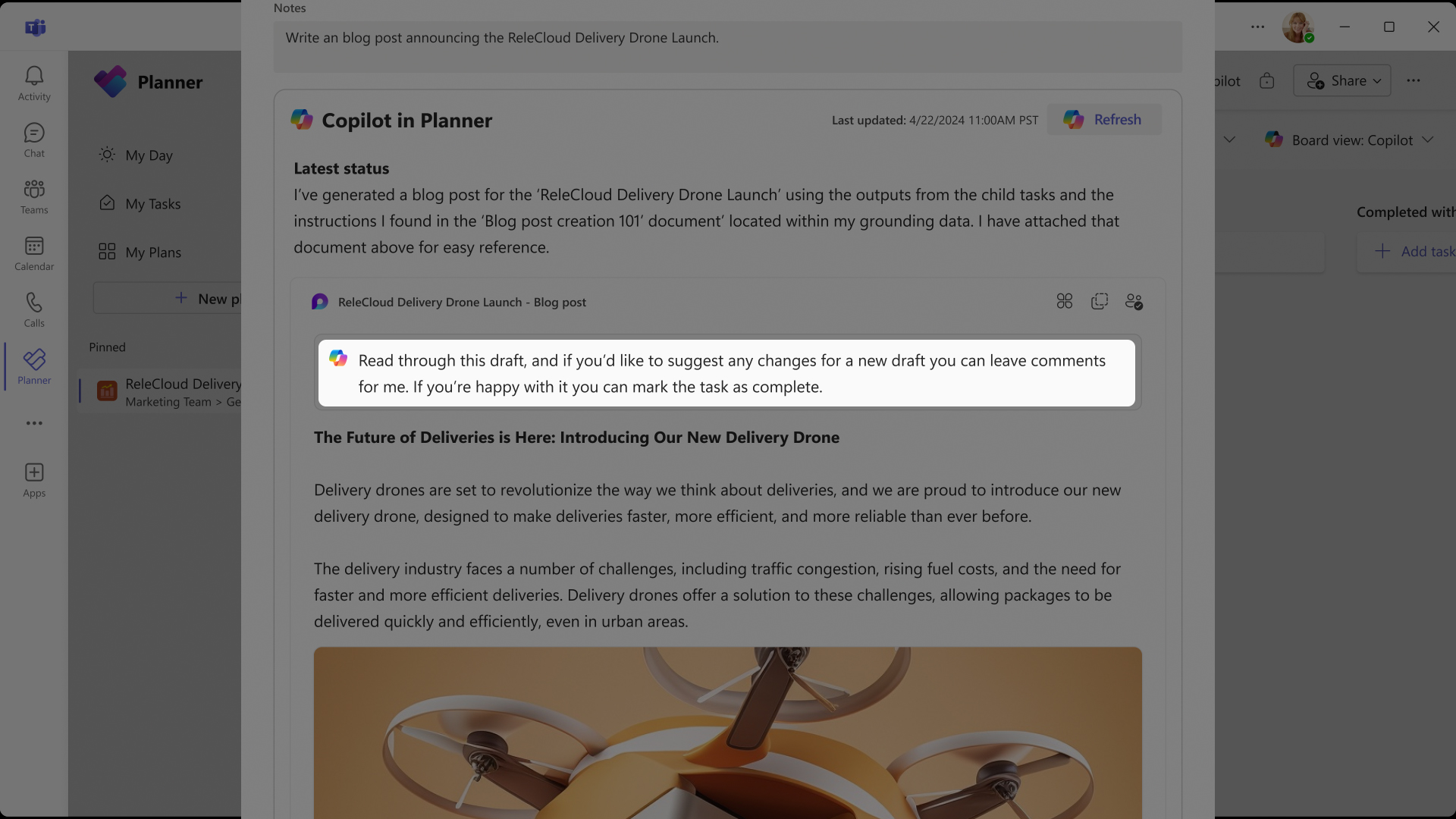
Project manager in Planner

Introducing Copilot Extensions: GitHub Copilot for Azure

A Day in the Life of Data

Running the World’s Largest AI Supercomputer in the Cloud with Mark Russinovich

Adept is transforming work through AI
Microsoft build news and resources.
- From code to production: New ways Azure helps you build transformational AI experiences
- Unleashing innovation: The new era of compute powering Azure AI solutions
- Introducing GitHub Copilot Extensions: Unlocking unlimited possibilities with our ecosystem of partners
- New ways of development with Copilot and the Power Platform
- Unlock real-time insights with AI-powered analytics in Microsoft Fabric
- Enhancing the future of education with Khan Academy
- Announcing two new tools to streamline startup AI development
- New agent capabilities in Microsoft Copilot unlock business value
- Unlock a new era of innovation with Windows AI Fabric and Copilot+ PCs
- General availability of .NET Aspire: Simplifying .NET cloud-native development
- Announcing the 2024 Imagine Cup World Champion
- 10 more AI terms everyone should know
Introducing Copilot+ PCs
Security blog, windows experience, windows blog, a new era of ai with copilot from microsoft, copilot+ pcs image gallery.

Microsoft Chairman and CEO Satya Nadella on stage May 20, 2024, at an event in Redmond, Washington. (Photo by Dan DeLong for Microsoft)
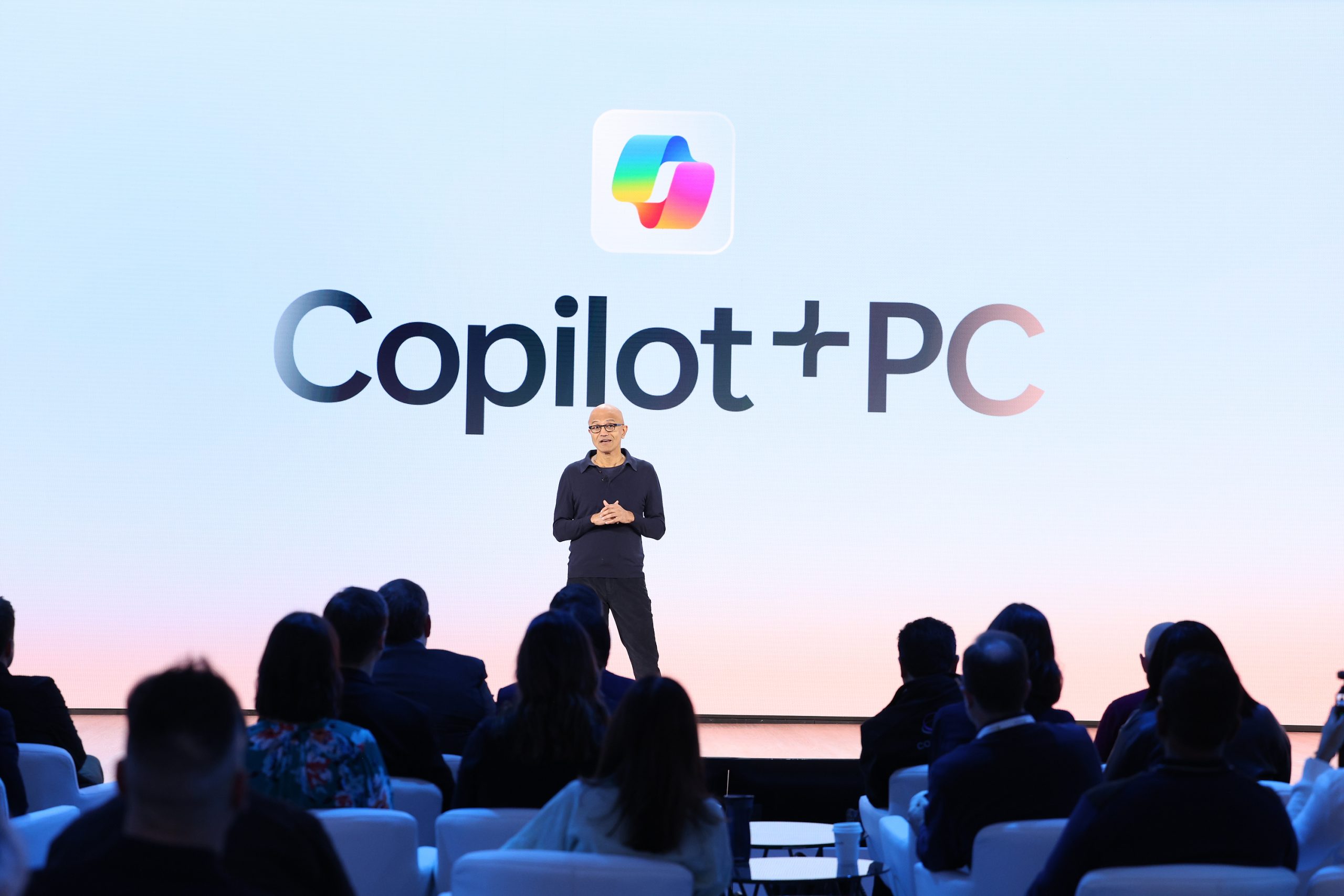
Yusuf Mehdi, executive vice president, Consumer chief marketing officer, Microsoft, on stage May 20, 2024, at an event in Redmond, Washington. (Photo by Dan DeLong for Microsoft)
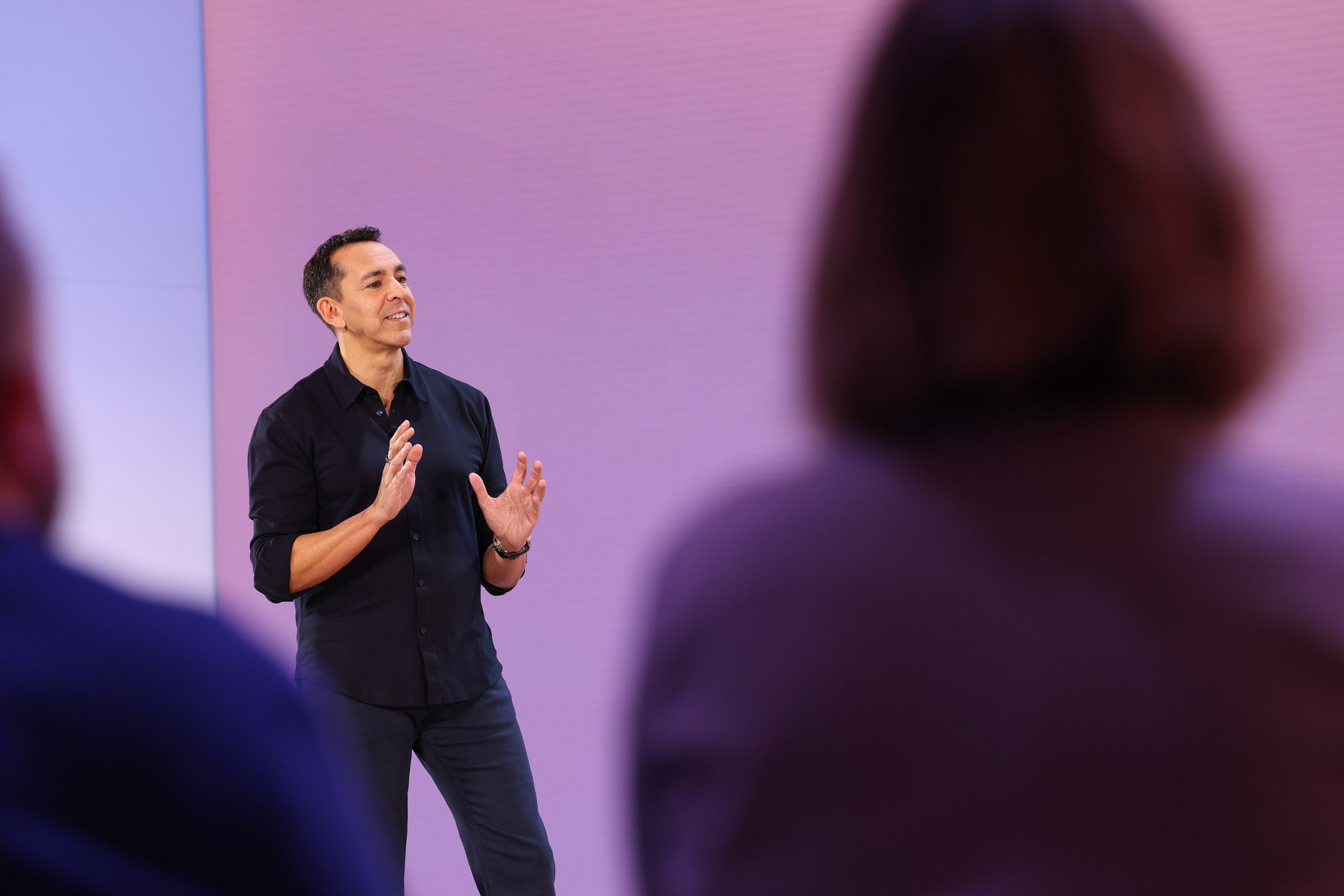
Carolina Hernandez, principal product manager, Windows AI Experiences, Microsoft, on stage May 20, 2024, at an event in Redmond, Washington. (Photo by Dan DeLong for Microsoft)

Carolina Hernandez, principal product manager, Windows AI Experiences, Microsoft, on stage May 20, 2024, at an event in Redmond, Washington.(Photo by Dan DeLong for Microsoft)g)

Pavan Davuluri, corporate vice president, Windows + Devices, Microsoft, on stage May 20, 2024, at an event in Redmond, Washington. (Photo by Dan DeLong for Microsoft)

Brett Ostrum, Head of Surface, Microsoft, presents the new Copilot+ PCs on stage May 20, 2024, at an event in Redmond, Washington. (Photo by Dan DeLong for Microsoft)
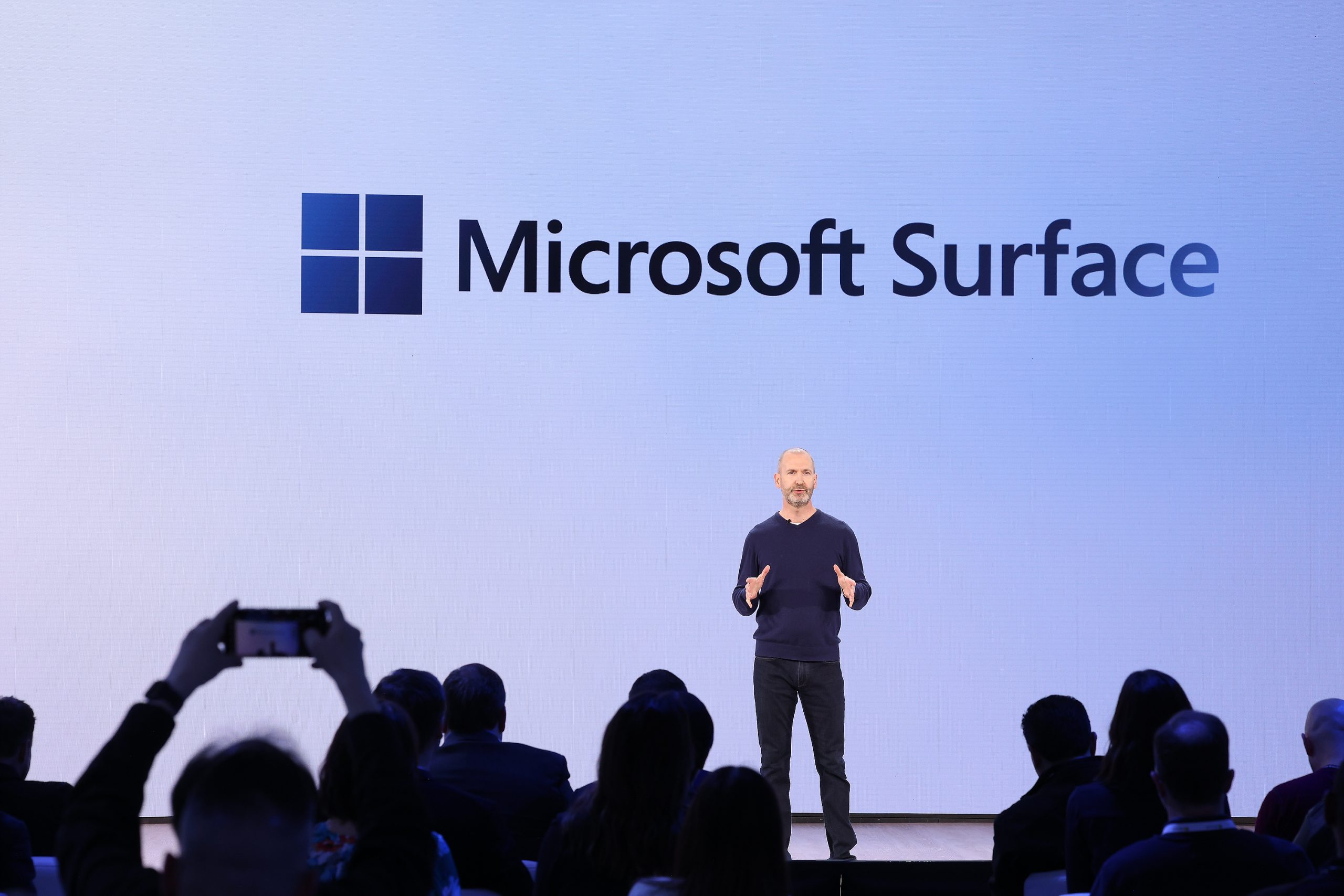
Brett Ostrum, Head of Surface, Microsoft, on stage May 20, 2024, at an event in Redmond, Washington. (Photo by Dan DeLong for Microsoft)
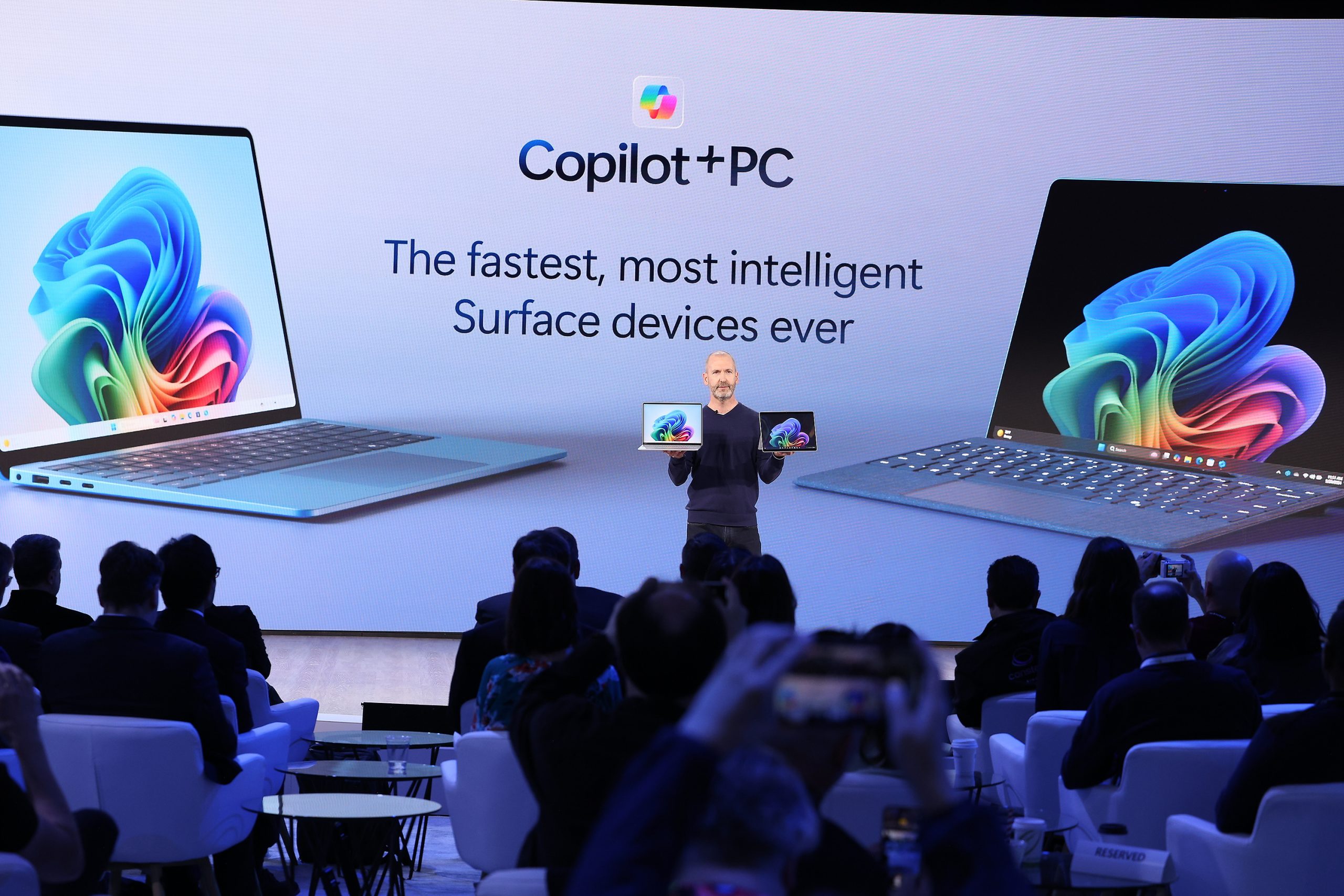
Adrienne Brewbaker, director, Microsoft Surface, on stage May 20, 2024, at an event in Redmond, Washington. (Photo by Dan DeLong for Microsoft)

Oyin Shenbanjo, senior product manager, Surface, Microsoft, on stage May 20, 2024, at an event in Redmond, Washington. (Photo by Dan DeLong for Microsoft)
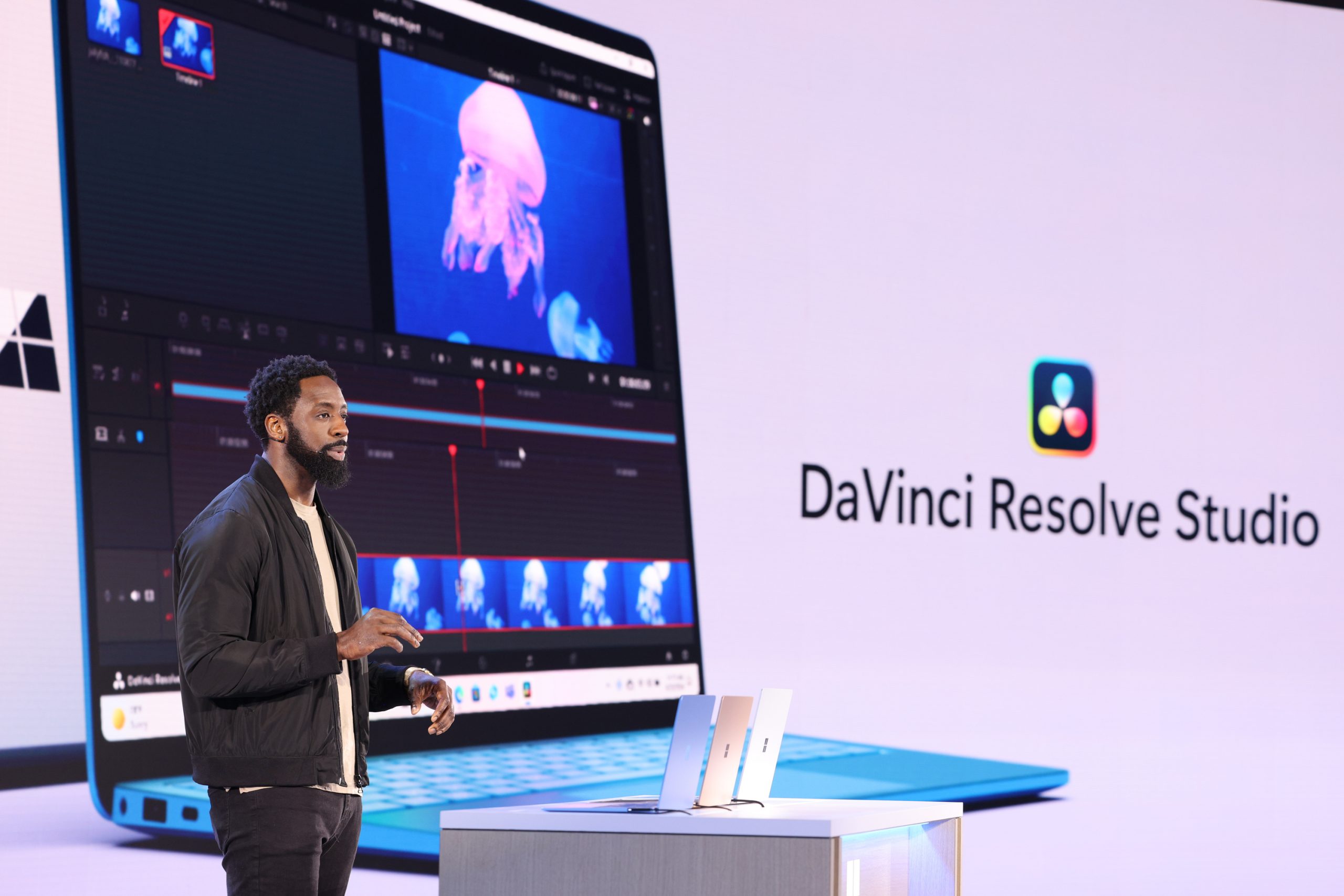
Erica Arnold, Senior Product Manager, Surface, Microsoft, on stage May 20, 2024, at an event in Redmond, Washington. (Photo by Dan DeLong for Microsoft)

Erica Arnold, Senior Product Manager, Surface, Microsoft, on stage May 20, 2024, at an event in Redmond. (Photo by Dan DeLong for Microsoft)

Surface Pro

Surface Pro Summary Sheet

Surface Pro Flex Keyboard

Surface Pro for Enterprise

Surface Laptop

Surface Laptop Summary Sheet

Surface Laptop for Enterprise

Surface Pro and Surface Laptop
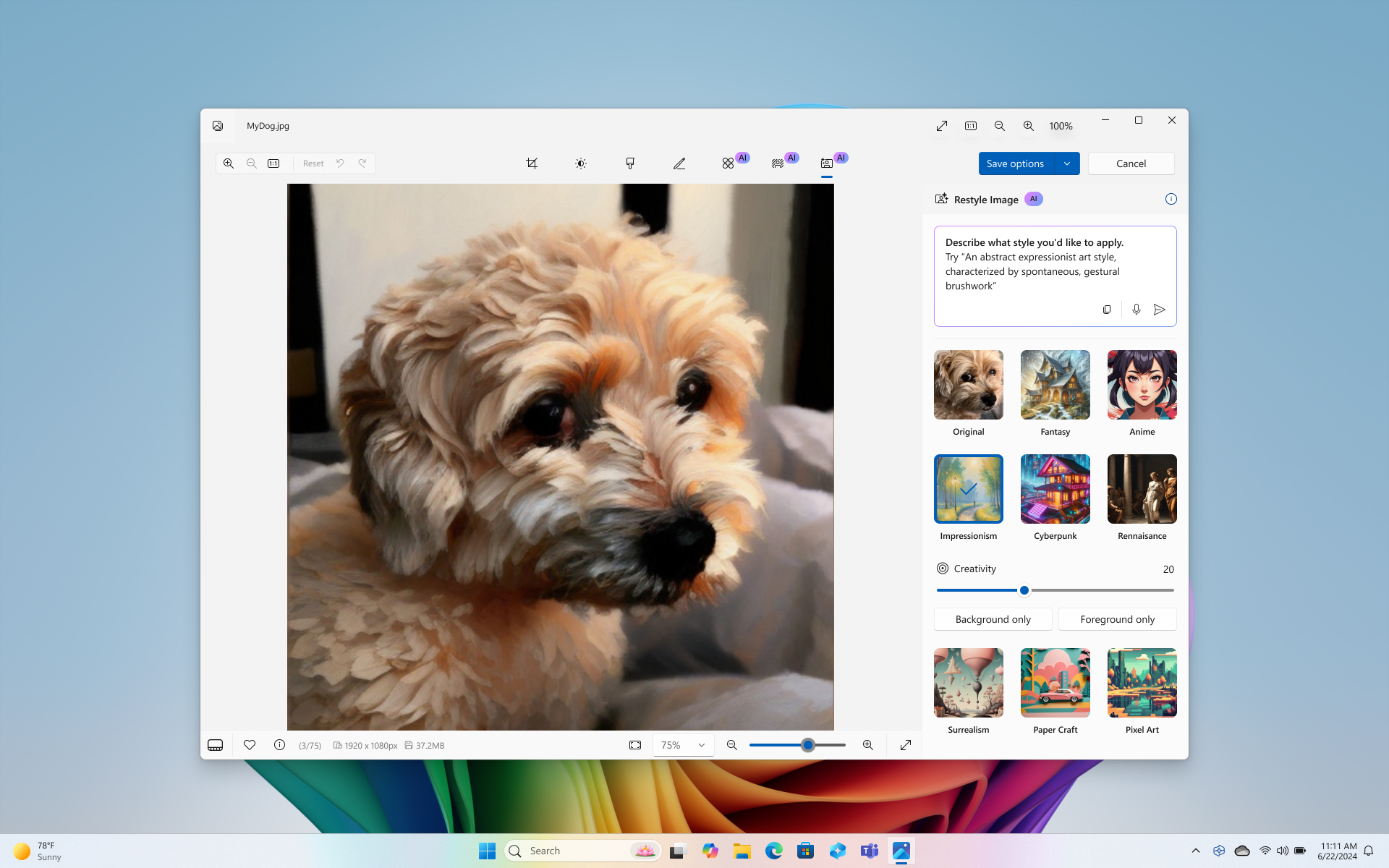
Restyle Image
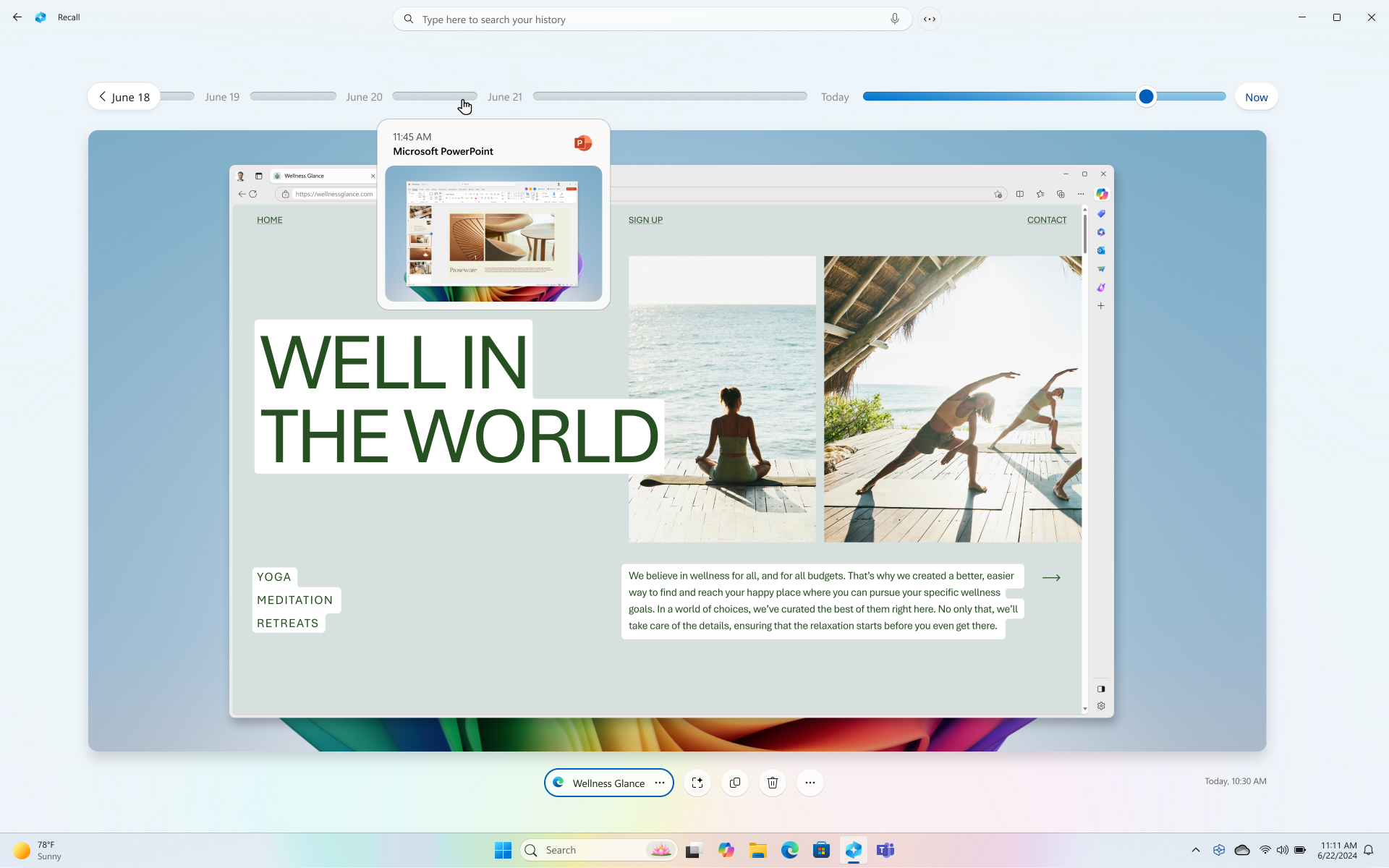
Neural Processing Unit (NPU)
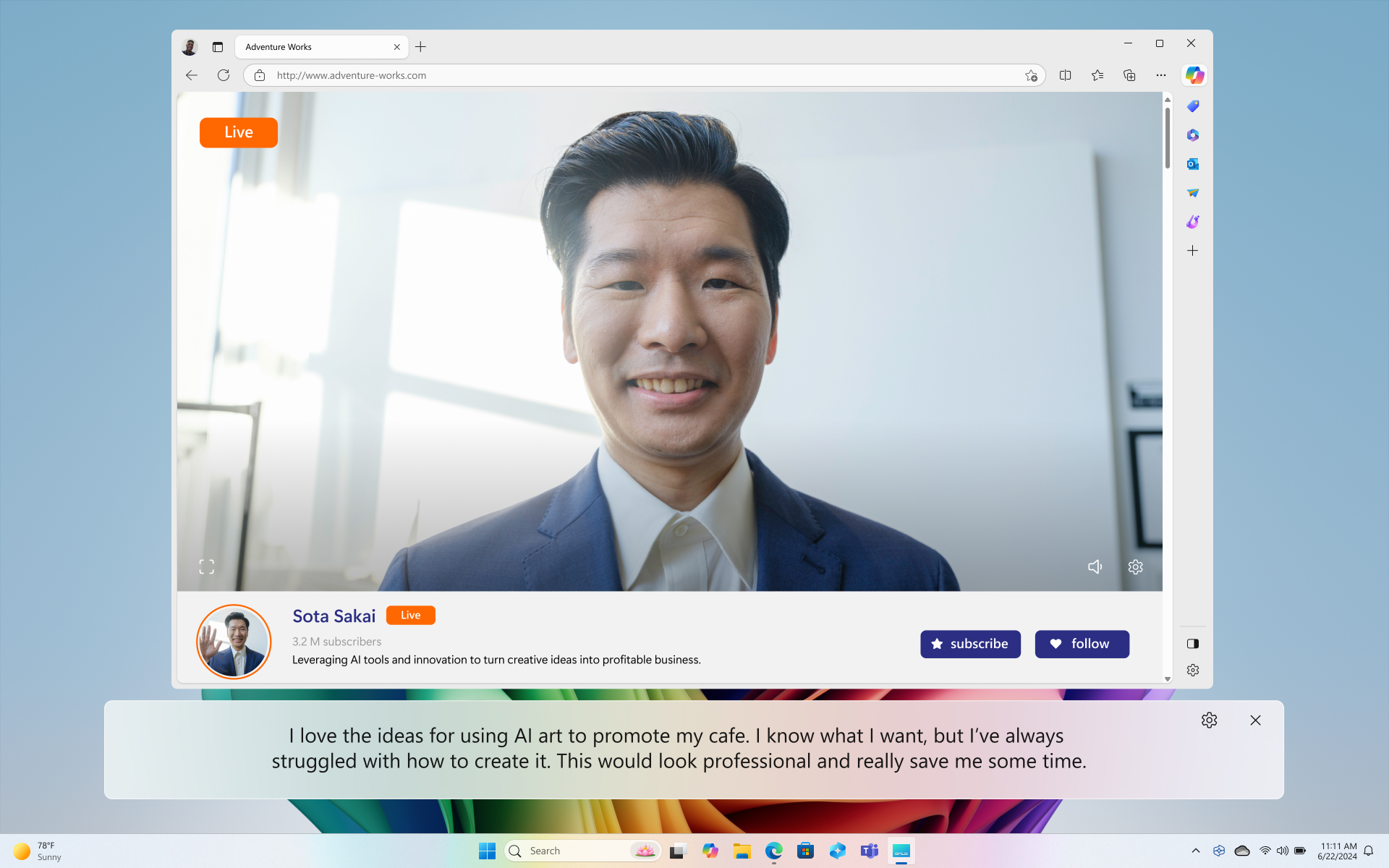
Live Captions
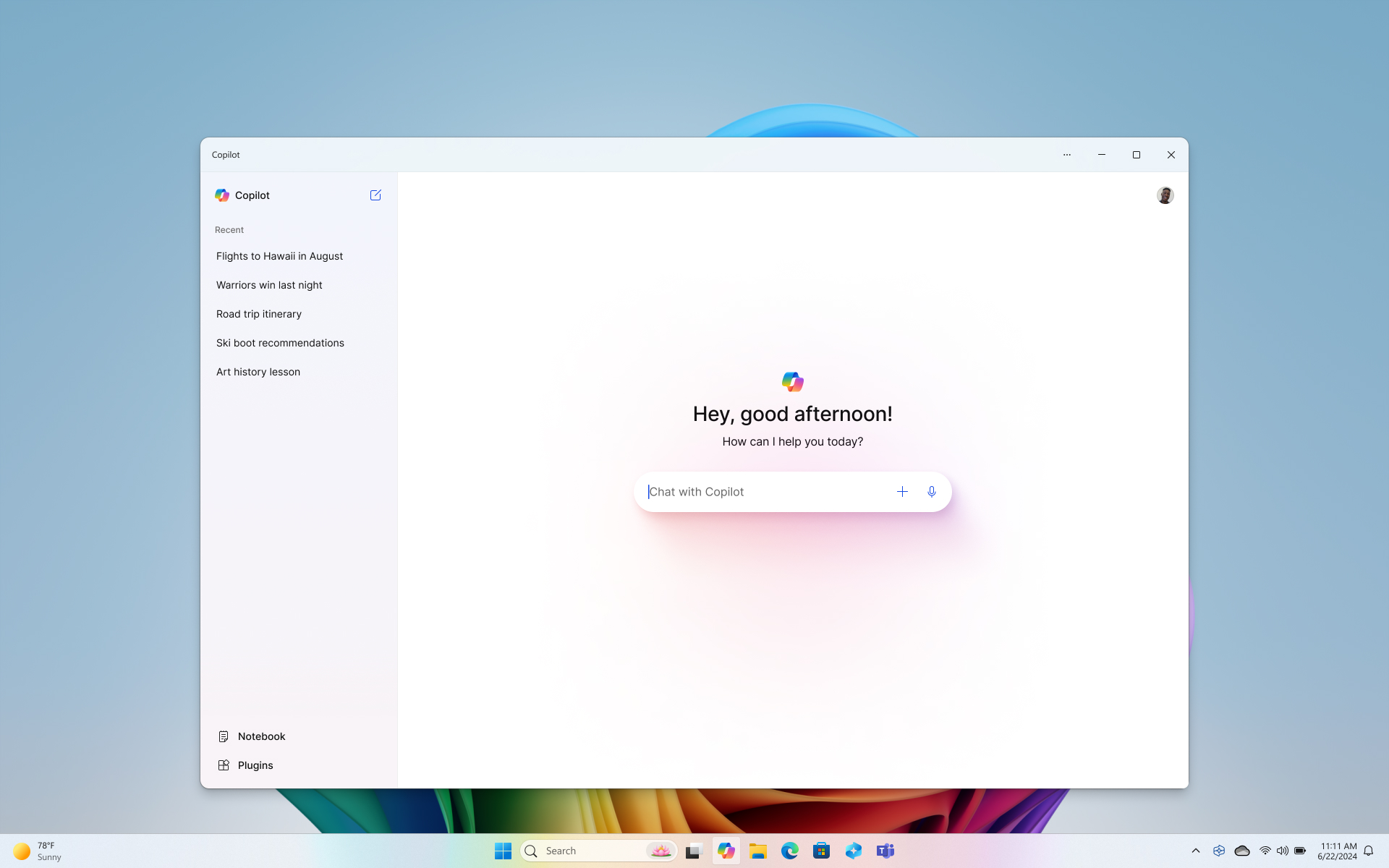
Copilot+ PCs videos

Meet the new Microsoft Surface Laptop
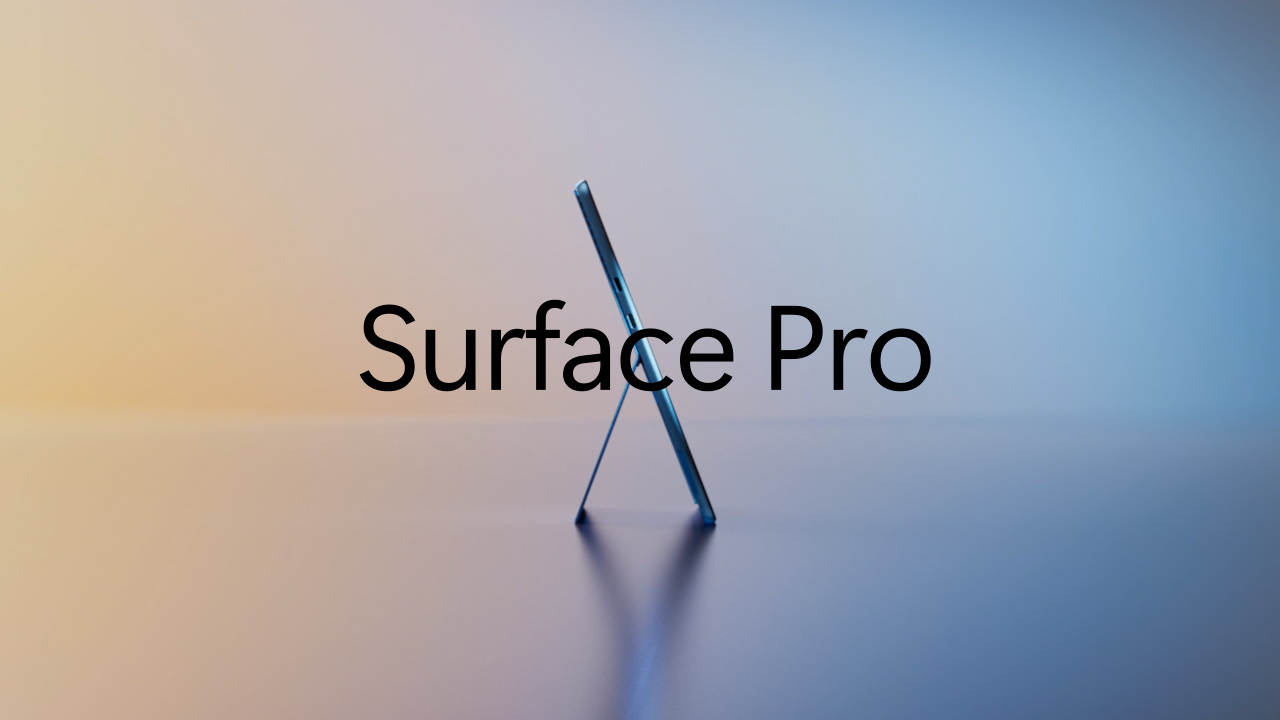
Meet the new Microsoft Surface Pro
Copilot+ pcs additional resources.
- Surface Laptop Fact Sheet
- Surface Pro Fact Sheet
- Accelerating AI in the workplace with the all-new Surface Laptop and Surface Pro
- New Copilot+ PCs bring partner opportunity
- Introducing Windows 11 Next Gen AI features on Copilot+ PCs
- Windows Next Generation AI device hardware requirements
- Copilot+ PC App Partner Summary
Partner press releases
- Dell press release
- HP press release
- Lenovo press release
- Acer press release
- ASUS press release
- Samsung press release
- Qualcomm press release
Share this page:
Thank you for visiting nature.com. You are using a browser version with limited support for CSS. To obtain the best experience, we recommend you use a more up to date browser (or turn off compatibility mode in Internet Explorer). In the meantime, to ensure continued support, we are displaying the site without styles and JavaScript.
- View all journals
- Explore content
- About the journal
- Publish with us
- Sign up for alerts
- 13 May 2024
Brain-reading device is best yet at decoding ‘internal speech’
- Miryam Naddaf
You can also search for this author in PubMed Google Scholar
Scientists have developed brain implants that can decode internal speech — identifying words that two people spoke in their minds without moving their lips or making a sound.
Access options
Access Nature and 54 other Nature Portfolio journals
Get Nature+, our best-value online-access subscription
24,99 € / 30 days
cancel any time
Subscribe to this journal
Receive 51 print issues and online access
185,98 € per year
only 3,65 € per issue
Rent or buy this article
Prices vary by article type
Prices may be subject to local taxes which are calculated during checkout
doi: https://doi.org/10.1038/d41586-024-01424-7
Wandelt, S. K. et al. Nature Hum. Behav . https://doi.org/10.1038/s41562-024-01867-y (2024).
Article Google Scholar
Download references
Reprints and permissions
Related Articles

- Medical research
- Neuroscience
Trials that infected people with common colds can inform today’s COVID-19 challenge trials
Correspondence 21 MAY 24

First ‘bilingual’ brain-reading device decodes Spanish and English words
News 21 MAY 24

Lab-grown sperm and eggs: ‘epigenetic’ reset in human cells paves the way

These crows have counting skills previously only seen in people
News 23 MAY 24

Seed-stashing chickadees overturn ideas about location memory
News & Views 23 MAY 24

Mapping model units to visual neurons reveals population code for social behaviour
Article 22 MAY 24

Neural pathways for reward and relief promote fentanyl addiction
News & Views 22 MAY 24

AI networks reveal how flies find a mate
Recruitment of Global Talent at the Institute of Zoology, Chinese Academy of Sciences (IOZ, CAS)
The Institute of Zoology (IOZ), Chinese Academy of Sciences (CAS), is seeking global talents around the world.
Beijing, China
Institute of Zoology, Chinese Academy of Sciences (IOZ, CAS)
Full Professorship (W3) in “Organic Environmental Geochemistry (f/m/d)
The Institute of Earth Sciences within the Faculty of Chemistry and Earth Sciences at Heidelberg University invites applications for a FULL PROFE...
Heidelberg, Brandenburg (DE)
Universität Heidelberg
Postdoc: deep learning for super-resolution microscopy
The Ries lab is looking for a PostDoc with background in machine learning.
Vienna, Austria
University of Vienna
Postdoc: development of a novel MINFLUX microscope
The Ries lab is developing super-resolution microscopy methods for structural cell biology. In this project we will develop a fast, simple, and robust
Postdoctoral scholarship in Structural biology of neurodegeneration
A 2-year fellowship in multidisciplinary project combining molecular, structural and cell biology approaches to understand neurodegenerative disease
Umeå, Sweden
Umeå University
Sign up for the Nature Briefing newsletter — what matters in science, free to your inbox daily.
Quick links
- Explore articles by subject
- Guide to authors
- Editorial policies
General Election 2024: What happens now an election has been called?
What is the dissolution of parliament? How does it happen? Are there any MPs during a campaign? What happens on polling day?

Political reporter @alixculbertson
Thursday 23 May 2024 11:08, UK
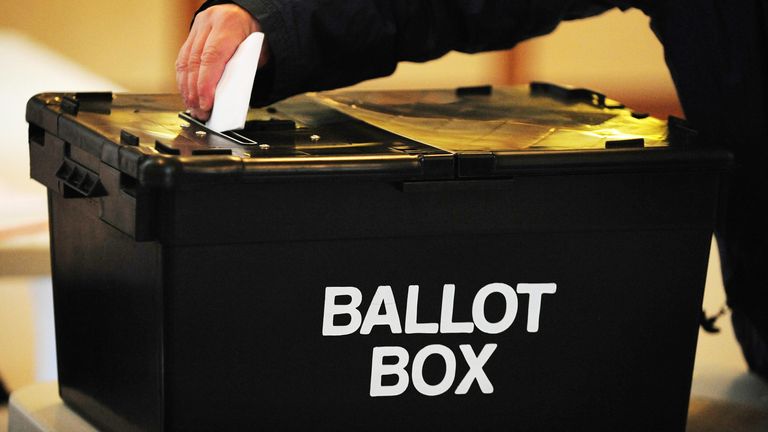
Rishi Sunak has called a general election for this summer.
The prime minister has been saying for months he would call a vote for the "second half of the year", and it will now be held on Thursday, 4 July.
Under the Dissolution and Calling of Parliament Act 2022, Mr Sunak had until 17 December this year to call an election - as votes must be held no more than five years apart.
Sky News looks at what happens now.
General election latest: Rishi Sunak to call election for 4 July
Requesting permission to dissolve parliament
The prime minister has already requested permission from the King to hold a general election, as the power to dissolve parliament - end the session - legally lies with him.
More on General Election 2024

General election: 'Spineless' Starmer accused of dodging weekly TV debates

Rishi the 'underdog' must get out of his comfort zone to get his message across

Tory minister asked whether she could submit no confidence letter after PM announced election, Sky News understands
Related Topics:
- General Election 2024
Parliament must be "dissolved" for an election to officially take place. Polling day then takes place 25 working days after that date.
Mr Sunak said in a speech outside Downing Street on Wednesday that the King had granted his request to dissolve parliament.
As a result, parliament will be prorogued on Friday, 24 May, while dissolution will take place on Thursday, 30 May.

What happens in parliament after an election is called?
There is usually a period of several days, known as "wash-up", between an election being called and the dissolution of parliament.
During "wash-up", parliament will continue as normal, but any parliamentary business not completed by the end of that time will not enter into law and cannot be continued into the next parliament.

Keep up with all the latest news from the UK and around the world by following Sky News
This normally leads to a rush to pass legislation through parliament to get it onto the statute book, which often means parties having to work together to agree on which bills they will support.
The longest "wash-up" period since 1992 was in 2017 when parliament sat for a further seven days after the election was called, according to Institute for Government (IfG) analysis.
What happens after parliament is dissolved?
Once parliament is dissolved, there are no longer any MPs as every seat in the House of Commons becomes vacant.
House of Lords members retain their positions, but no more business happens until the next parliament begins.
Be the first to get Breaking News
Install the Sky News app for free

Government ministers remain in post until a new government is formed.
However, government activity is restricted during the campaign period to ensure public money is not used to support the campaign of the party in power and to maintain civil service impartiality.
Restrictions normally begin when parliament has been dissolved, however, they can start before this, as they did in 2017.

The campaign
Campaigning never stops for political parties, but it will ramp up after an election is announced.
Parties, their candidates, and supporters, will promote their policies during the campaign period by publishing informative material, knocking on doors to talk to people, writing newspaper articles, and supporters putting posters in their windows or placards in their front gardens.
There is no set time for when manifestos explaining the parties' pledges have to be launched, but they generally happen within a few days of each other.

Since 1997, Labour and Conservative manifestos have been launched between 18 and 29 days before the election, the IfG found.
Televised debates between party leaders or other politicians became a feature of campaigns in 2010.
Their timing and format are negotiated between political parties and broadcasters, but there is no obligation for any of them to take part.

Polling day
Registered voters can submit postal votes before the day, but most people go to polling stations, which are open from 7am until 10pm.
This will be the first general election where photographic ID will be required to vote.
When voting closes, an exit poll is announced following a survey of voters taken from about 150 constituencies in England, Scotland and Wales.
What happens after the election?
If the current government retains a majority in the new Parliament after an election, it will continue in office and resume normal business.
If the election results in a clear majority for a different party, the incumbent prime minister and government will immediately resign, and the King will invite the leader of the party that has won the election to form a government.
Please use Chrome browser for a more accessible video player

It becomes slightly more complicated if the result is a hung parliament.
The current government remains in office unless and until the prime minister tenders his and the government's resignation to the King.
The government is entitled to await the meeting of the new parliament to see if it can command the confidence of the House of Commons or to resign if it becomes clear that it is unlikely to command that confidence.
👉 Listen above then tap here to follow the Sky News Daily wherever you get your podcasts 👈
They could also be forced to resign if they lose a vote of no confidence, at which point, the person who appears to be most likely to command the confidence of the House of Commons will be asked by the Monarch to form a government.
In terms of dates, the new Parliament will be summoned to meet on Tuesday, 9 July, when the first business will be the election of the speaker and the swearing-in of members.
The state opening of Parliament will be on Wednesday, 17 July.
Related Topics

IMAGES
VIDEO
COMMENTS
By finishing your speech in this way, your new team will leave the meeting on a high and feeling positive about their new manager. Show that you will support your team. Conclude with a positive message. Example: I am sure that we can work well together and I know that you are all capable of a great deal.
When sharing your story, remember to keep it brief. You can provide more details about yourself during one-on-one meetings with your new team. 6. Set expectations. After telling your team about yourself, you can discuss what you hope to accomplish at work and what your intentions are for the team.
How to introduce yourself to a new team. Send a positive message or email introducing yourself. Schedule a team meeting. Start with an icebreaker or by sharing a fun fact. Talk about your professional background and experience. Open the floor for questions from the team. Write an "about me" or "read me" page.
Blueprint for Your New Manager's Speech ... Collection your recent employees together in an right setting - perhaps the corporate, an open-plan meeting area or your new office, depending on the context and the size of the team. Make sure you look the part - a sharp suit are always good, use a slight creative twist if appropriate. ...
Saying goodbye to an old colleague and manager can be depressing, but getting to know a new manager in a company is an exciting and important event. As this involves the company as a whole who will be knowing someone who is going to lead them. For a new manager to introduce themselves through a speech is the best way to express how they feel about the new role and how they want to be seen ...
User guides aren't just for managers, either! Inspiring your team members in create their own user guides for a fun way the learn additional about them. 7Calendar one-on-one meetings to couple is each individual. Schedule a one-on-one with each of your new team elements to meet them and address any questions alternatively concerns they may ...
The first step to calmly approaching your first day as a boss is to introduce yourself. The first step in introducing yourself as a new boss is to make a good impression. This means behaving professionally and showing enthusiasm for your work. Establishing a relationship of respect and trust with employees is key to success in the position.
Try to find stories or previous experiences that can indirectly show your personal values without stating them directly. All of this shouldn't take more than 15% of the full speech time. 4) Give ...
Introducing Yourself as the New Manager. Summary. When forming first impressions, people usually evaluate two factors: competence and trustworthiness. If the initial impressions your team members ...
As a new manager, building rapport with your team is key. ... Opening up this floor for faq is healthy consult for any while you've achieved a bunch of eye on you, including your manager introduction. ... Speech for Joining a Company as a New Head. Example of an introduction. Even with the beyond advice, introductions may still be challenging ...
The first thing we want to offer is a statement of excitement. Basically, "I am so excited to meet you. I'm so excited to get to know you. I'm so excited to be working together.". We can ...
The new manager needs to get information, meet the people and get out into the market. That learning process takes time. In the meantime, the fears of employees come to the fore--and fear ...
Offer support and guidance for their growth and development. Discuss your management style and values, setting clear expectations. Encourage open communication and feedback. Schedule regular check-ins to maintain a healthy working relationship. 10 Examples: How to Request One-on-One Meeting with a Manager.
Specifically, as a new leader, you'll want to internalize these goals for your first meeting: Show you're worthy of your team's trust. Show that you're humble and ready to learn. Show that you're intention is that you want to help. This may feel like a passive approach to your new leadership role at first.
One of the most important new manager tips when starting a new job is to have a staff meeting. This is an ideal setting to give your first day as a manager speech. Use your staff meeting to encourage everyone to participate and engage in conversation. Here is a sample agenda of a first staff meeting: Opening introductions of you and your staff.
Specifically, as a new leader, you'll want to internalize these goals for your first meeting: Show you're worthy of your team's trust. Show that you're humble and ready to learn. Show that ...
1. Break the ice with your new team members. This is your new team's first time attending one of your meetings — and, in some cases, may even be their first time meeting you. As mentioned, there may be some curiosity, apprehension, or nerves floating around.
The elevator stopped at the 9th floor and a man in a suit got out. The young woman I was speaking with nodded. "Second, goals and accountability. Sometimes managers think of goal-setting as just a ...
Here are key points you might put into your message: It is an honor and privilege for me to be here today and be your new leader. I've heard much about you and it's exciting for me and my family to become part of your team. I don't know most of you, but from what I've heard, you've done some amazing work.
8. Bring The Right Energy. The most important thing to make a speech memorable, aside from a clear, concise message, is energy. The energy you exude while giving a speech transfers to the audience ...
1 Celebrate wins. Set a positive tone for your meeting by encouraging attendees to celebrate big and small wins. For example, the host could begin by congratulating the group on the recent success of a project, acknowledging a new hire, or giving an individual praise for leading a specific task.
Analyze their response and tweak the joke accordingly if necessary. Starting your speech with humour means your setting the tone of your speech. It would make sense to have a few more jokes sprinkled around the rest of the speech as well as the audience might be expecting the same from you. 4. Mohammed Qahtani.
Kansas City Chiefs kicker Harrison Butker railed against LGBTQ rights, diversity initiatives and President Joe Biden in a divisive speech at a small Catholic college in Kansas. Then he brought ...
Opening Remarks to U.S. House Committee on Education and the Workforce Speech. Good morning. Chairwoman Foxx, Ranking Member Scott, and members of the Committee, my name is Gene Block and I am the Chancellor at the University of California, Los Angeles. ... As a Jewish kid growing up in the Catskills region of New York, in a family with ...
For crying out loud, what did Butker say to warrant such a response, as opposed to, say, "That's none of our business — the faith of players is their call.". And, because the self-evident ...
An order of nuns affiliated with Benedictine College rejected Kansas City Chiefs kicker Harrison's Butker's comments in a commencement speech there last weekend that stirred up a culture war skirmish.
264. Nationwide is handing a £100 bonus to members as the building society seeks to show it is different to "big banks". The mutual is to spend £344m on the payout under its Fairer Share ...
New Khan Academy and Microsoft partnership expands access to AI tools for teachers ... Open Video: Satya Nadella at Microsoft Build 2024 ... principal product manager, Windows AI Experiences, Microsoft, on stage May 20, 2024, at an event in Redmond, Washington.(Photo by Dan DeLong for Microsoft)g) ...
Illustration showing the supramarginal gyrus (orange), a region of the brain involved in speech. Credit: My Box/Alamy. Scientists have developed brain implants that can decode internal speech ...
Wednesday 22 May 2024 22:55, UK. Pic: PA. Why you can trust Sky News. Rishi Sunak has called a general election for this summer. The prime minister has been saying for months he would call a vote ...